The decade following the Stock Market Crash of 1929 was defined by the Great Depression, and Times Square’s character shifted dramatically. The lavish excess of the Roaring Twenties vanished, replaced by a grittier atmosphere where New Yorkers sought cheap distractions from their economic hardships.
Broadway on a Budget
The economic crisis devastated the live theater industry. Many of the grand, legitimate theaters that had thrived in the 1920s went bankrupt and were forced to close. Those that survived had to slash ticket prices to attract audiences. In place of extravagant musical comedies, people flocked to more affordable forms of entertainment.
Movie palaces like the Paramount, Roxy, and Radio City Music Hall (which opened in 1932) became the dominant attractions. For the price of a single ticket, a person could watch a double feature, a newsreel, and a cartoon, escaping into the world of Hollywood glamour for several hours. Penny arcades, cheap diners like the Automat, and grueling dance marathons—where desperate couples danced for days to win prize money—also became popular fixtures of the area.
Read more
The End of Prohibition and the Rise of Burlesque
A major legal change occurred in 1933 with the repeal of Prohibition. Bars and taverns could now operate legally, bringing the sale of alcohol out of hidden speakeasies and into public view. This change contributed to a less exclusive, more raucous nightlife scene.
Many struggling Broadway theaters were converted into burlesque houses, which offered risqué variety shows featuring striptease dancers. The most famous of these was Minsky’s Republic Theatre on 42nd Street. Burlesque became one of the most popular and controversial forms of entertainment in 1930s Times Square, signaling a definitive shift from the high-society glamour of the previous decade to a more low-brow and sensational form of amusement.
A Hub for News and Advertising
Even in hard times, Times Square remained a center for advertising and public information. Enormous, technologically advanced billboards continued to loom over the streets. A famous sign for Camel cigarettes, installed in 1941 but representative of the era’s technology, featured a man who blew giant, perfect smoke rings over the crowd every four seconds.
The electric news zipper on the Times Tower was a crucial source of information for the public. Throughout the decade, crowds gathered to read headlines about the Depression, Franklin D. Roosevelt’s New Deal policies, and the rising political tensions in Europe. In September 1939, these crowds stood watching the zipper as it announced the beginning of World War II.


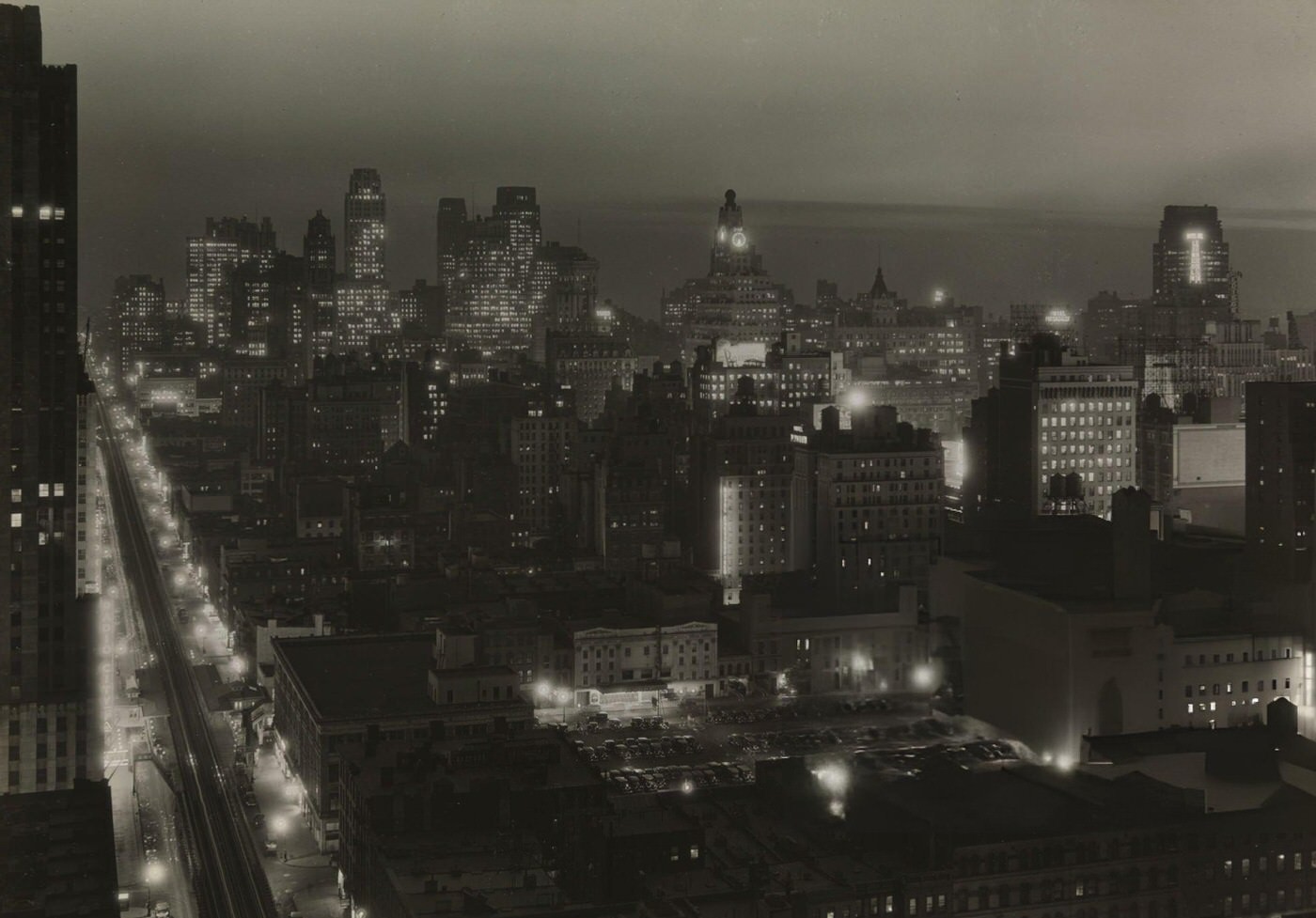
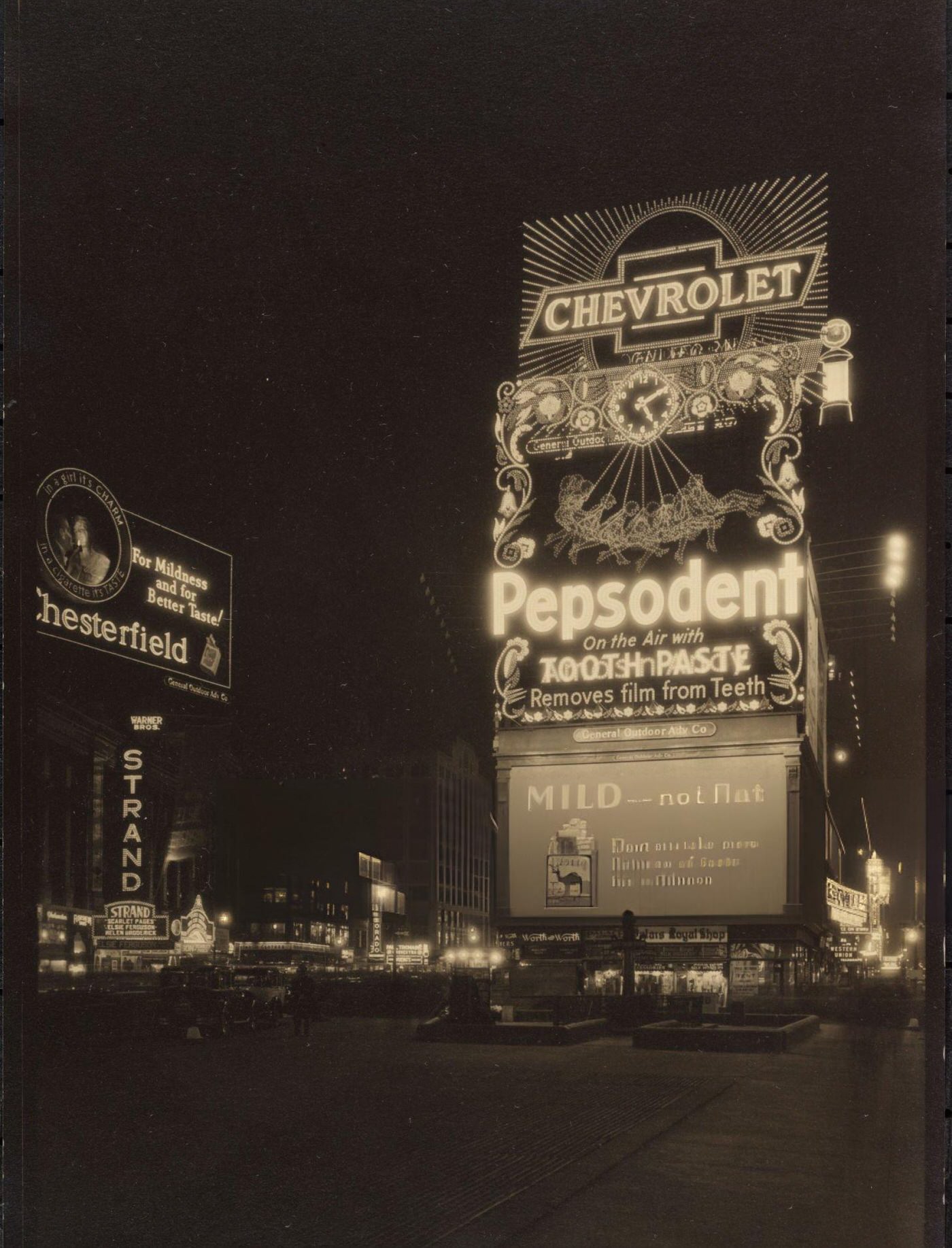
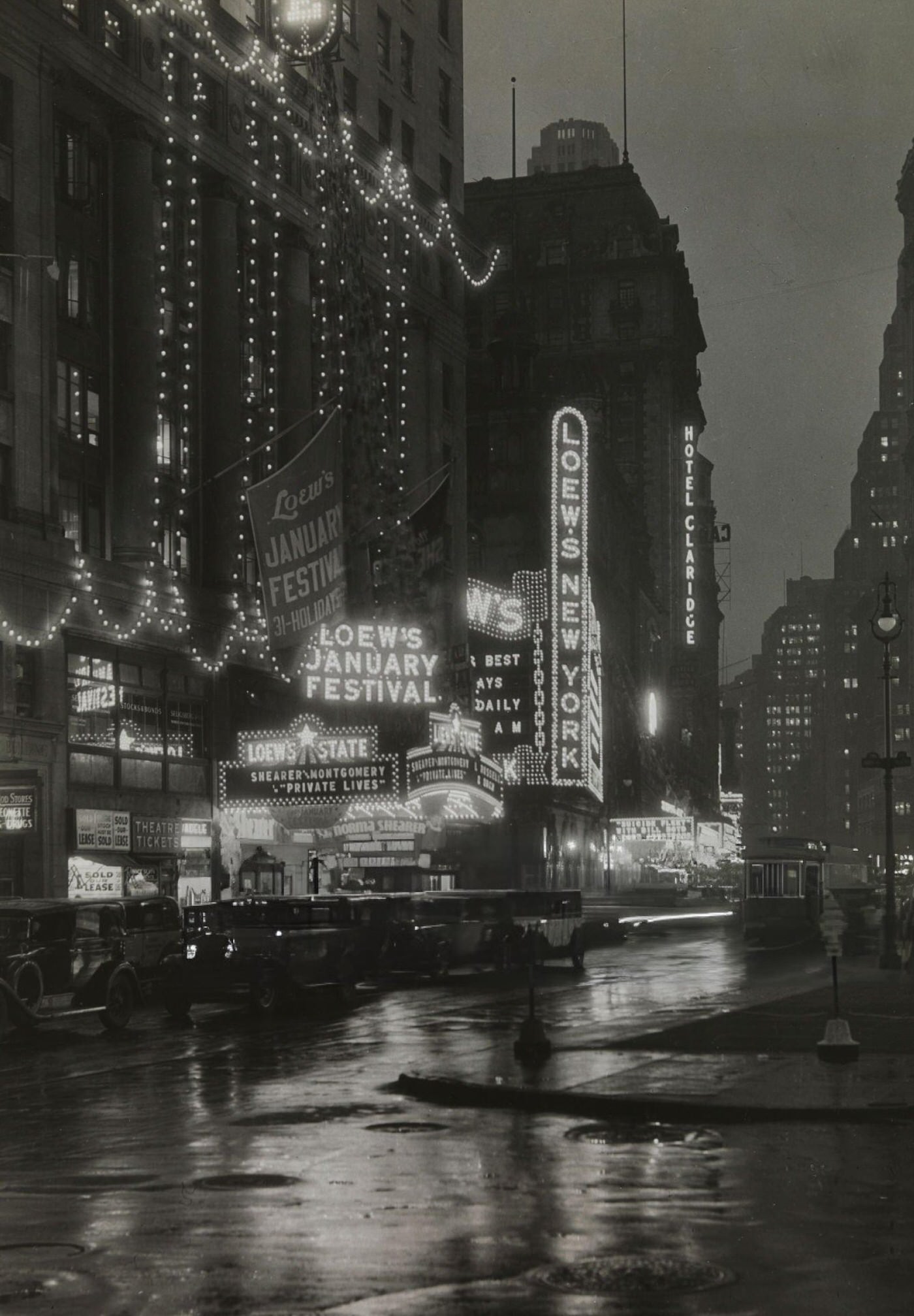
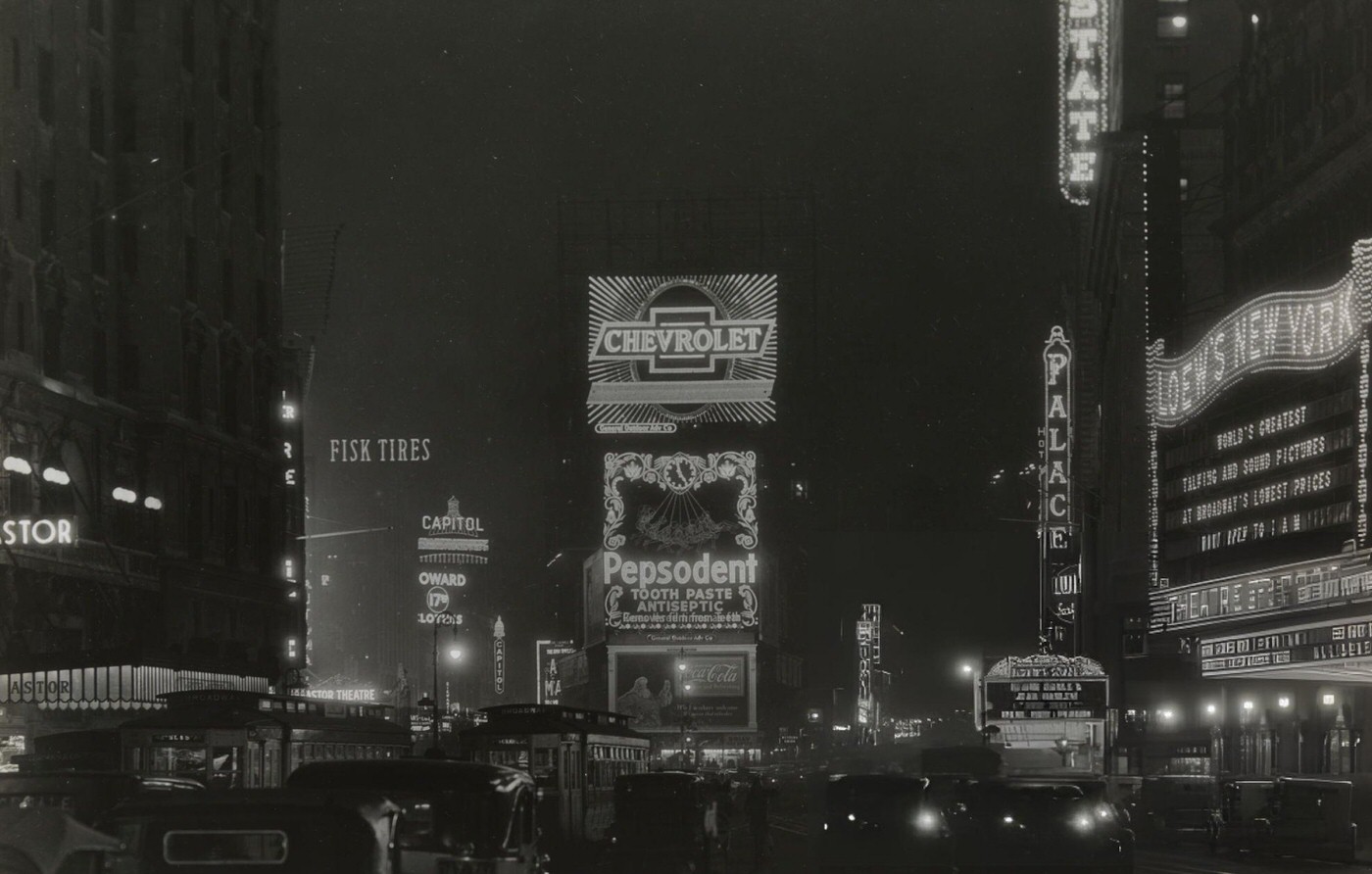
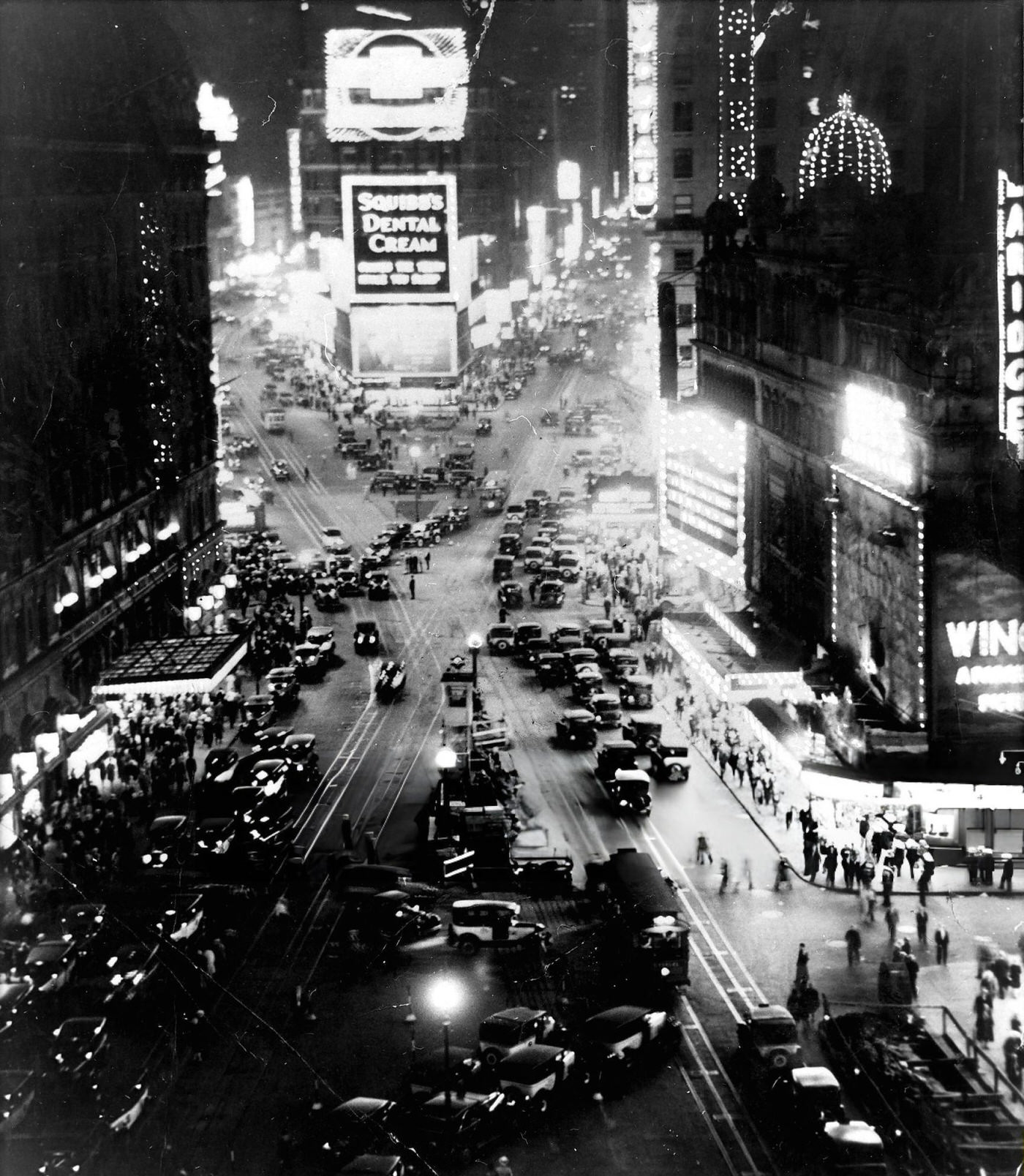

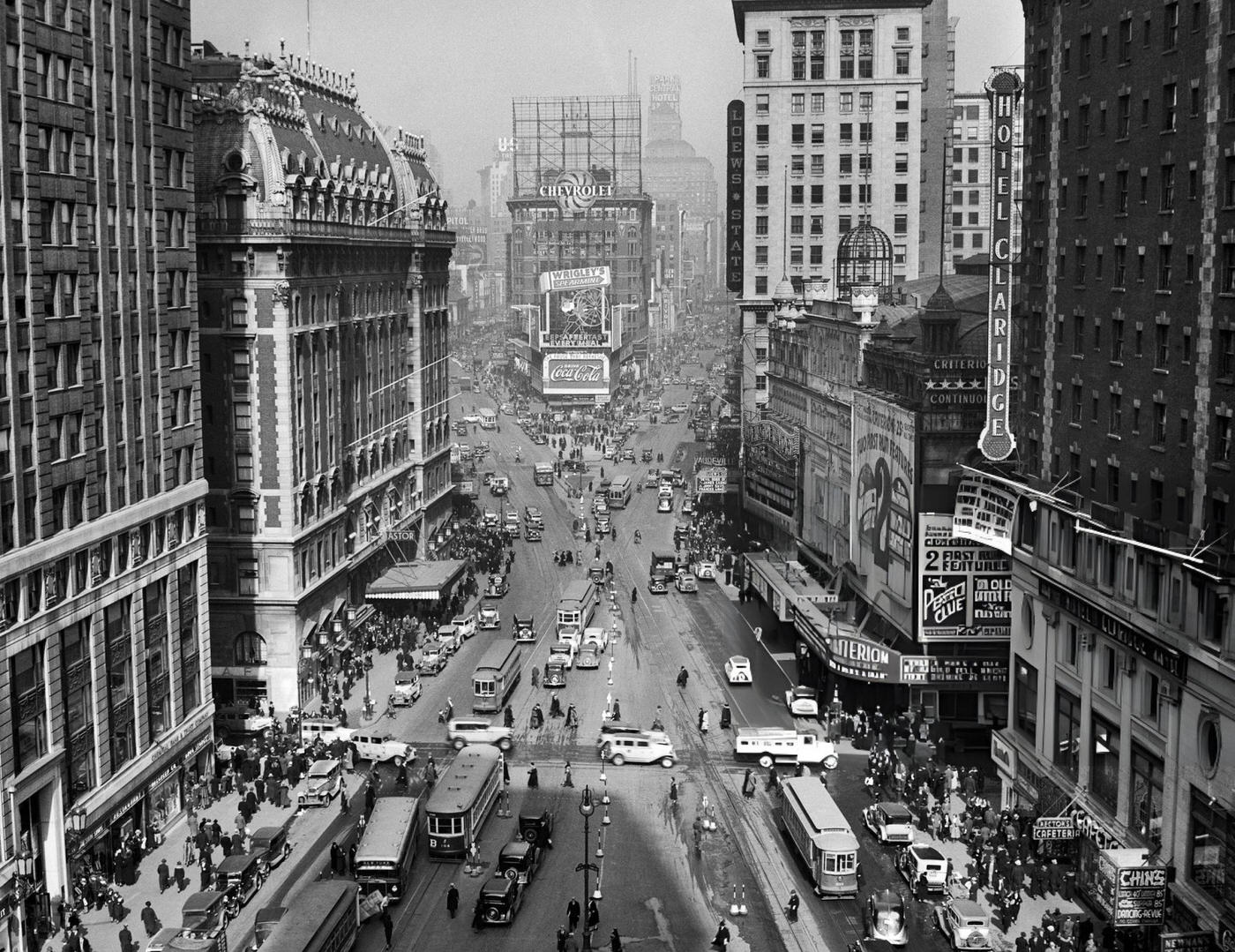
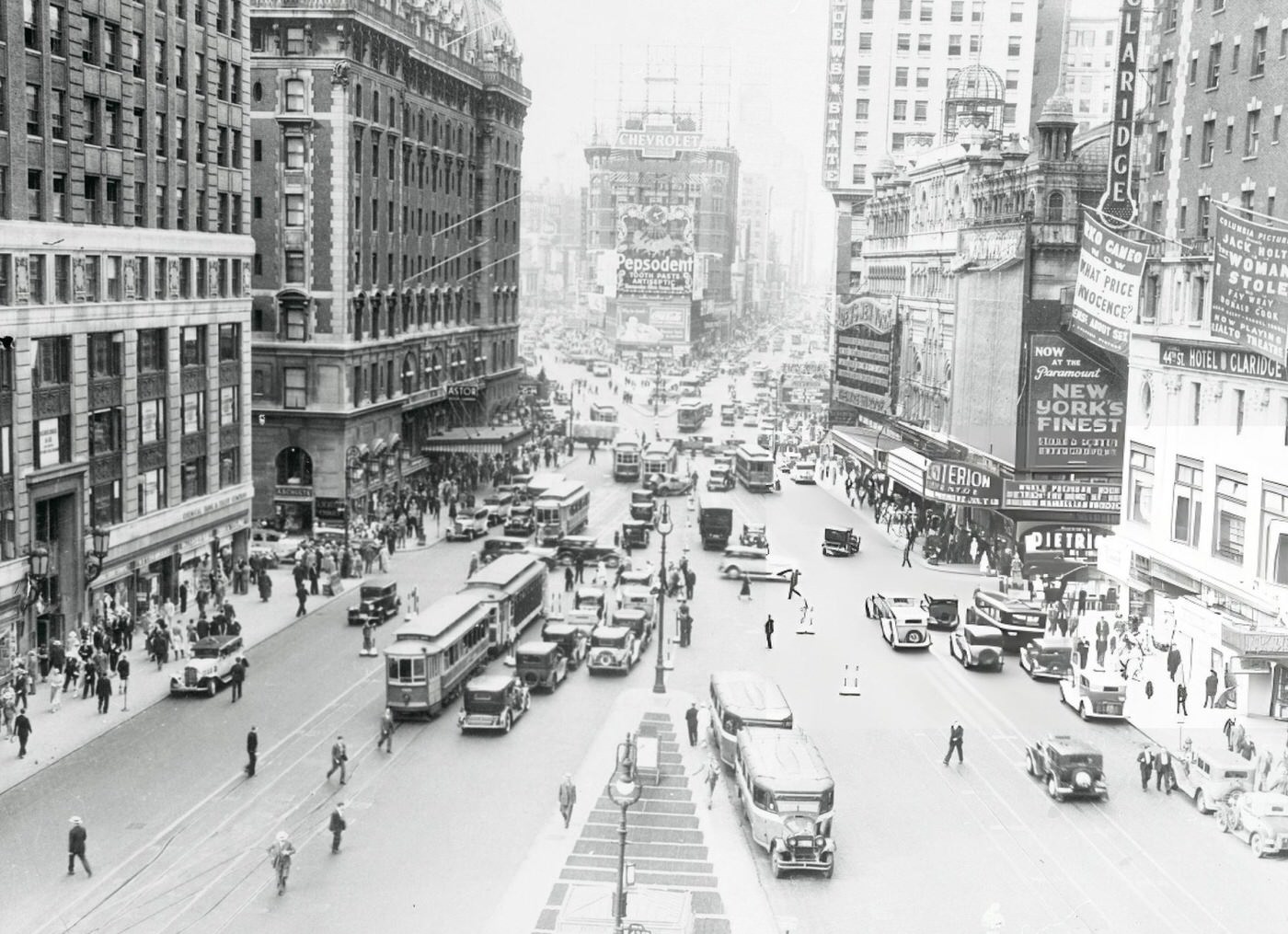





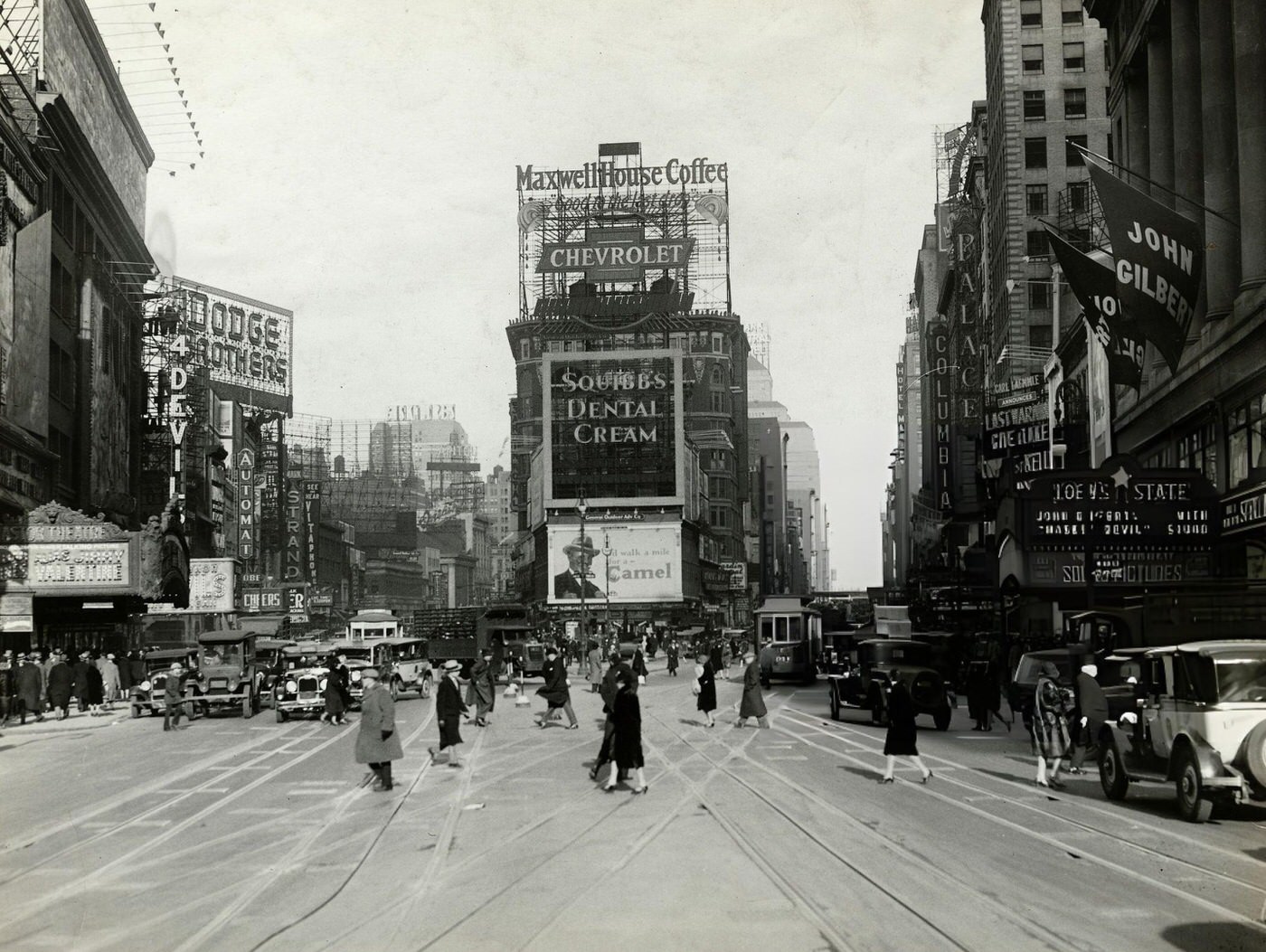



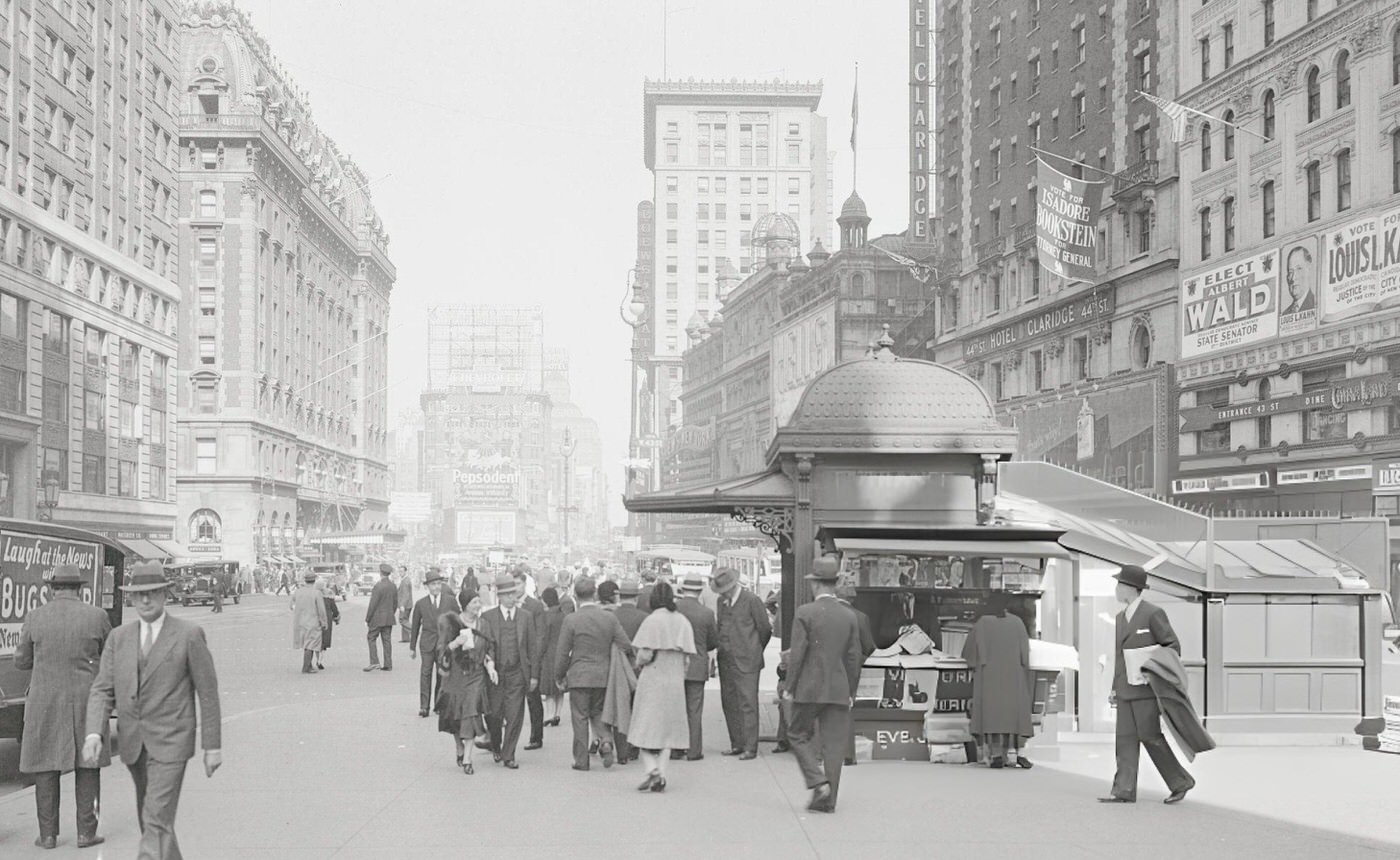
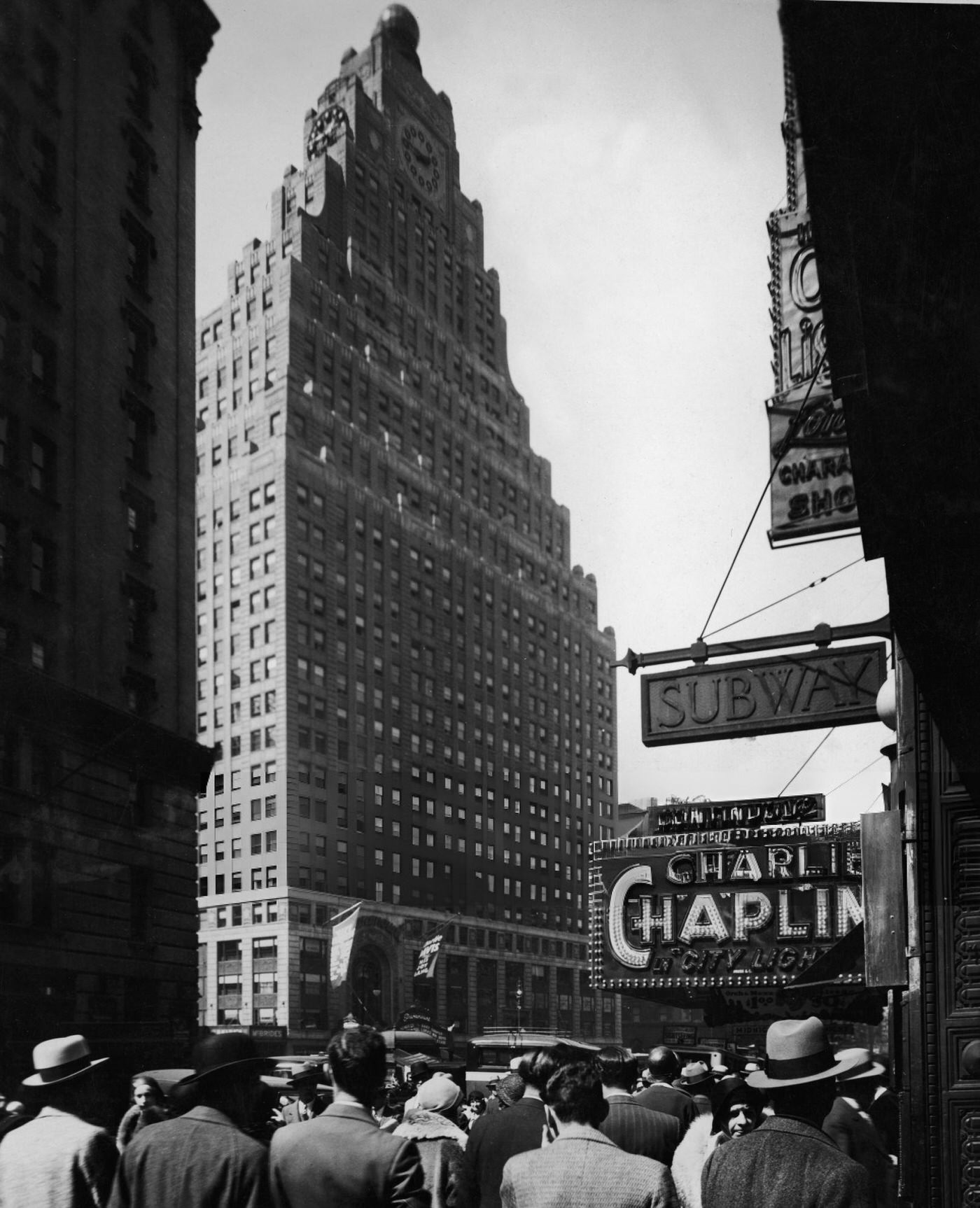



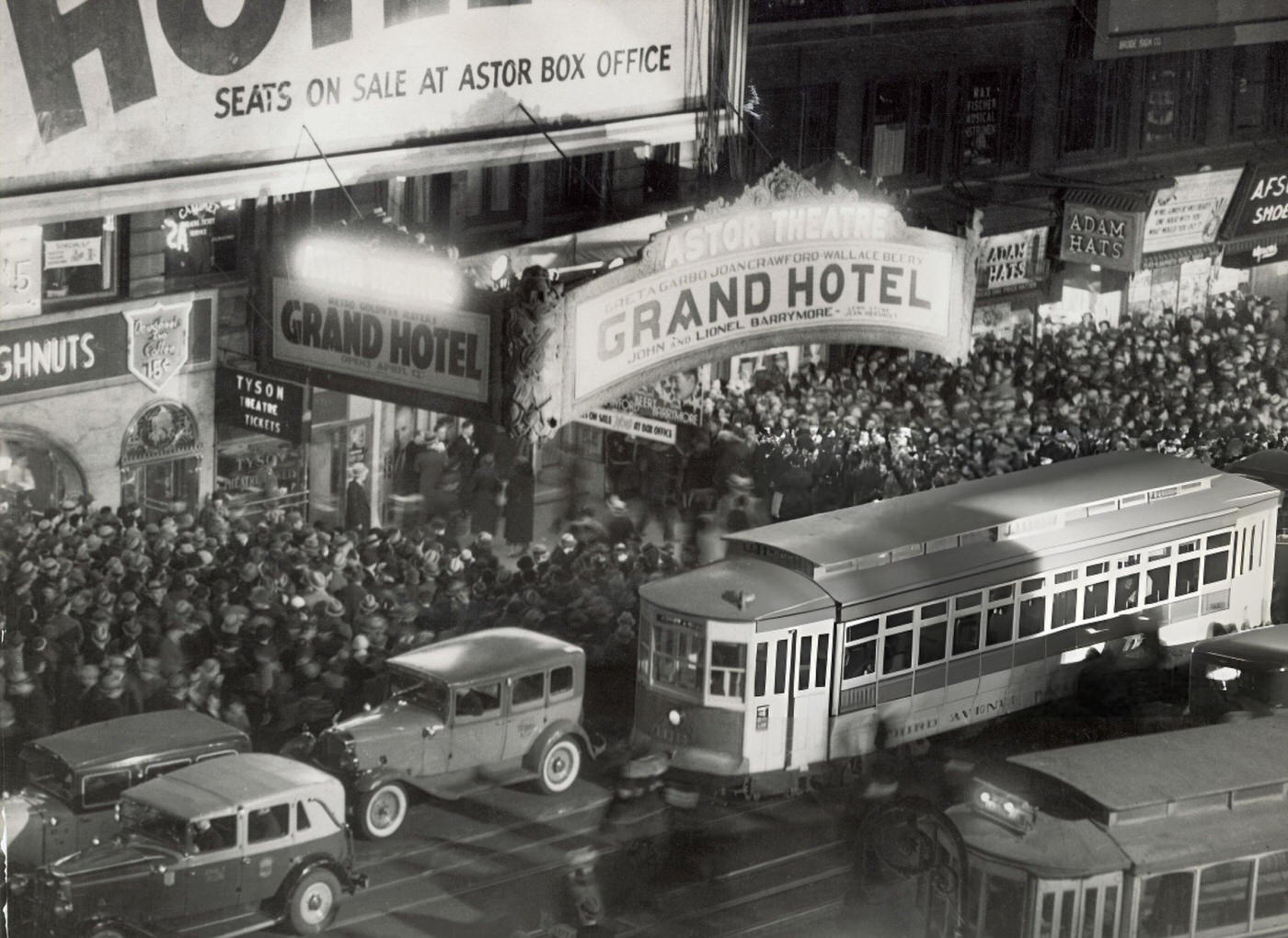
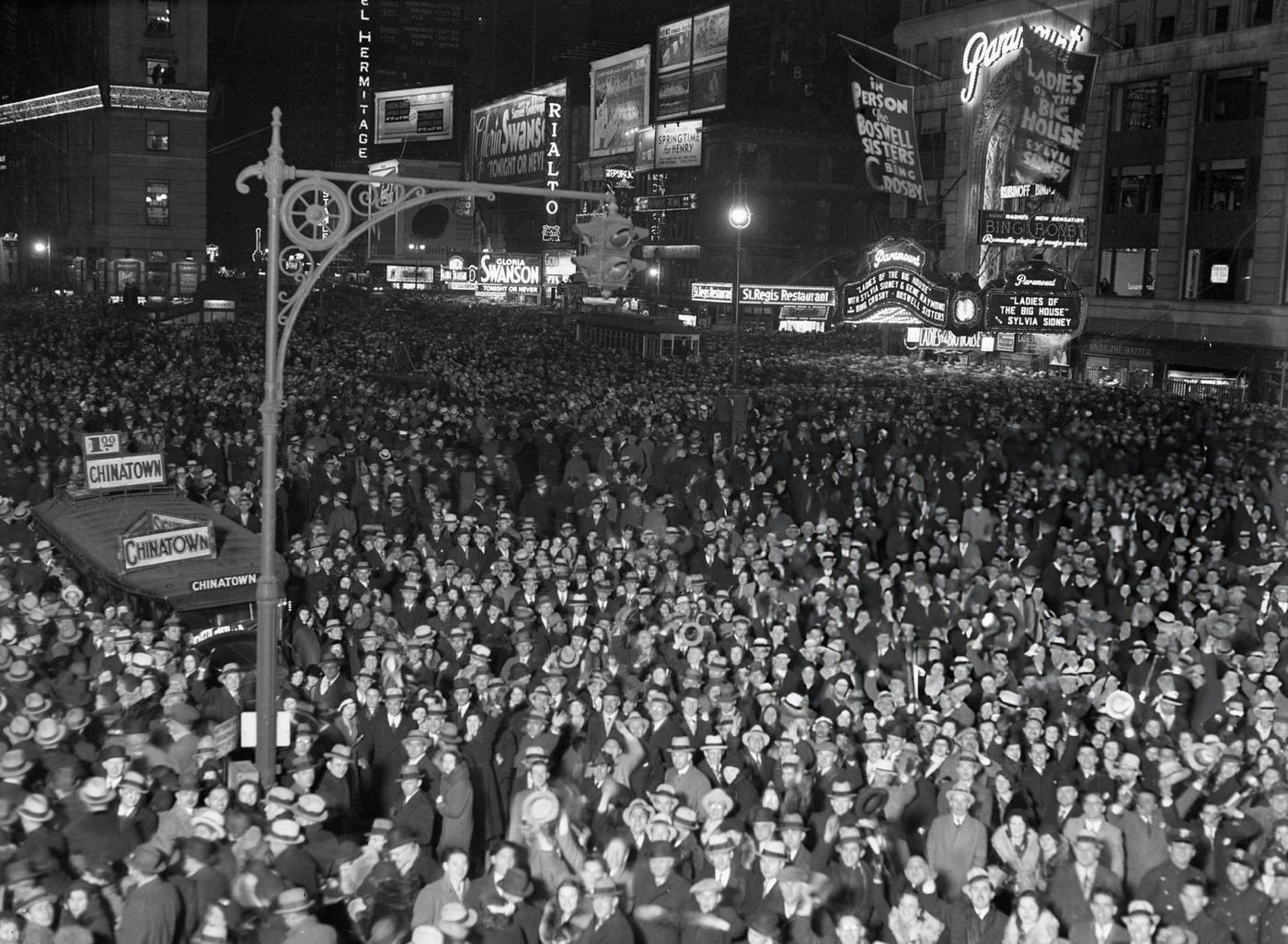
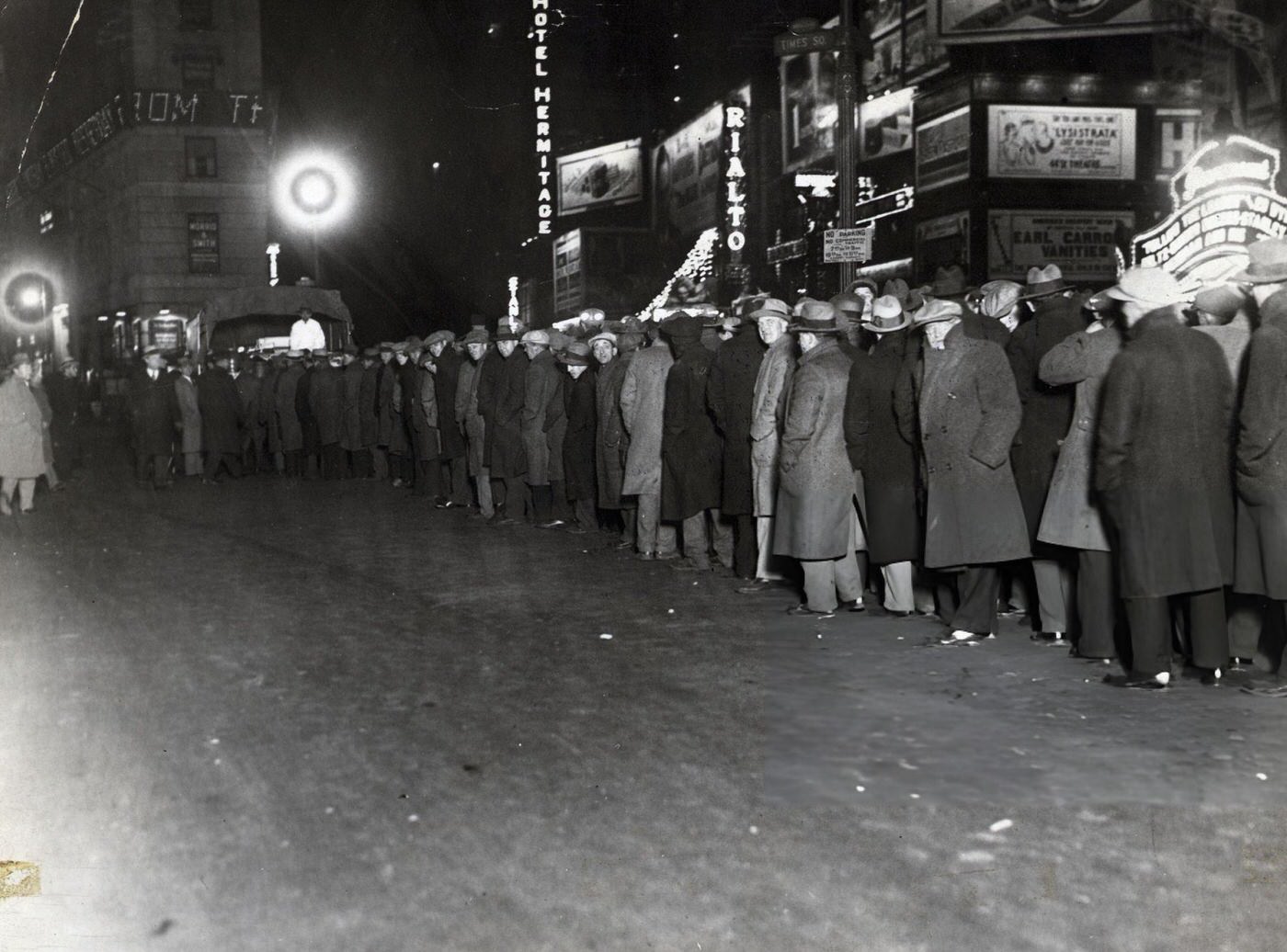

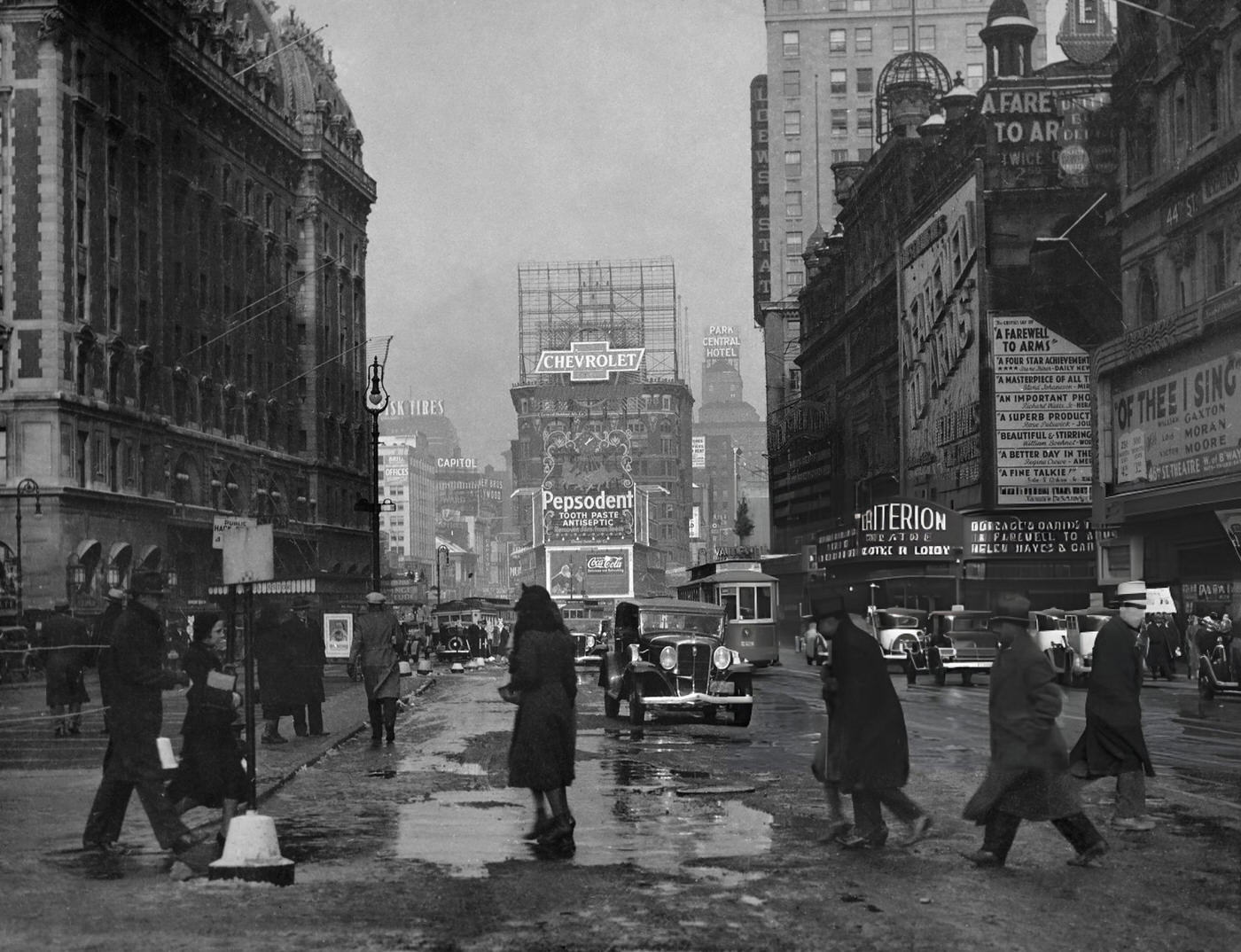

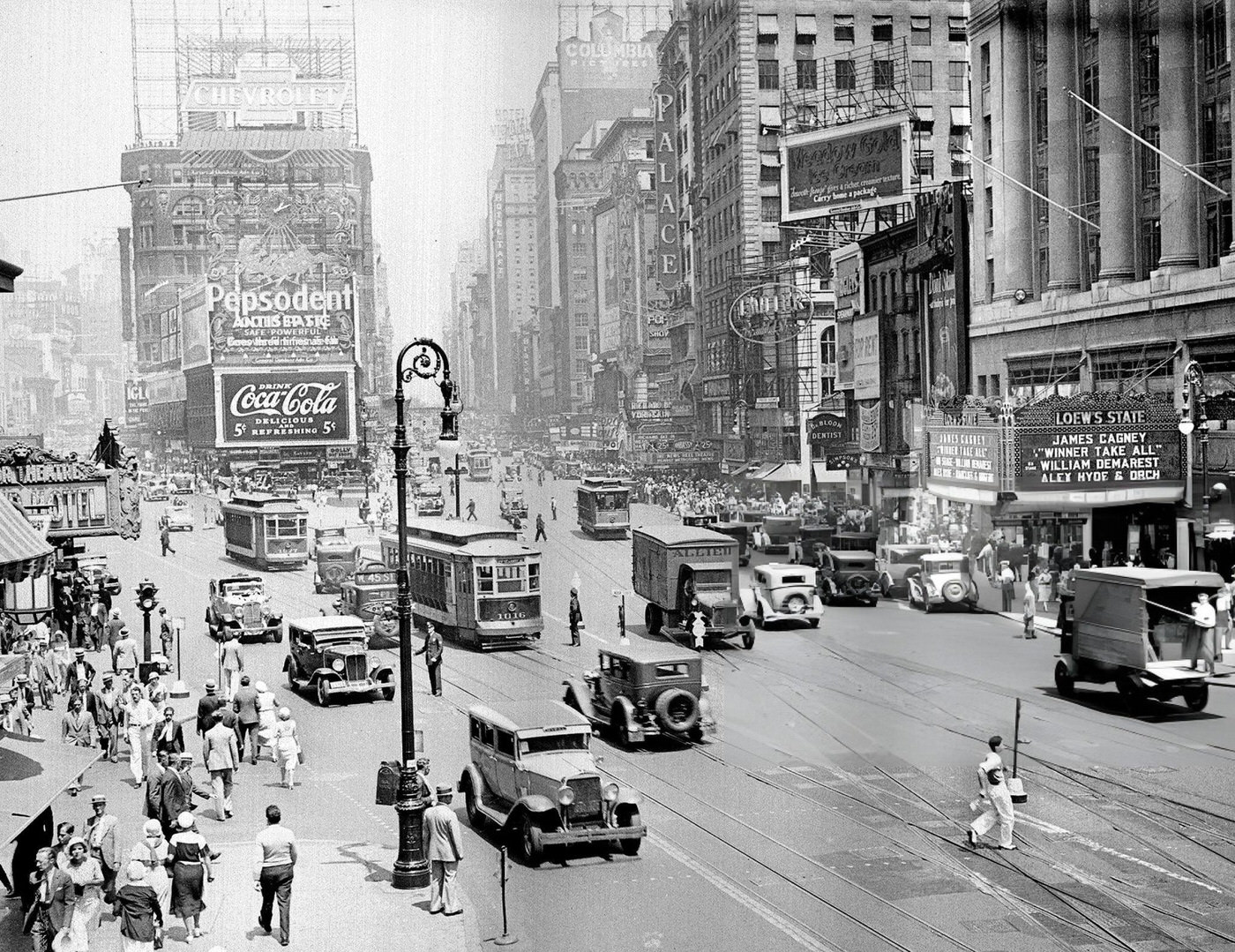

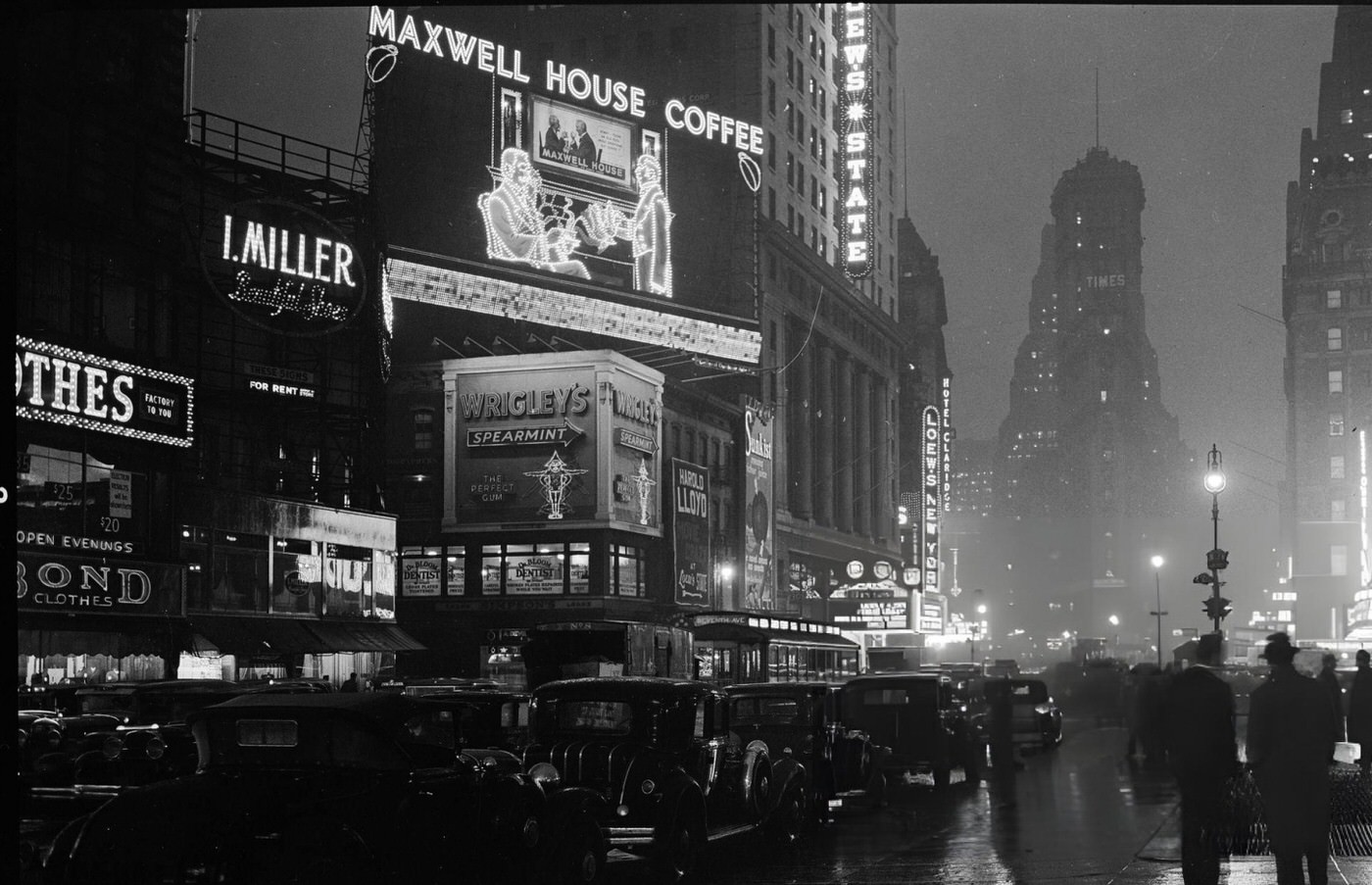
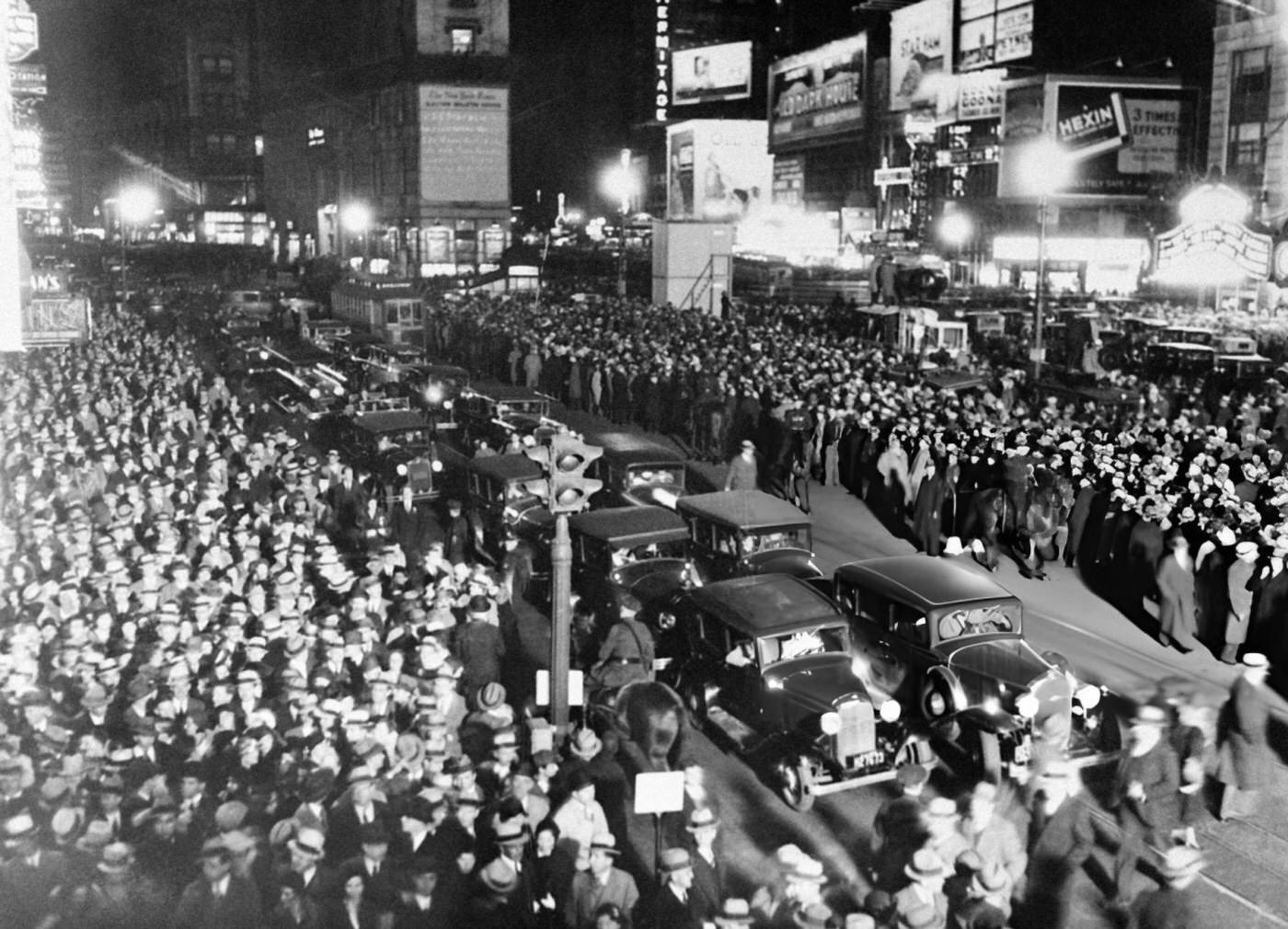

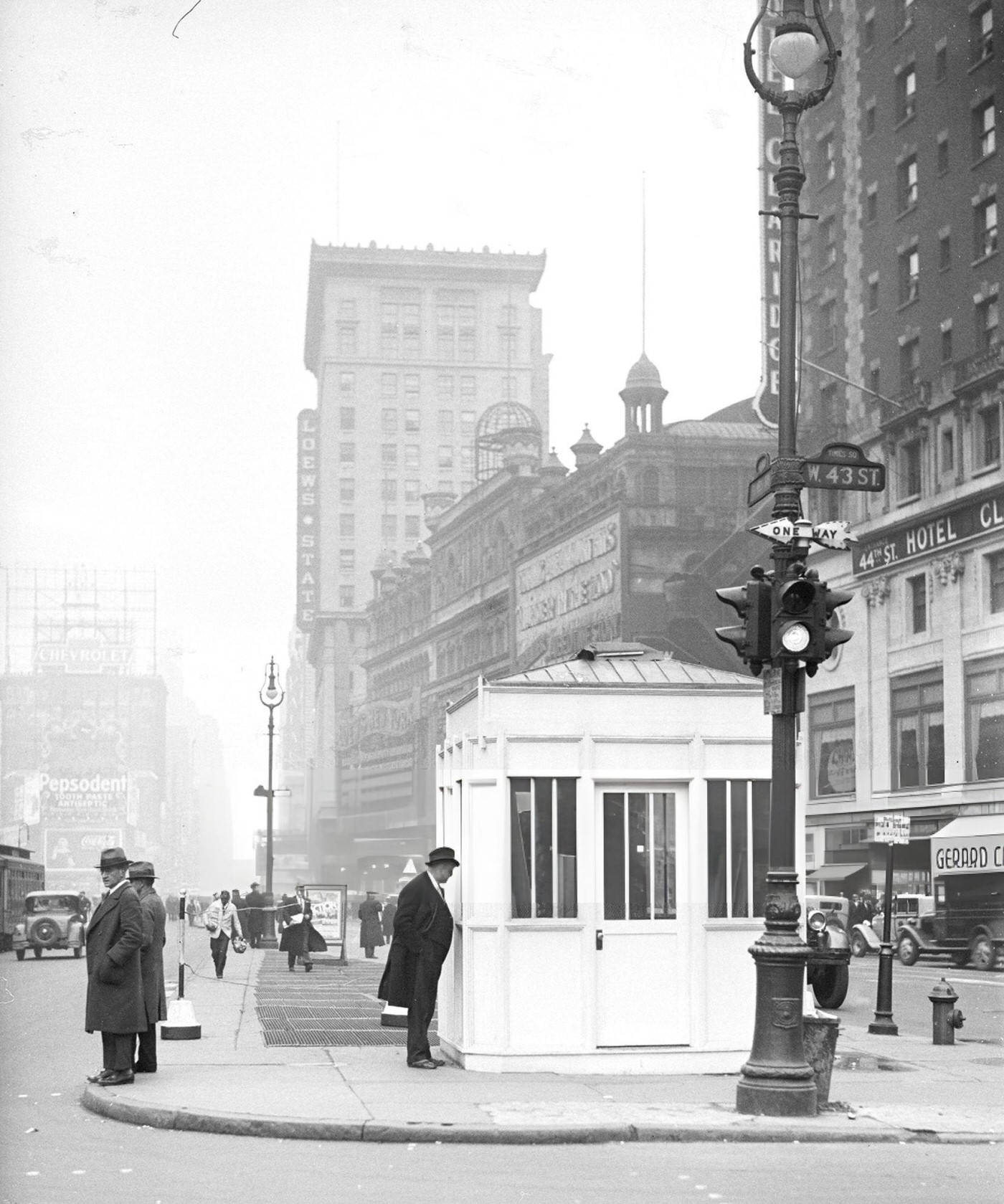

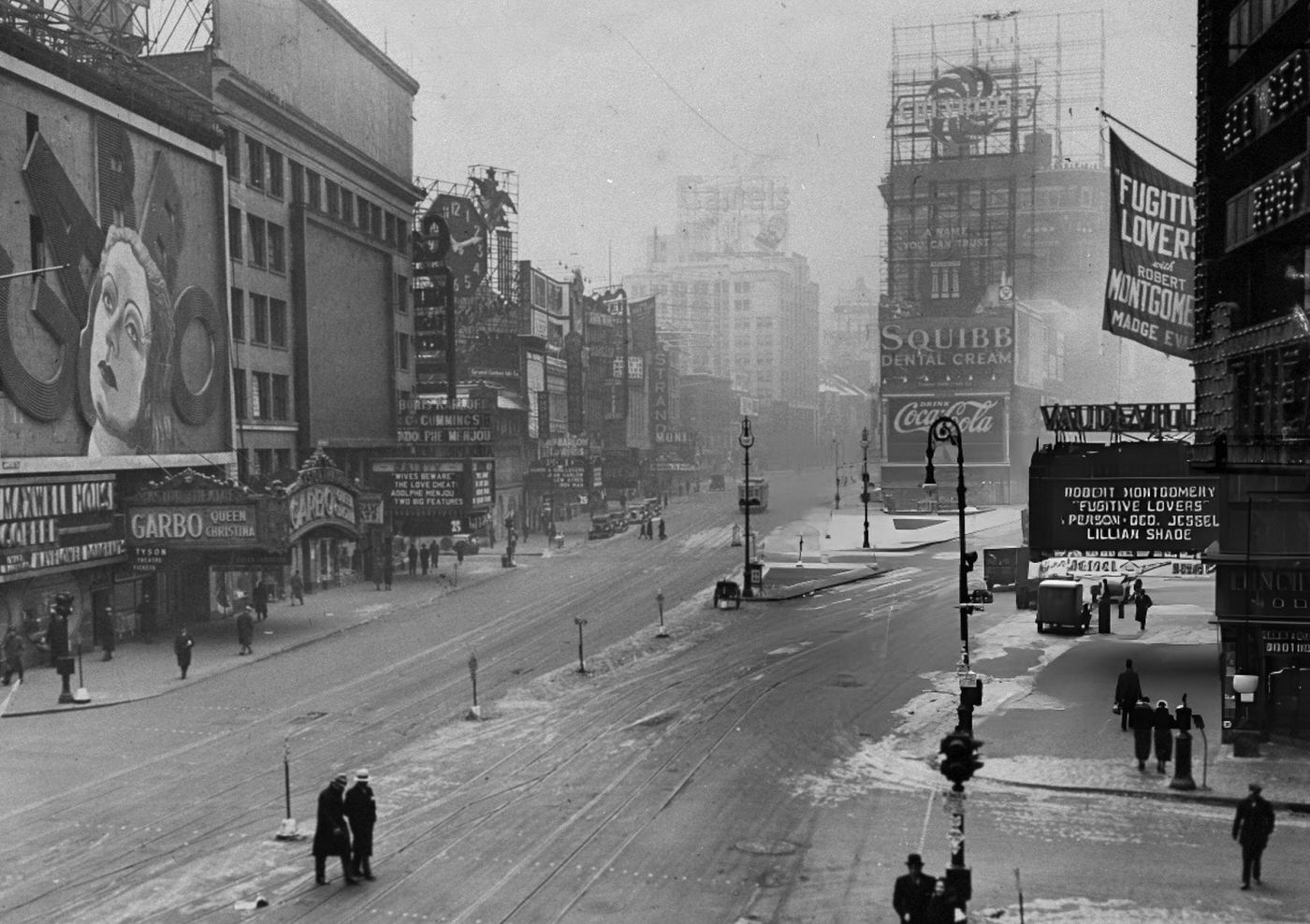
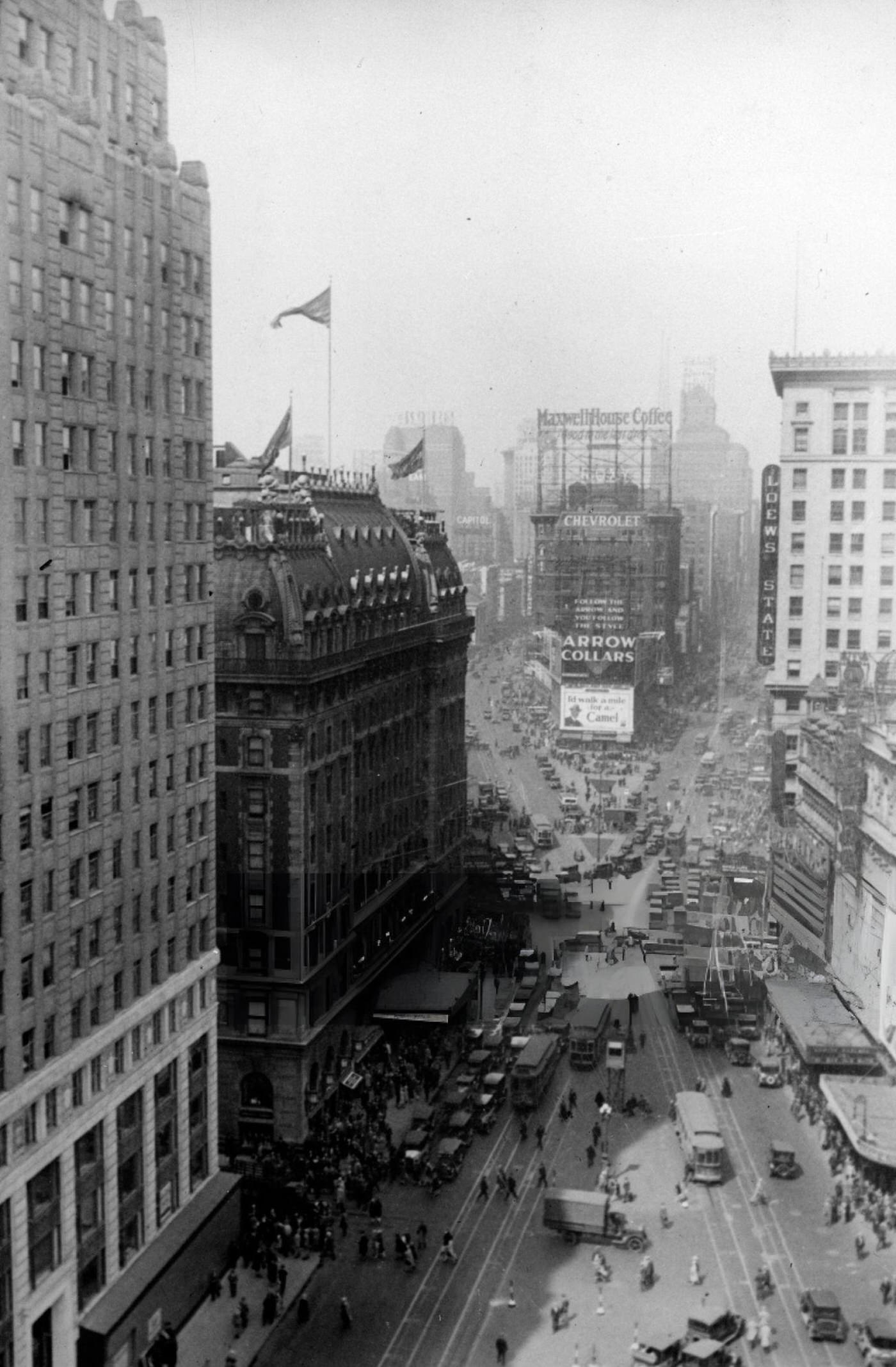
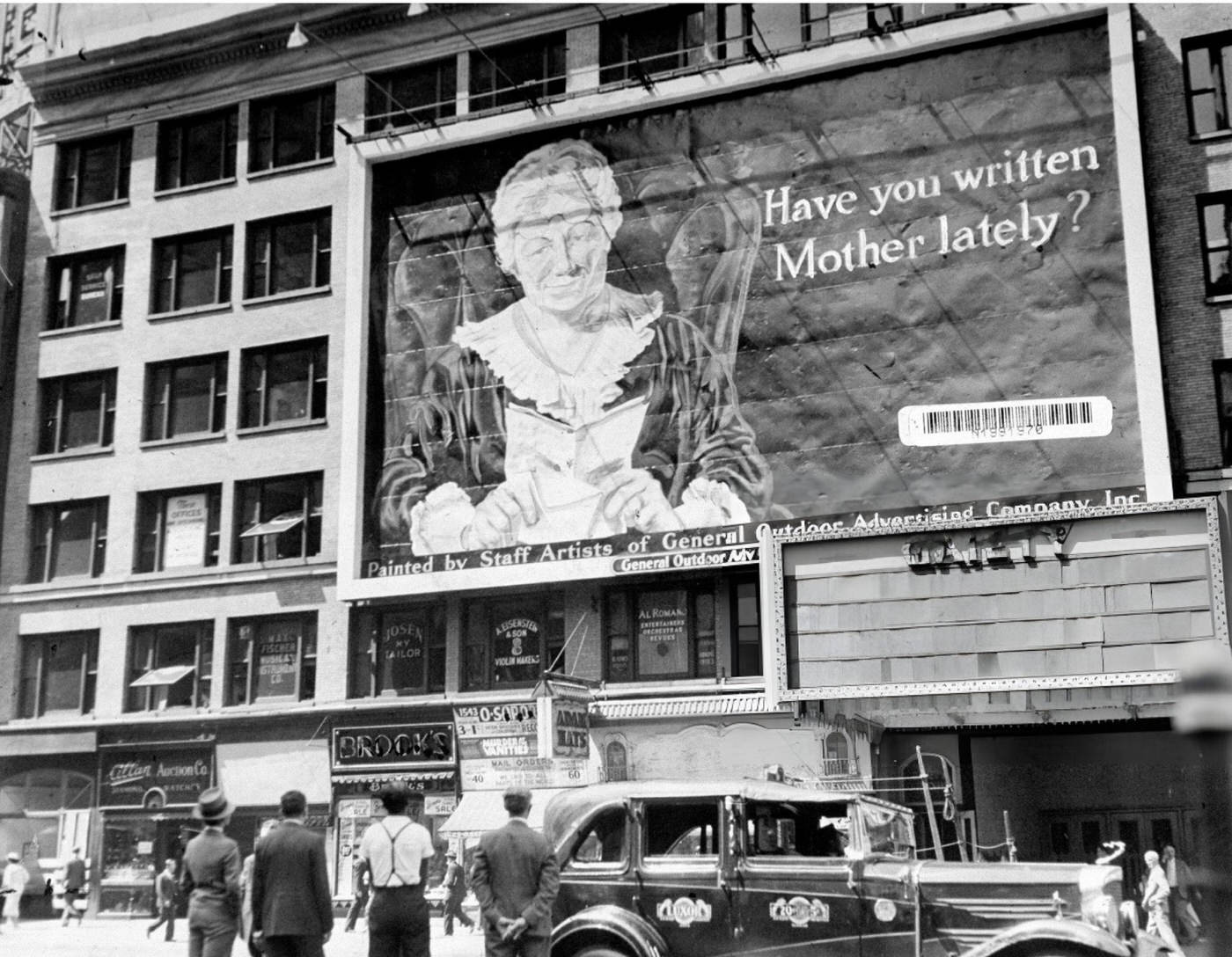
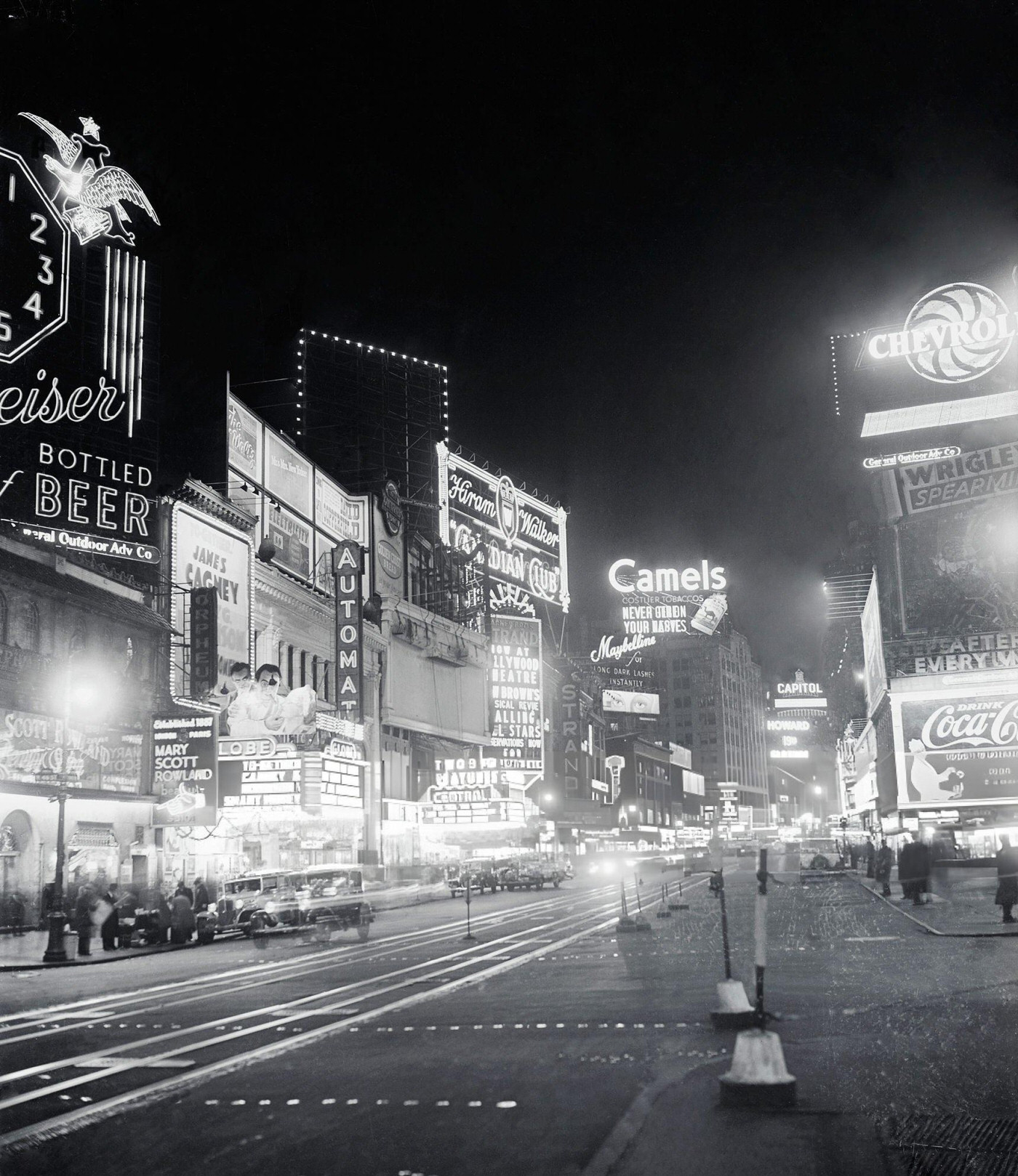


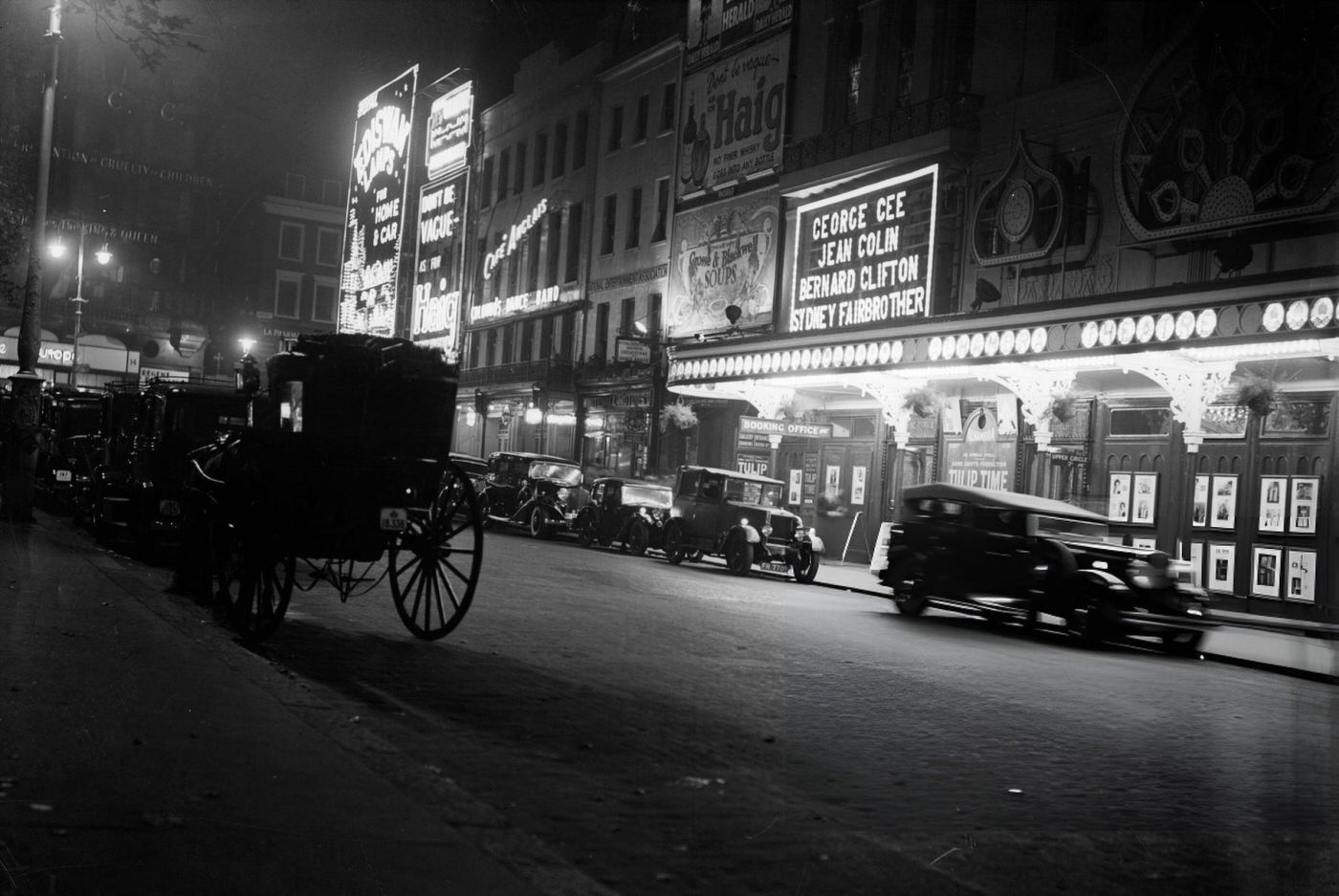
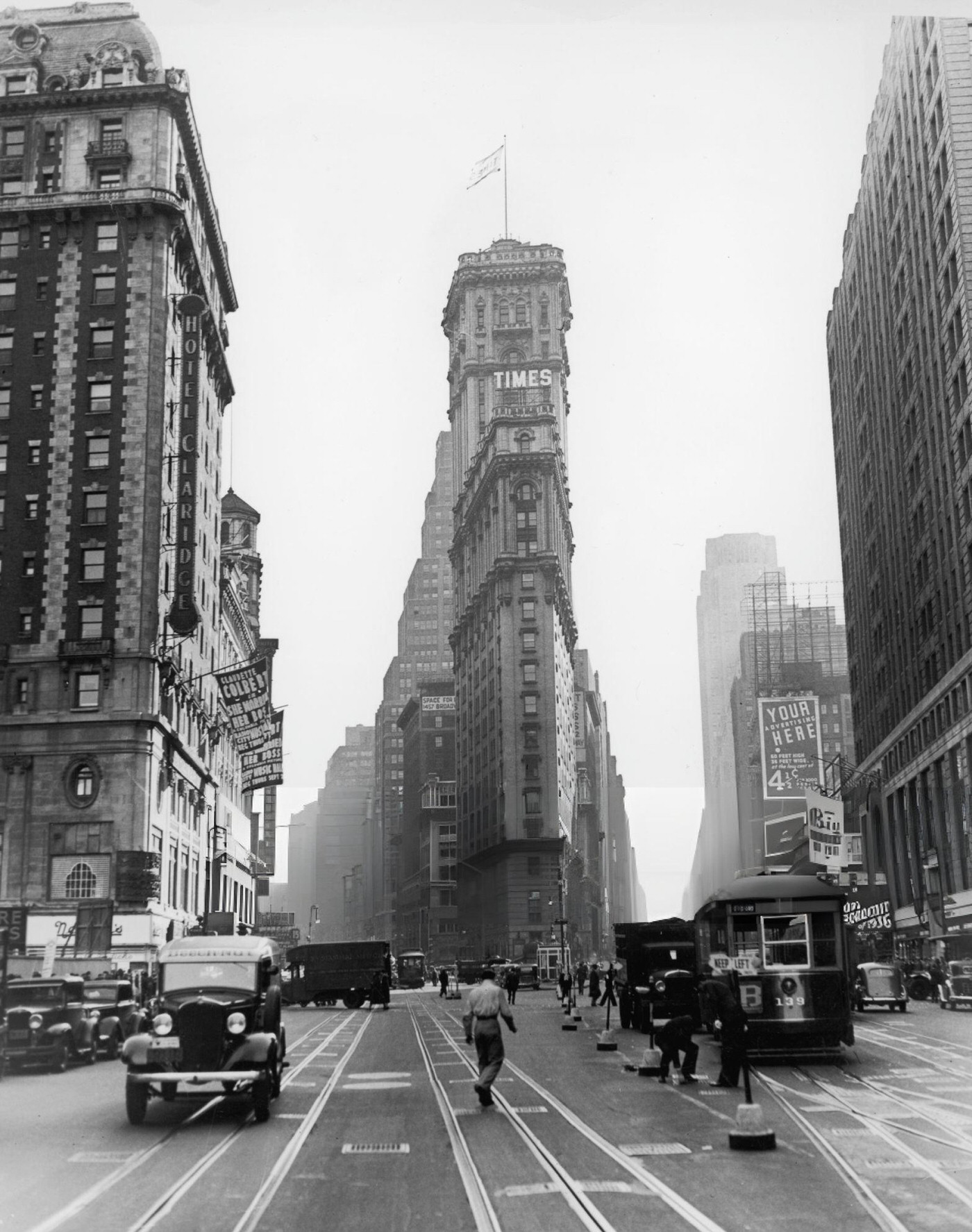
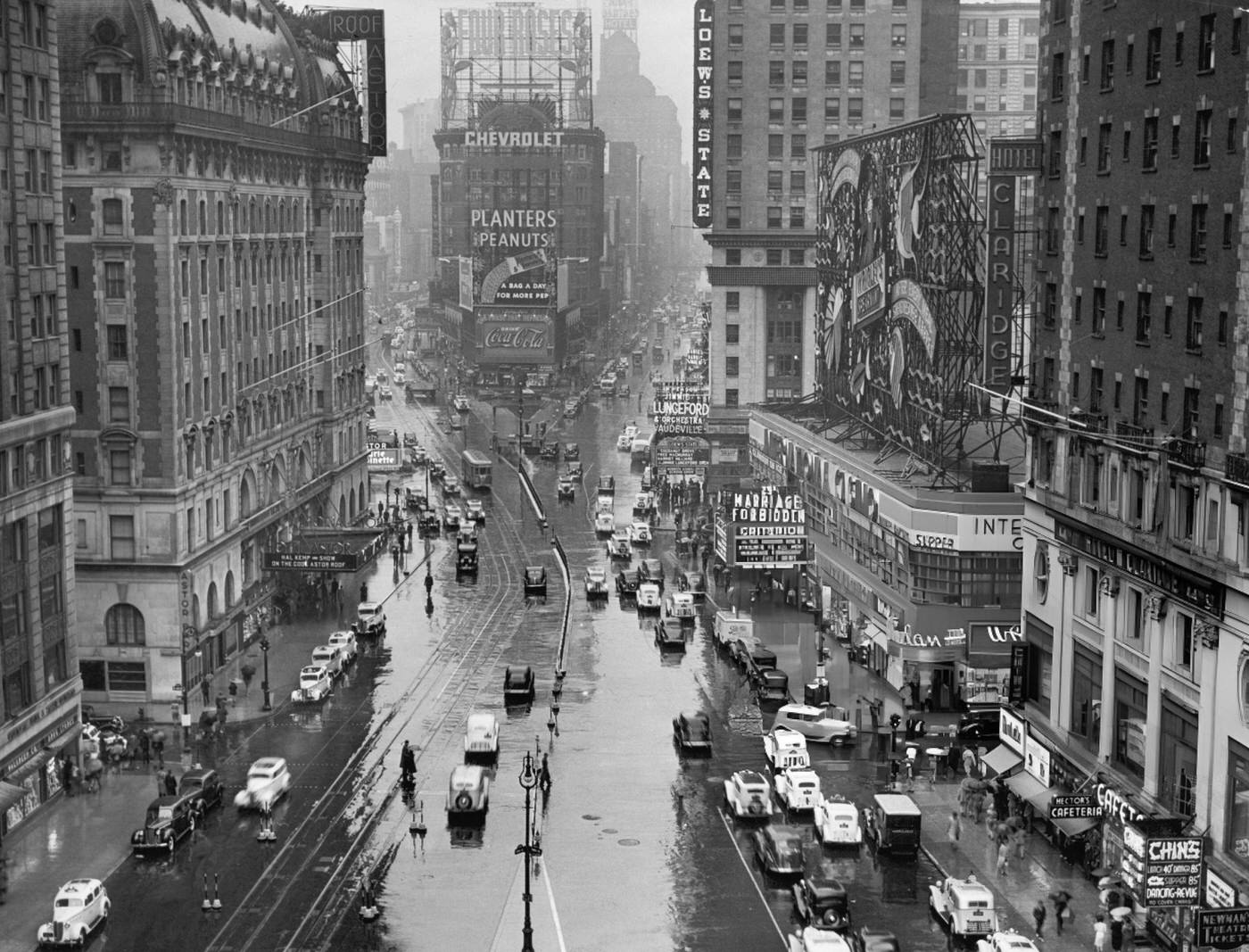
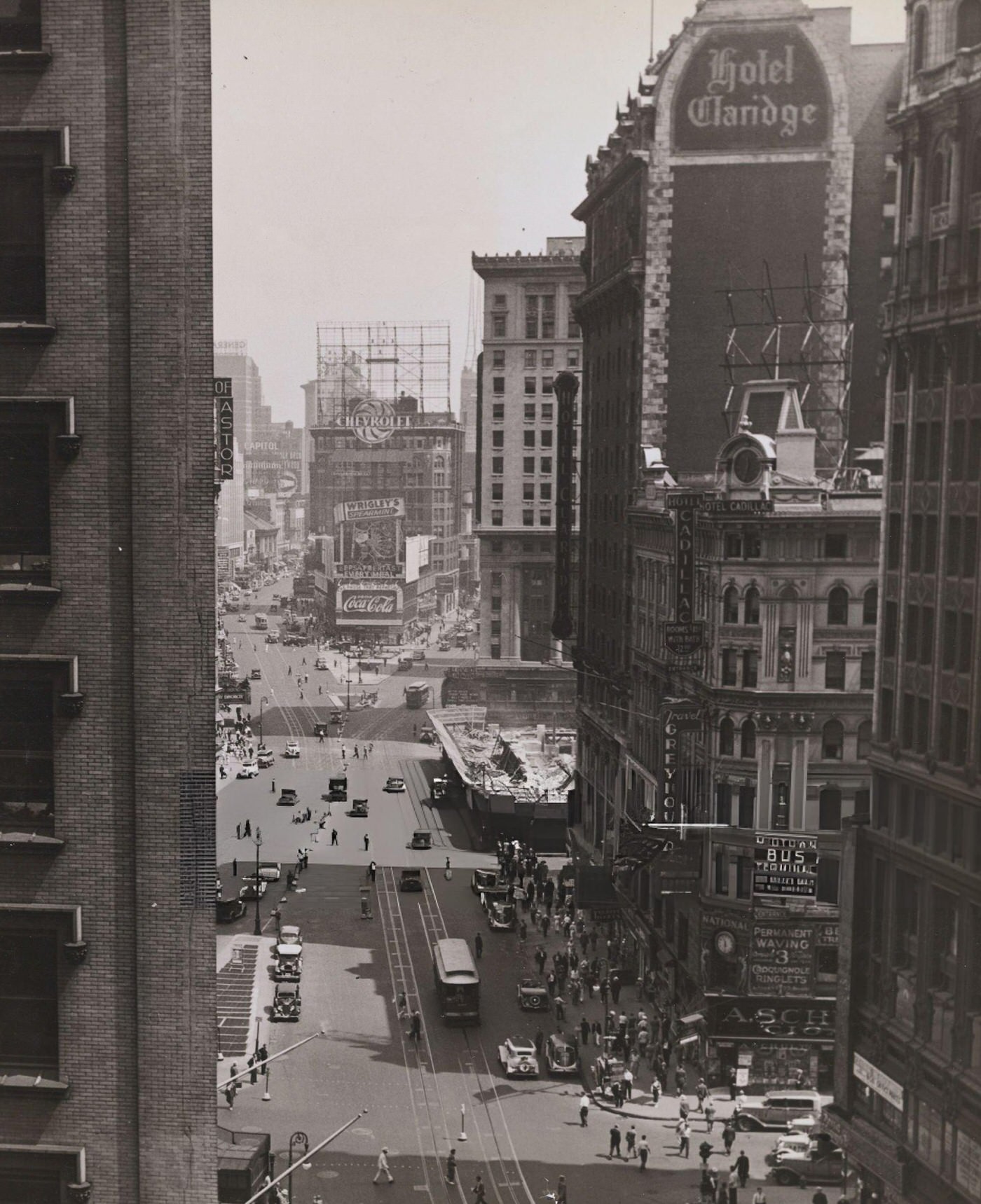
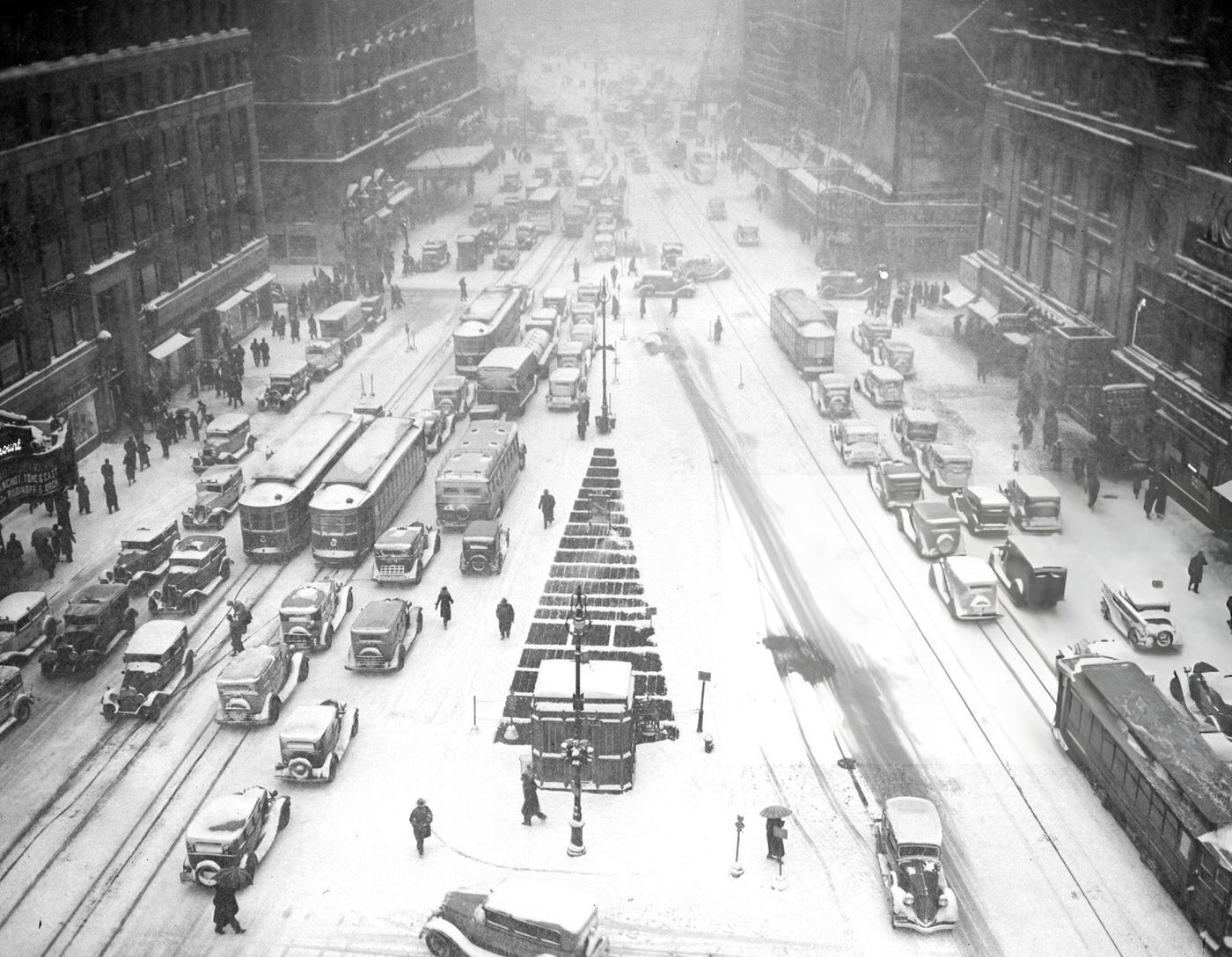
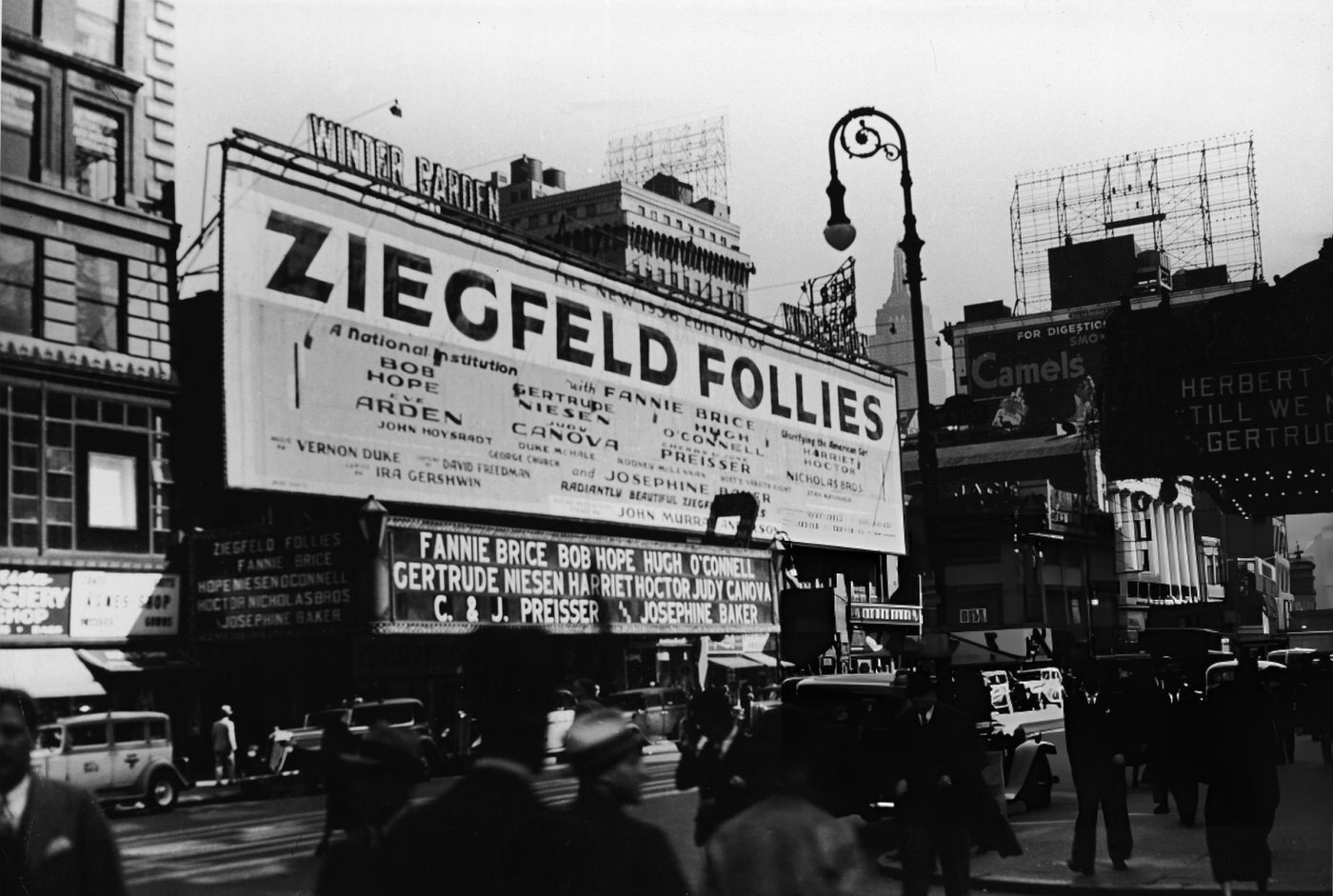
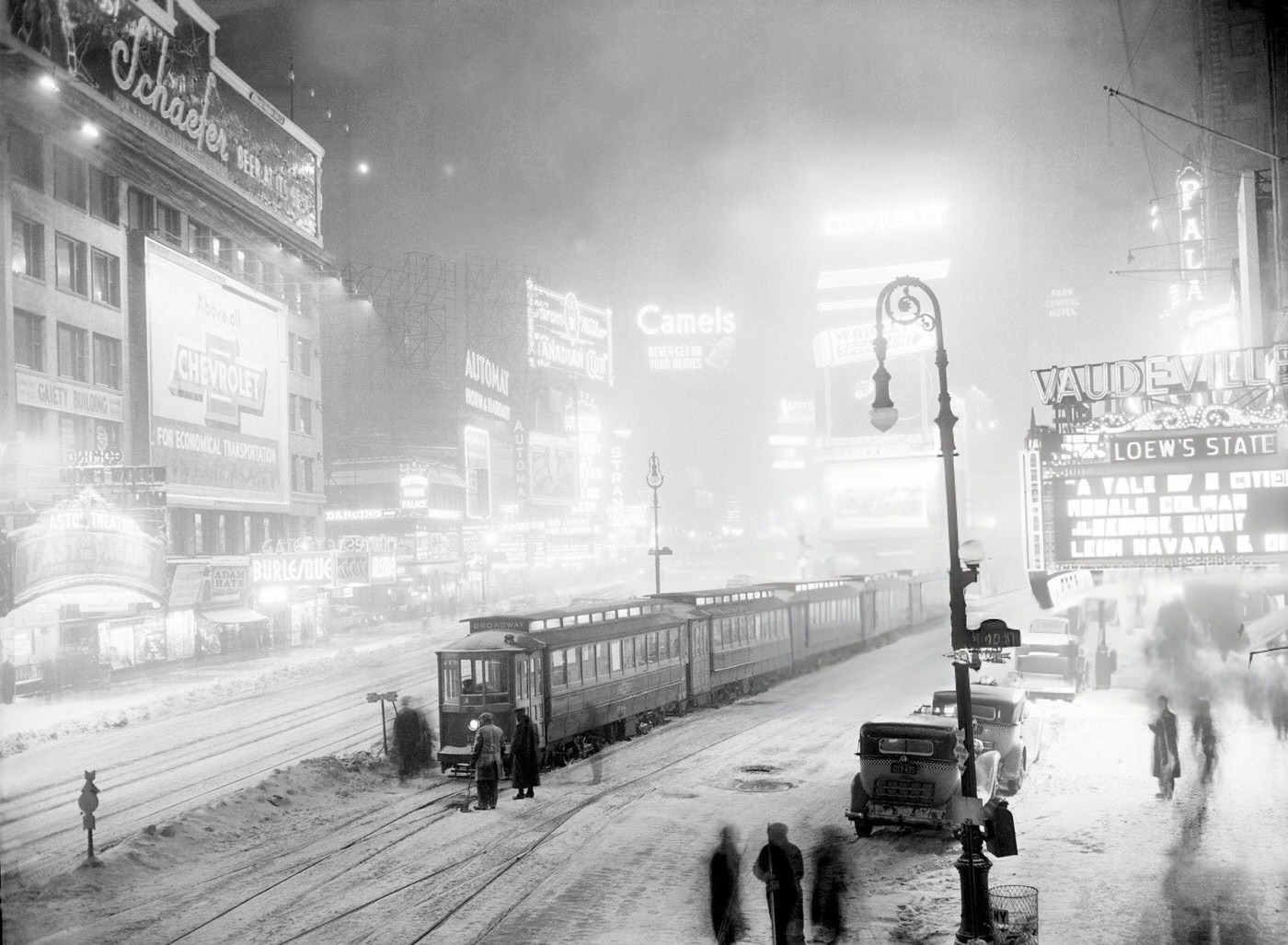
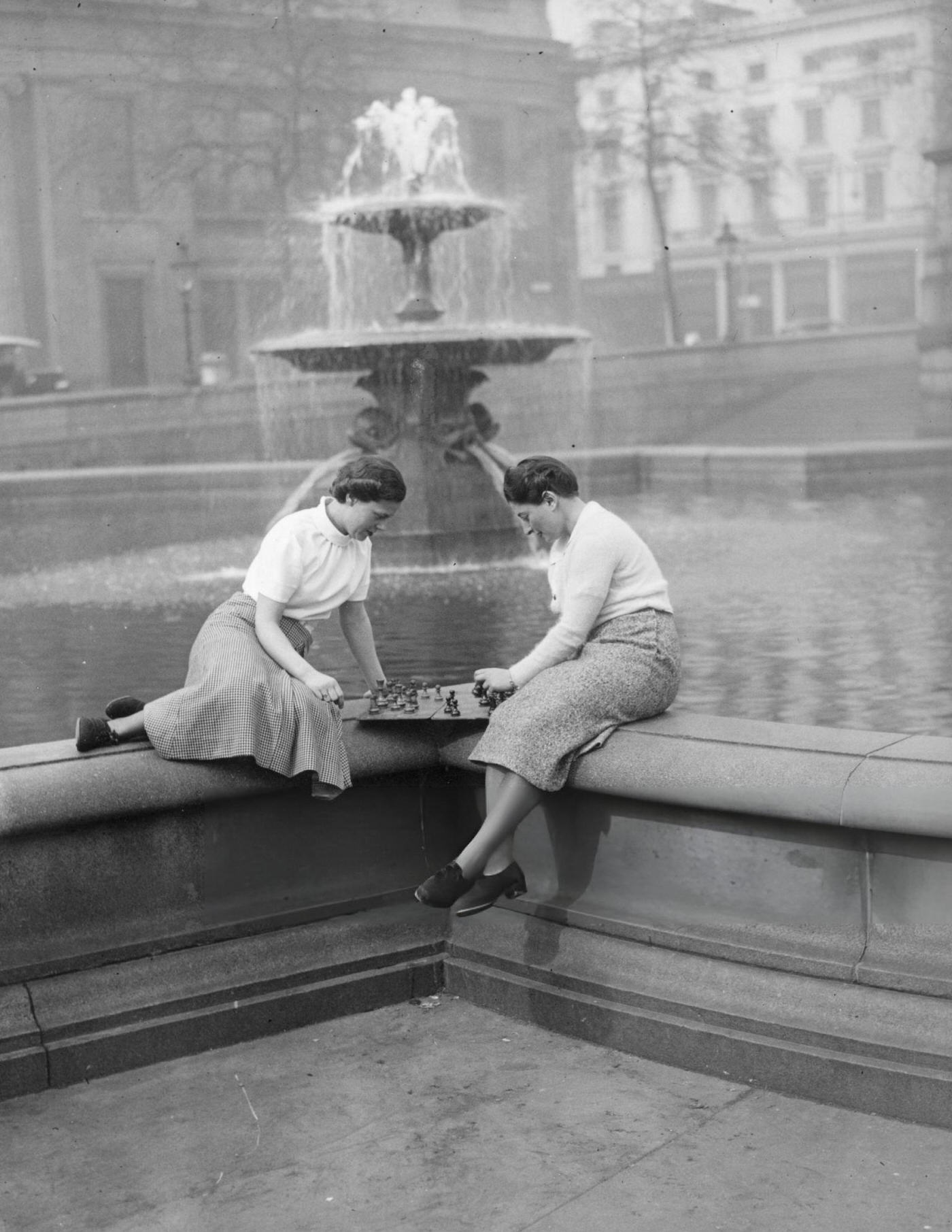
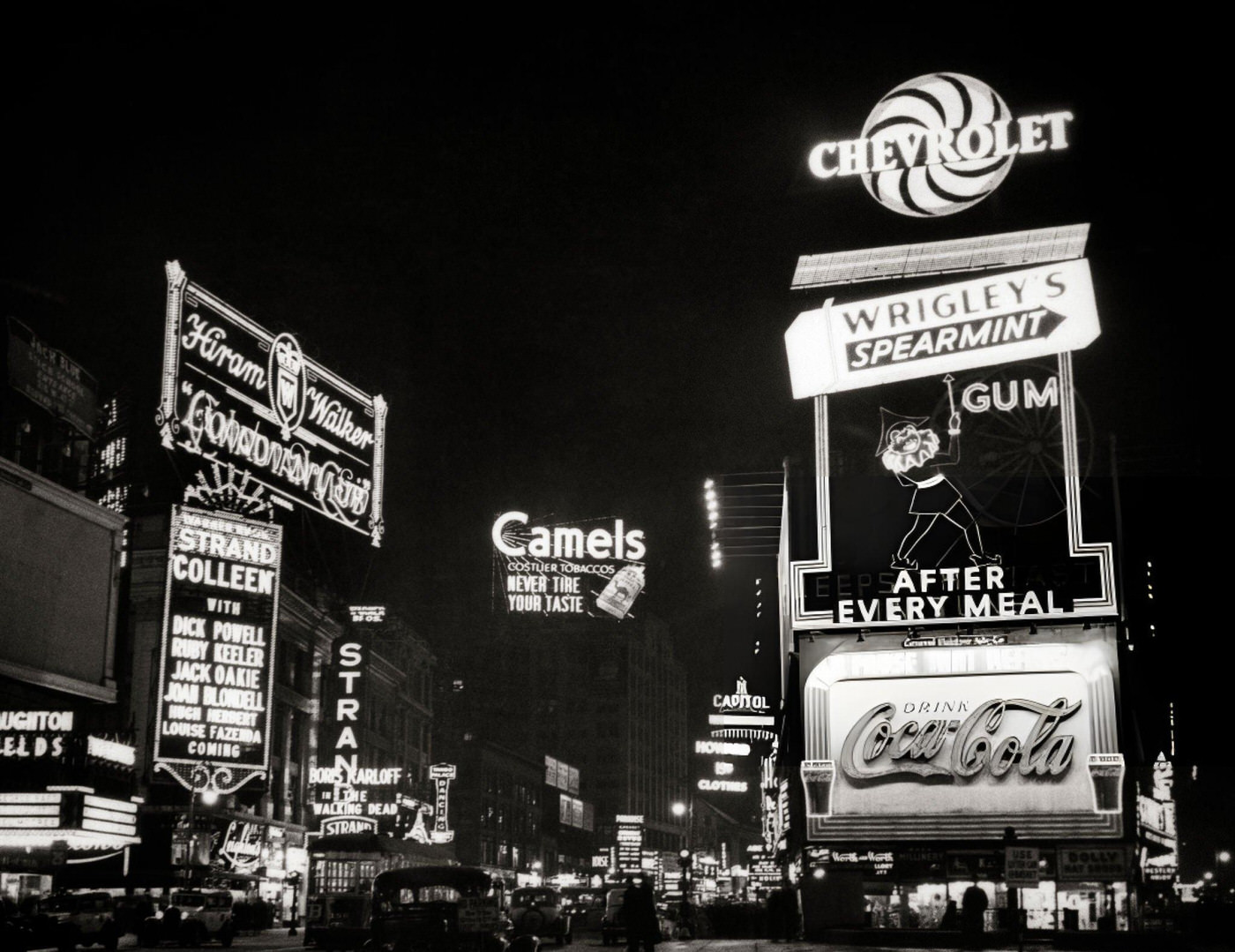
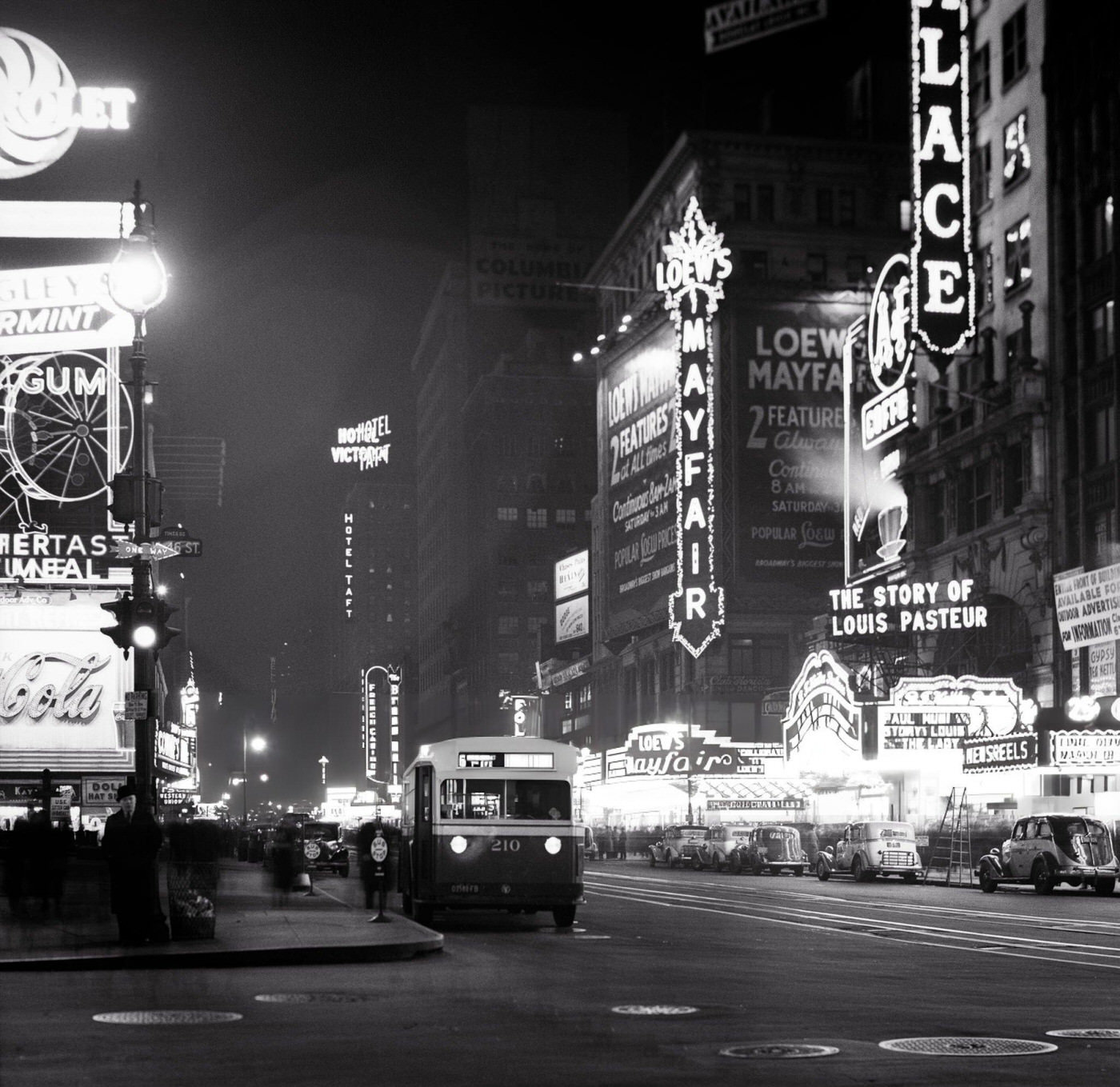
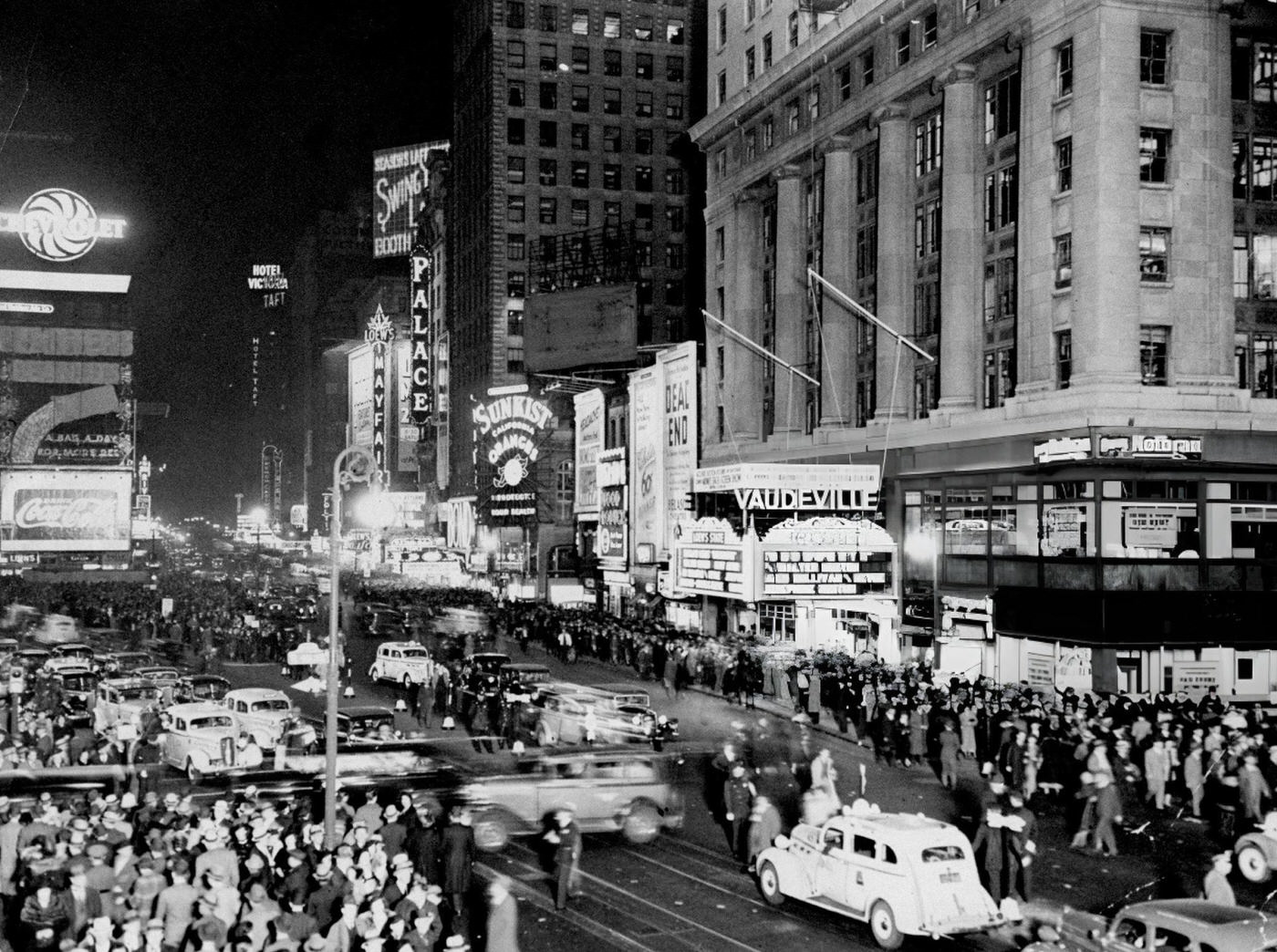
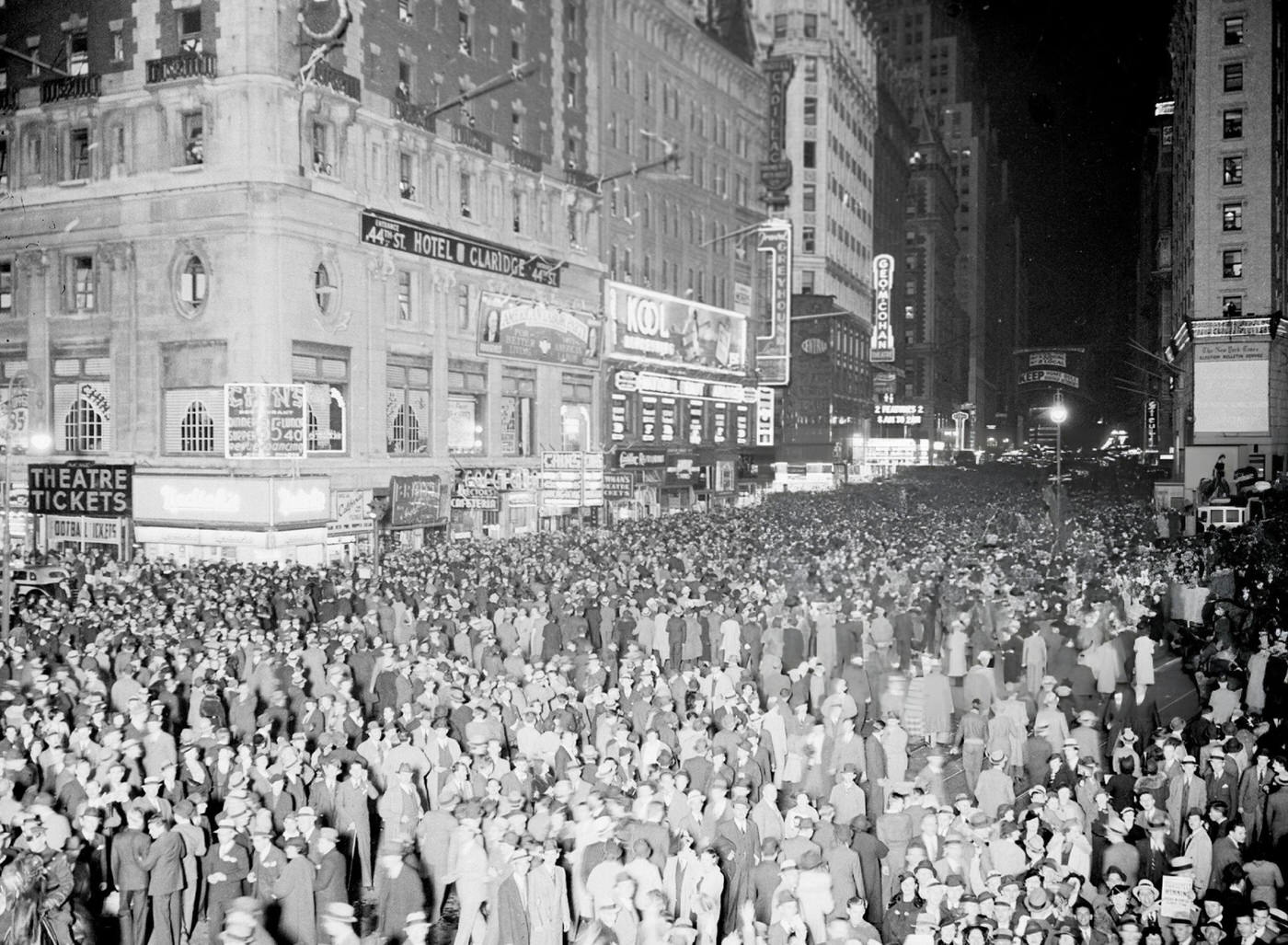
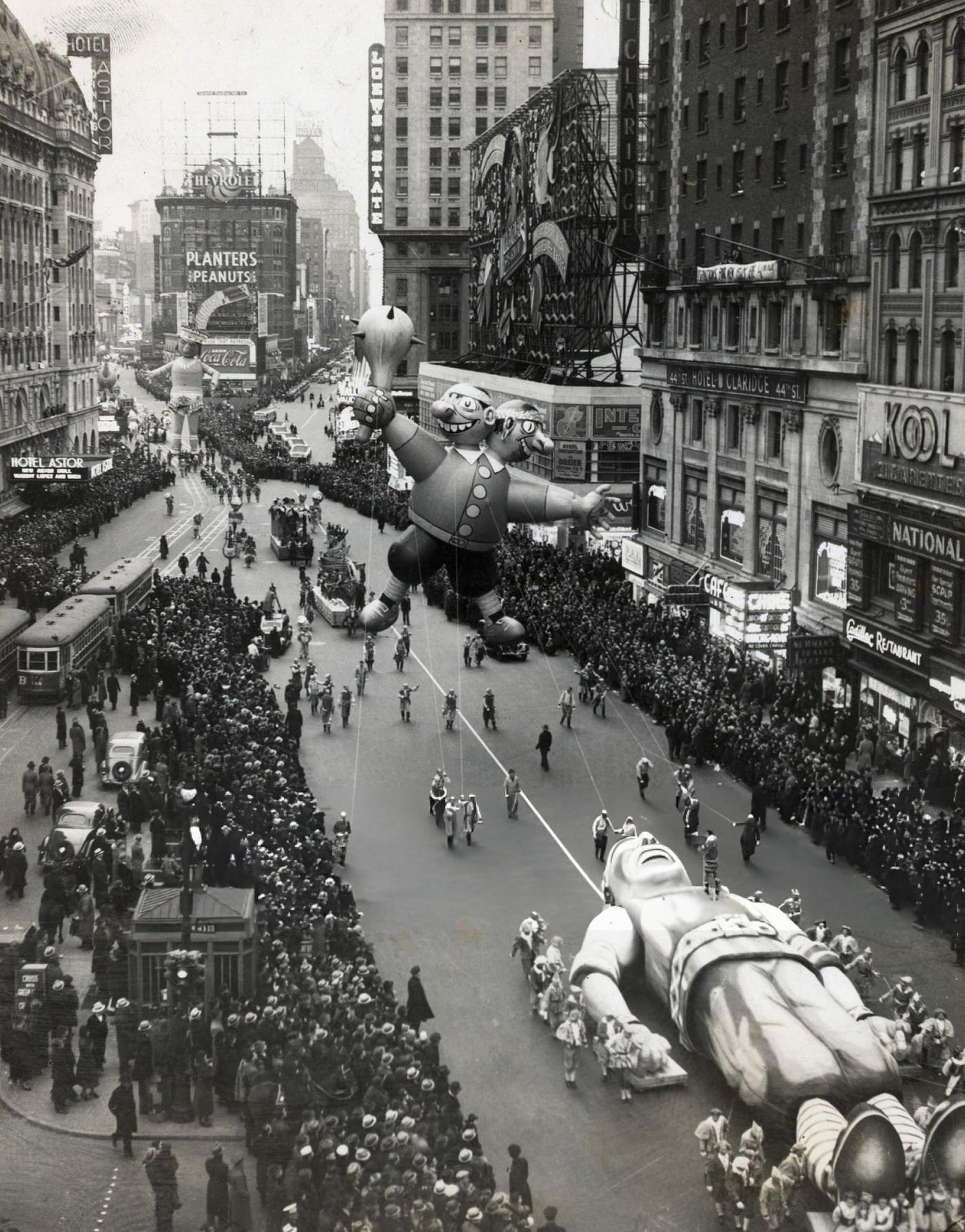

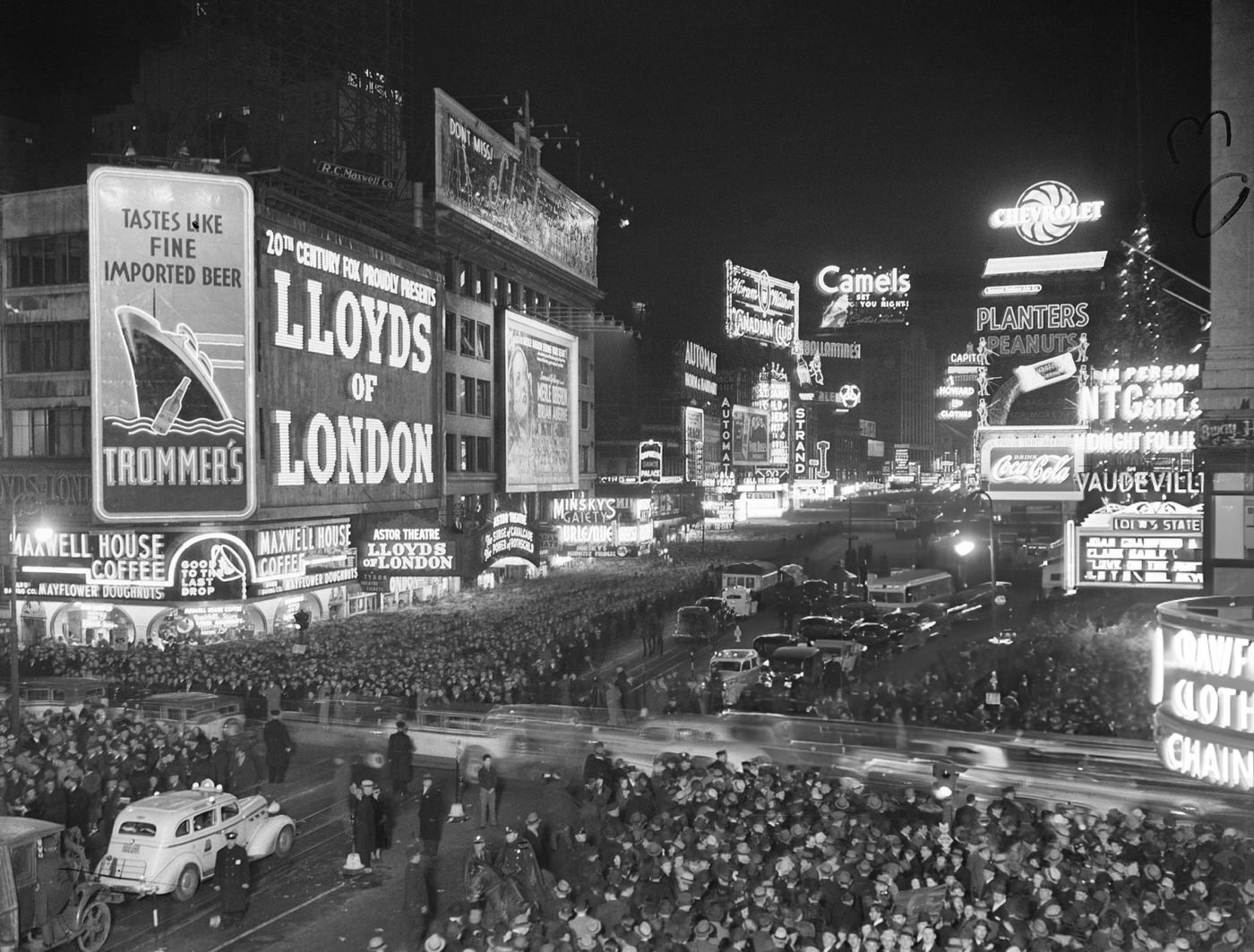
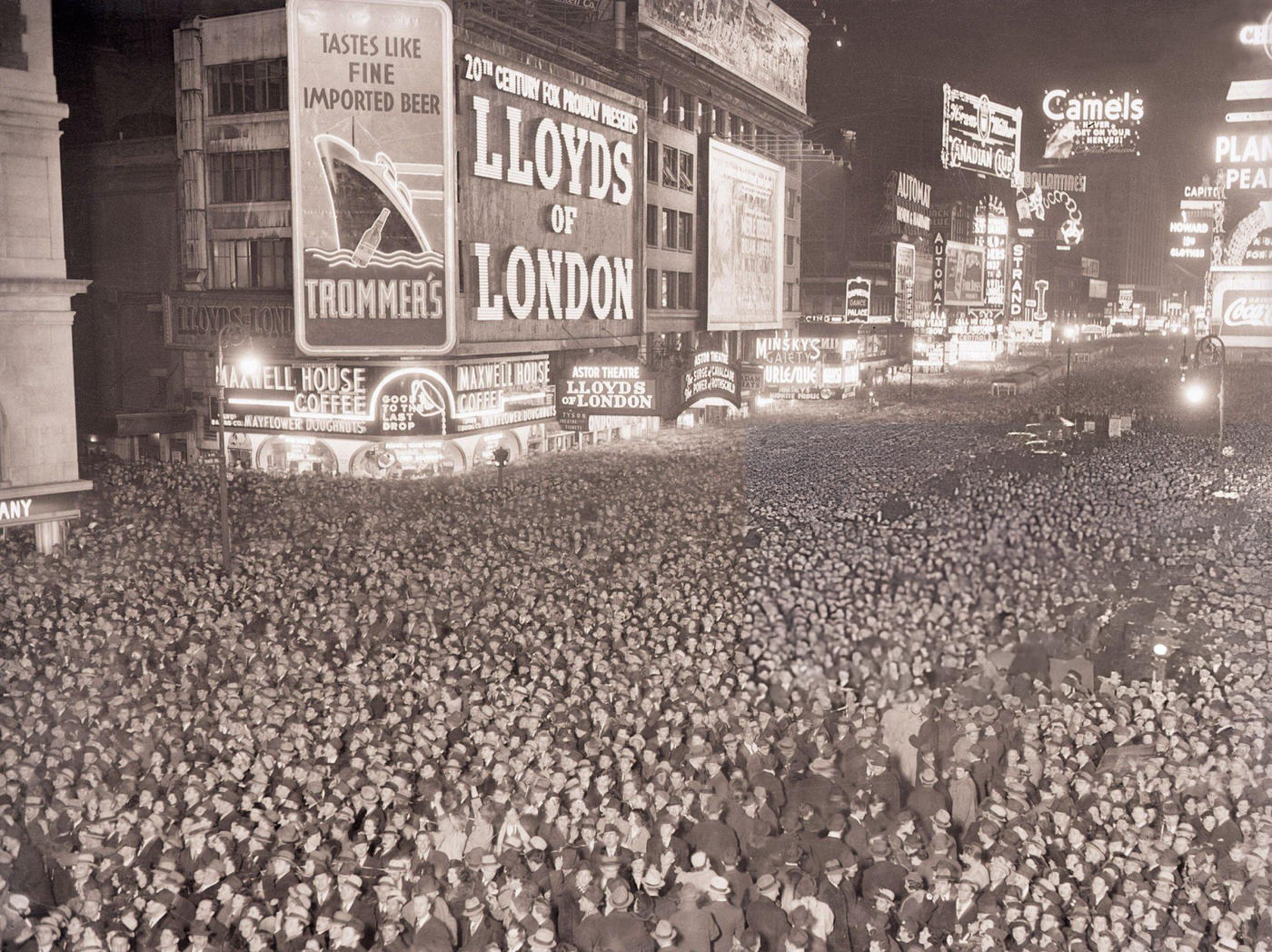
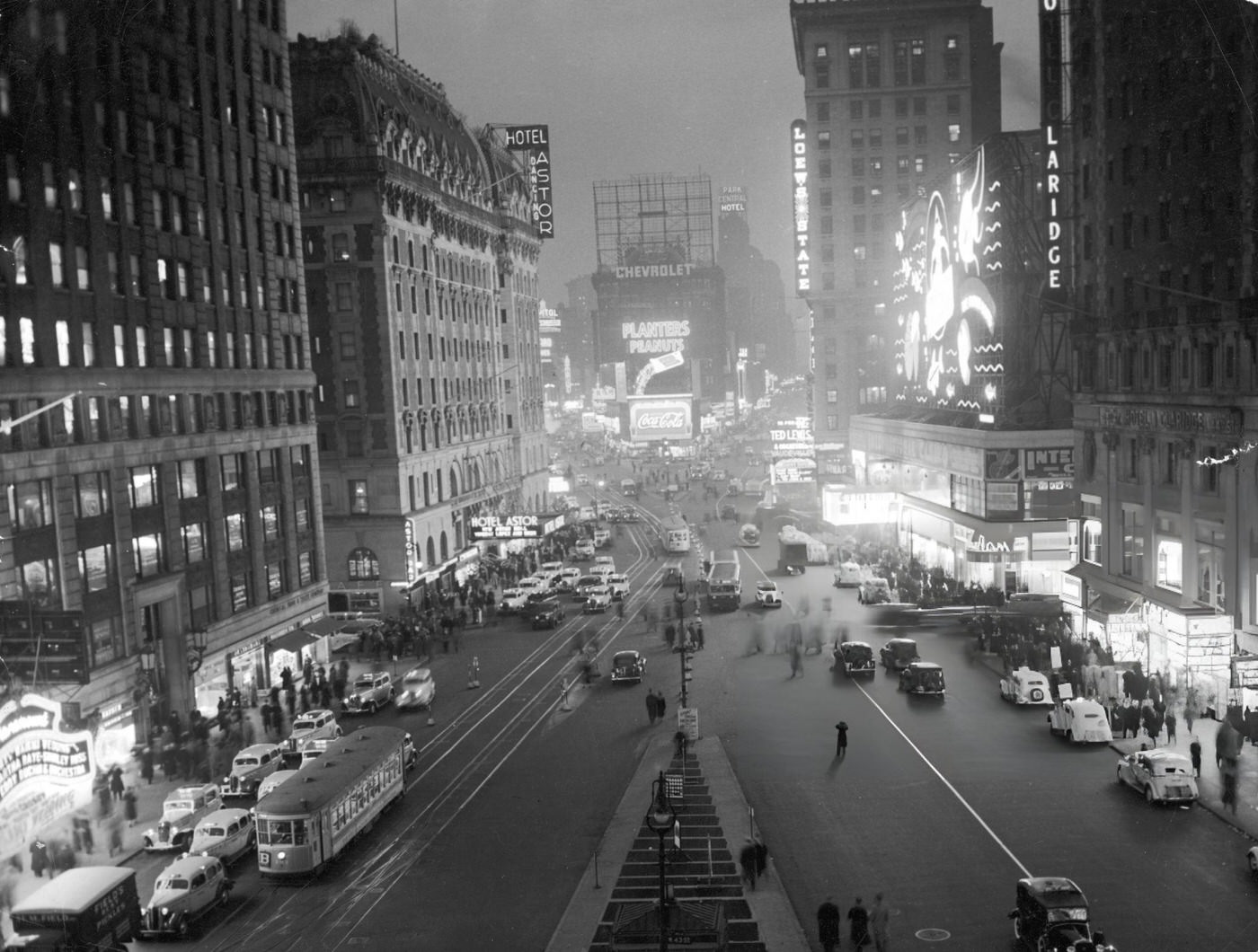
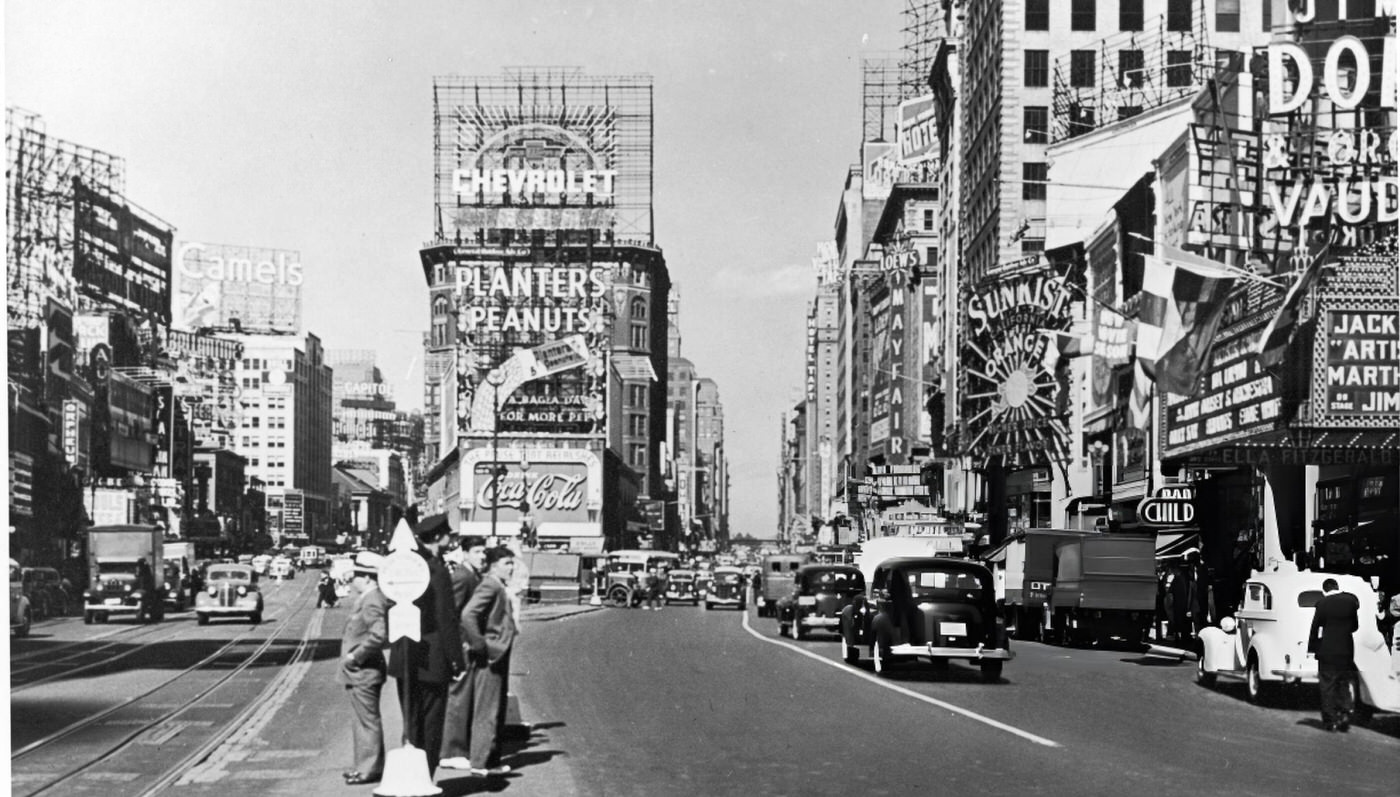

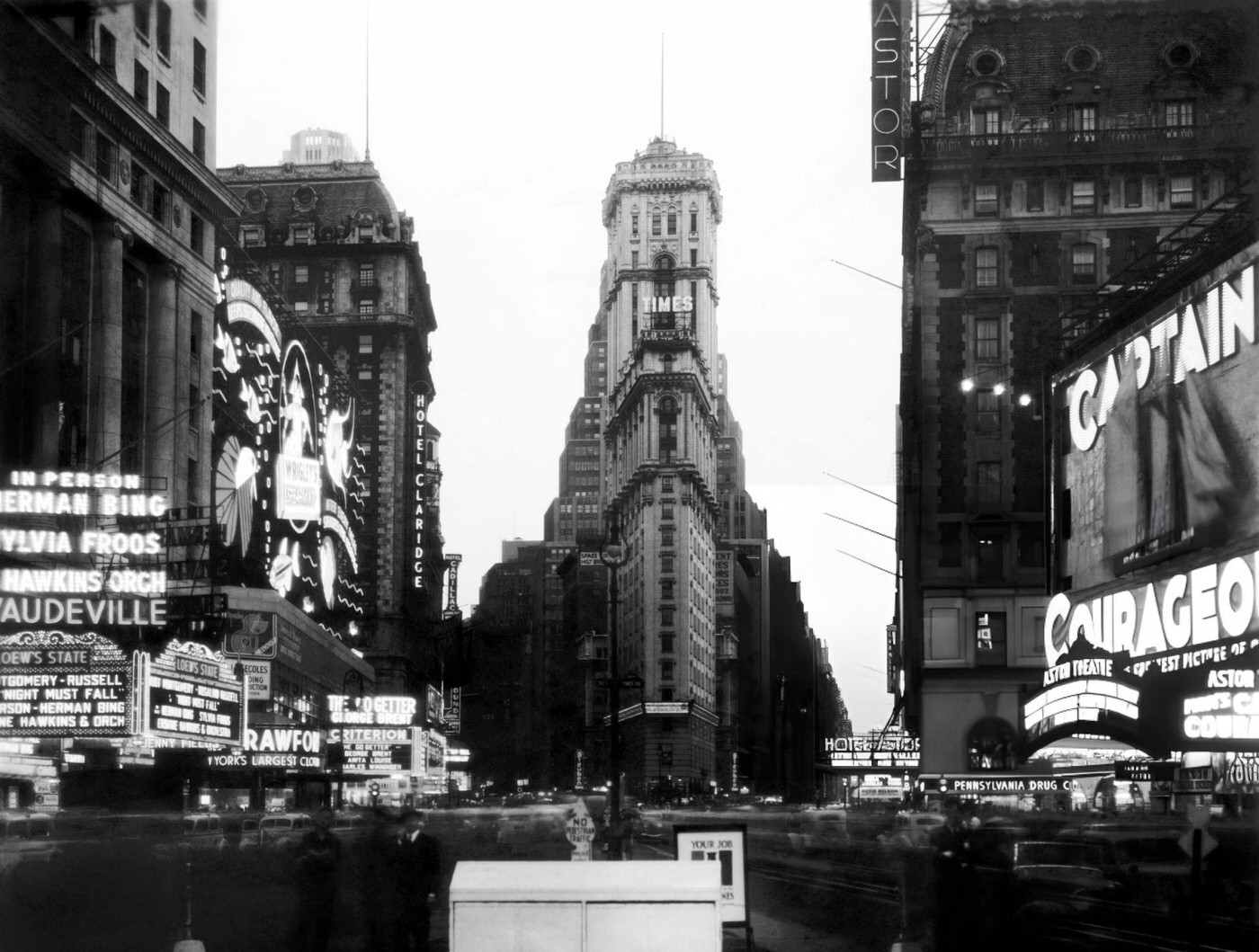
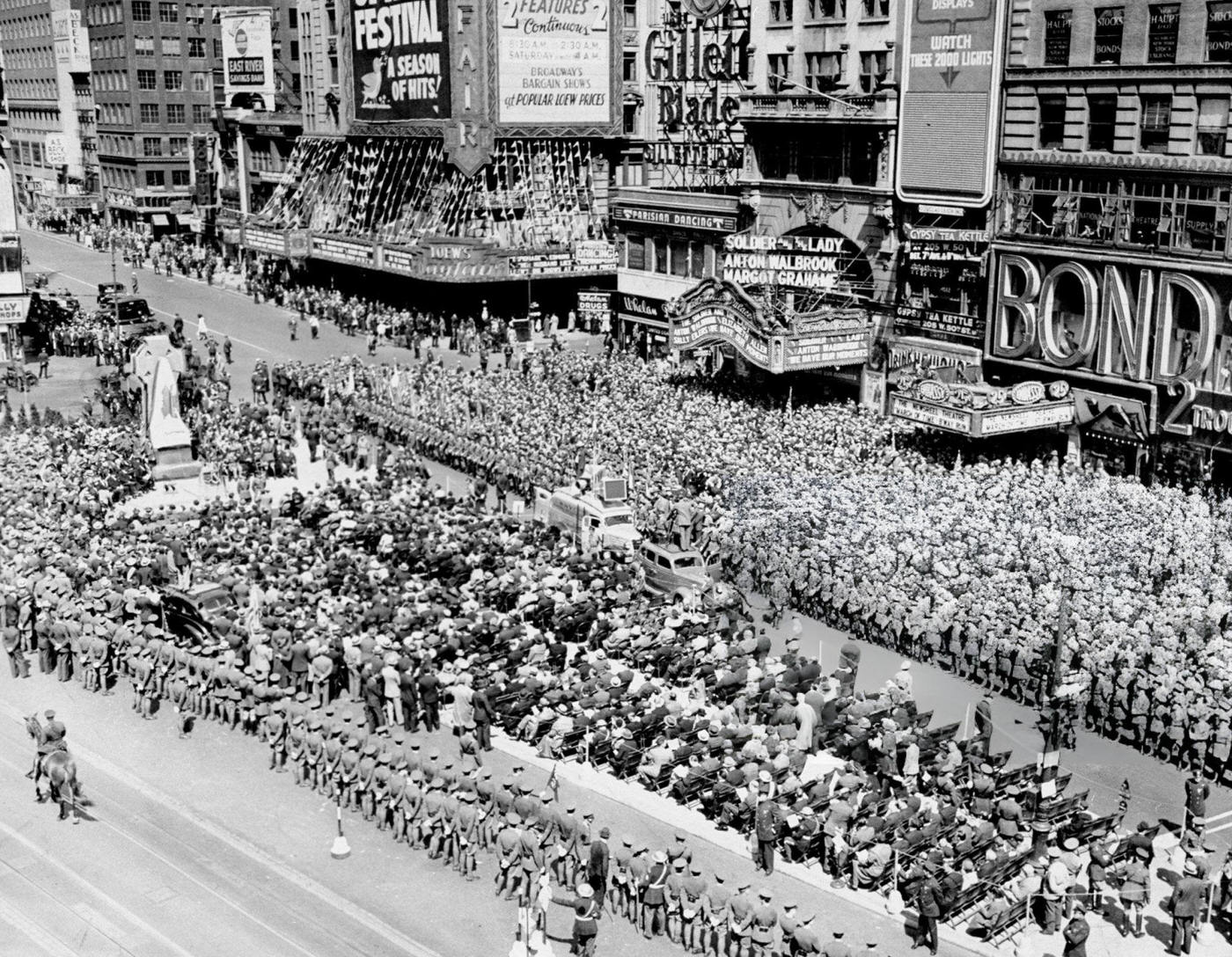
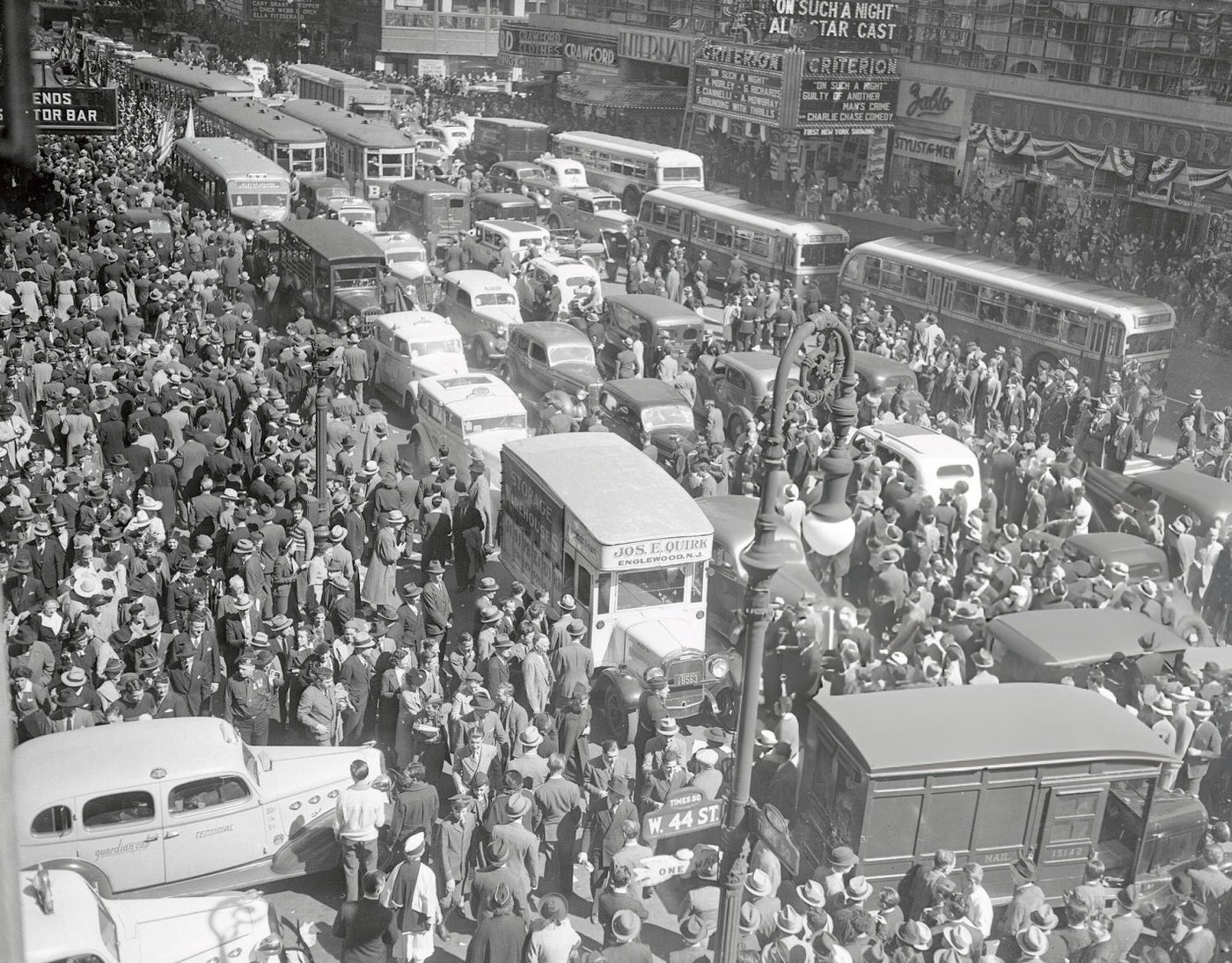

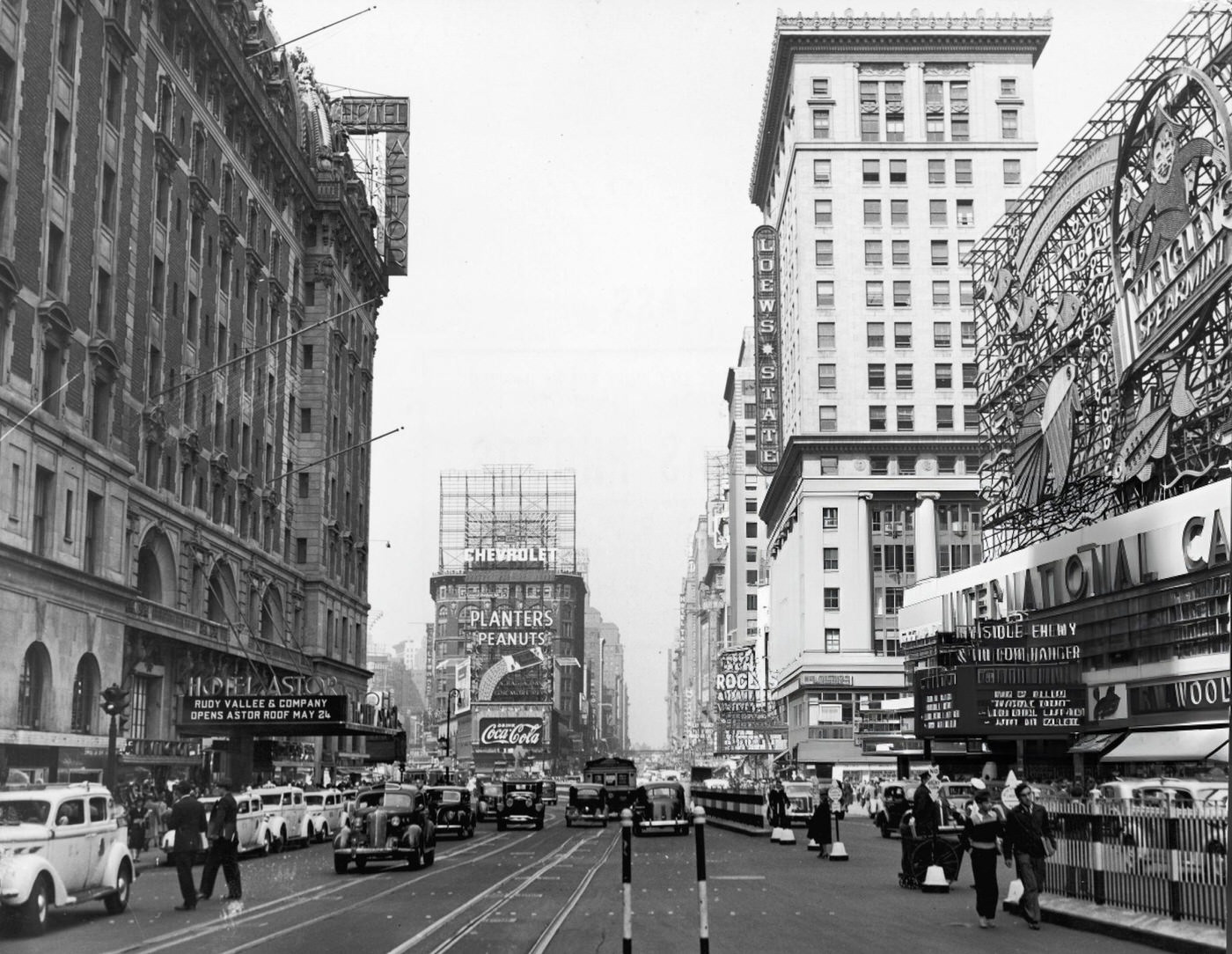
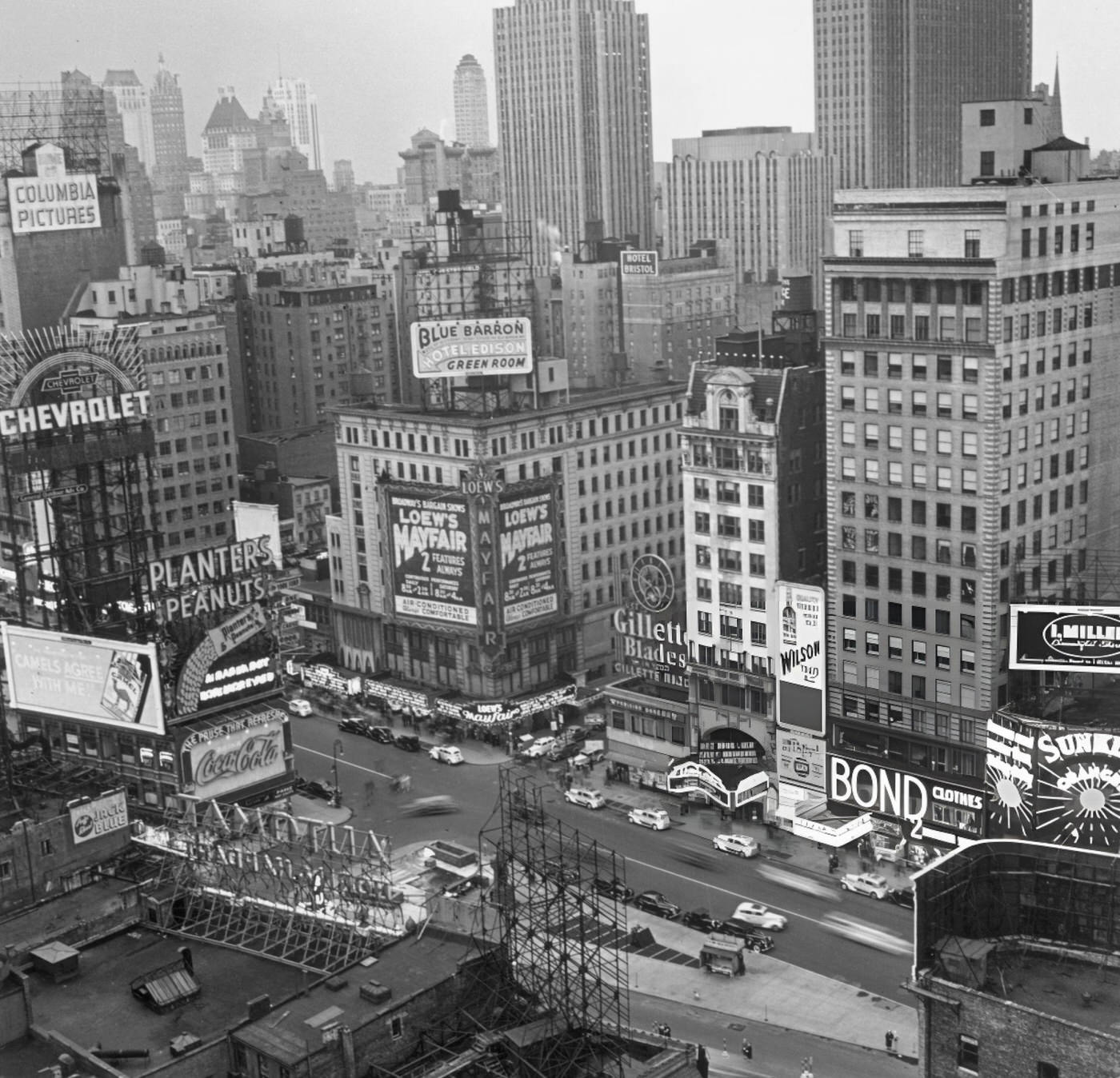
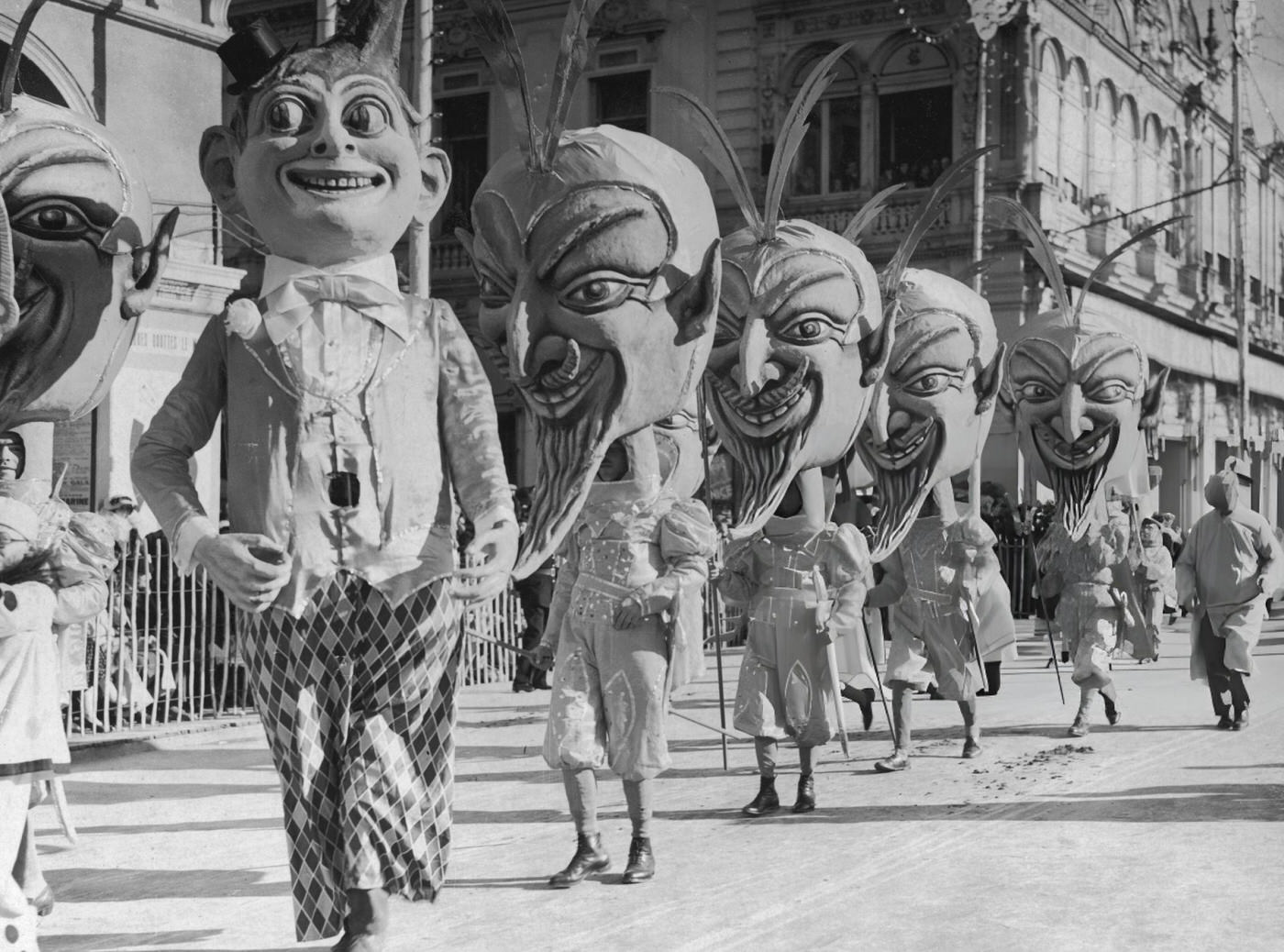
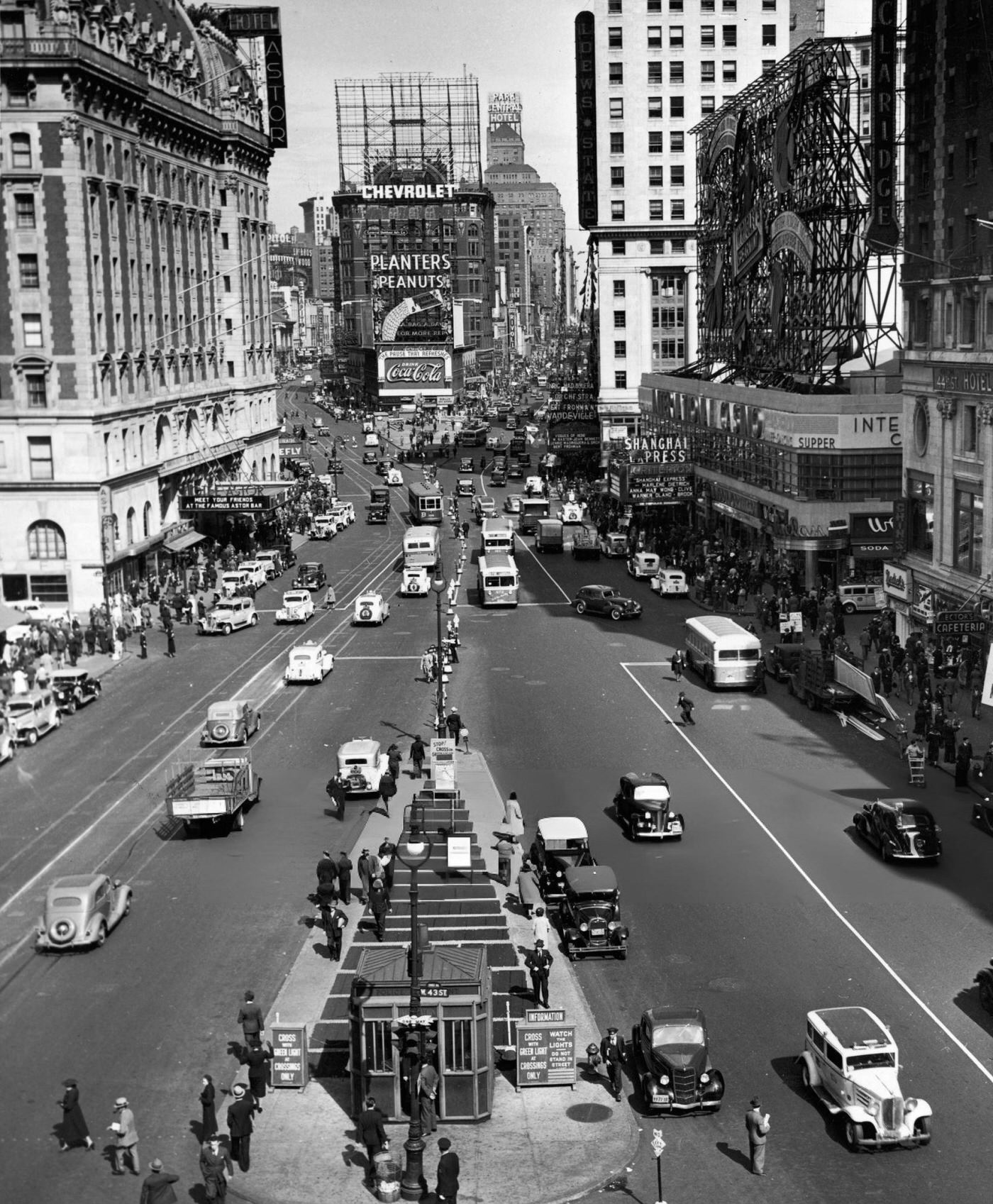
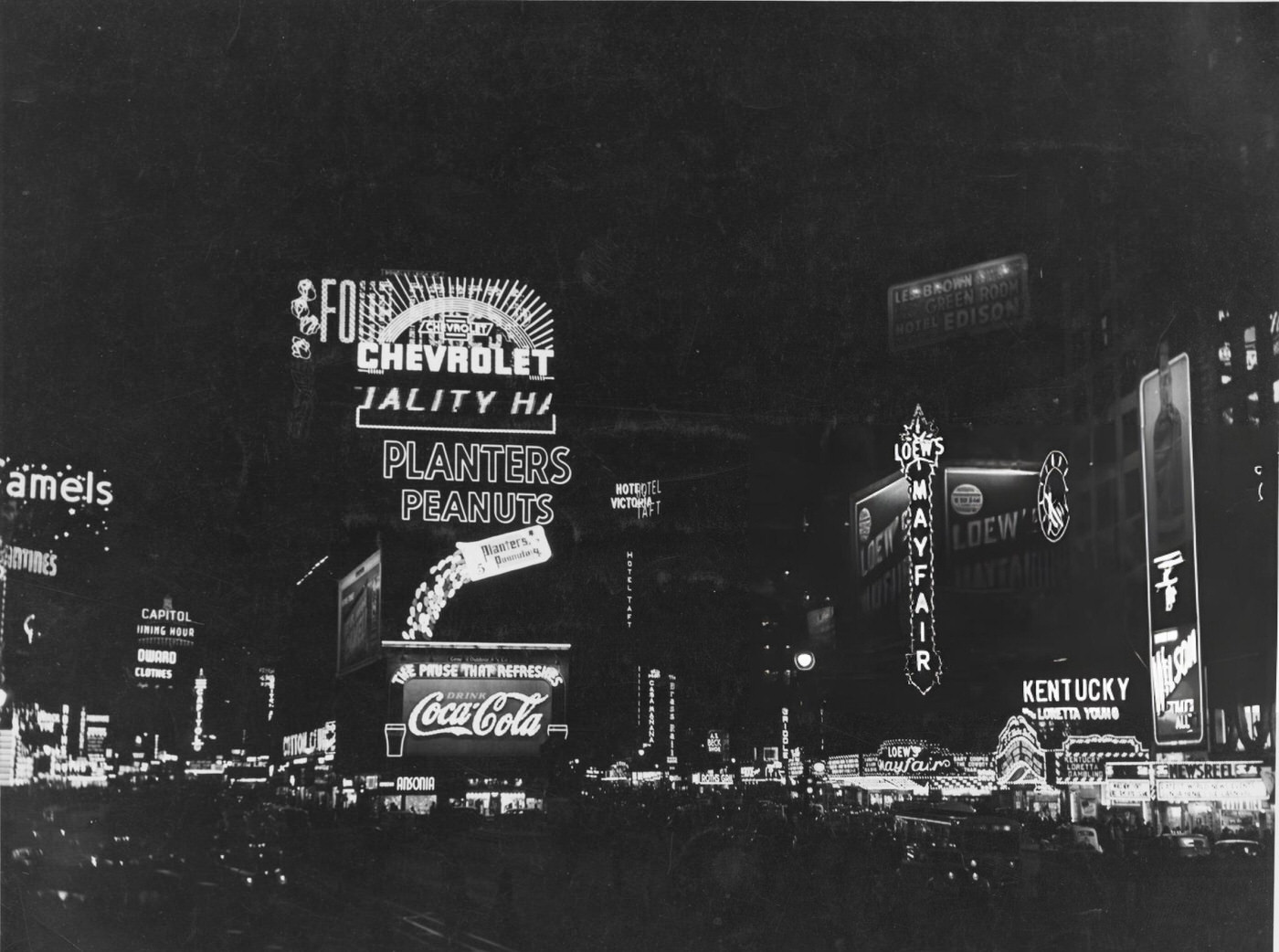

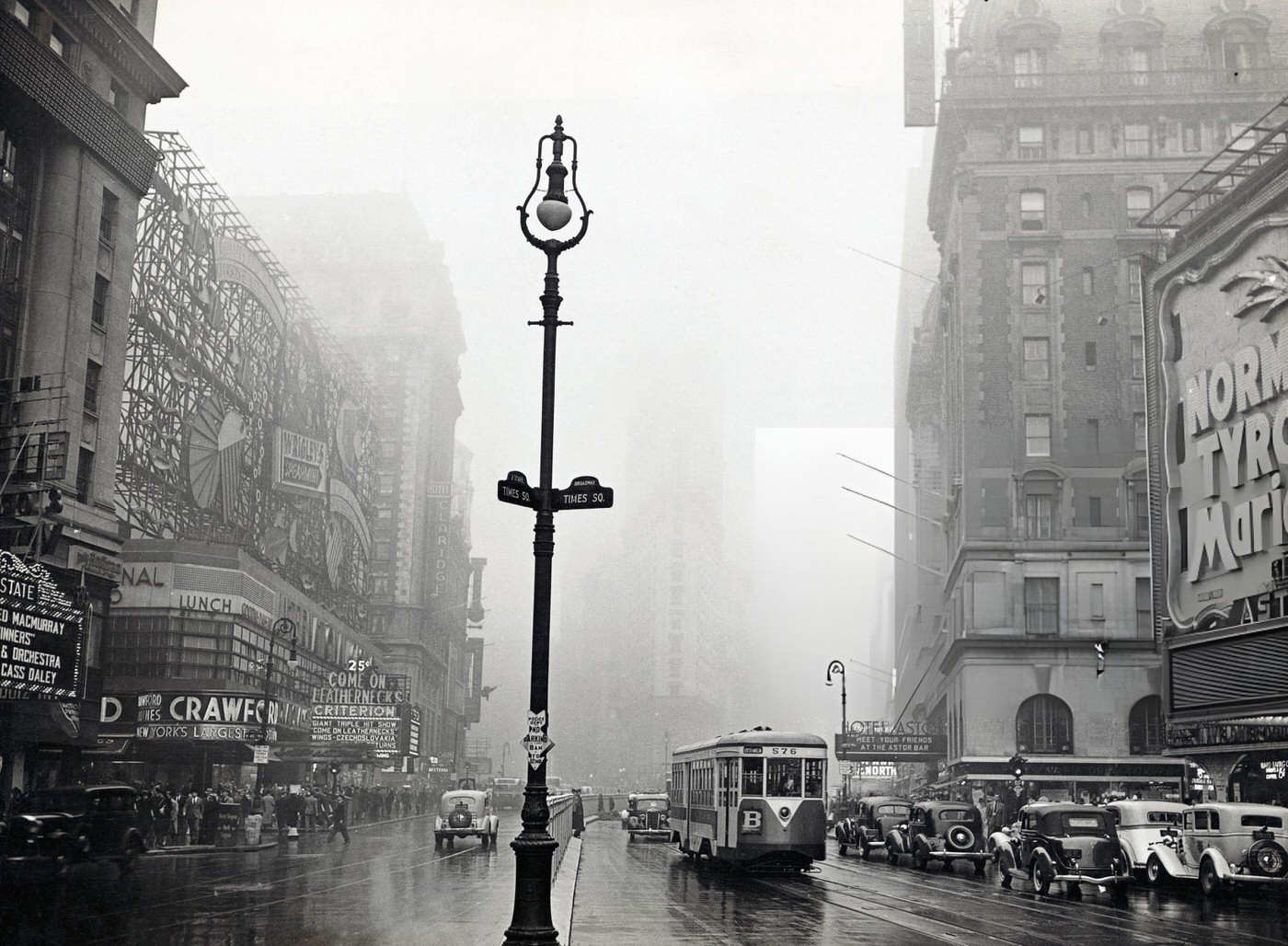
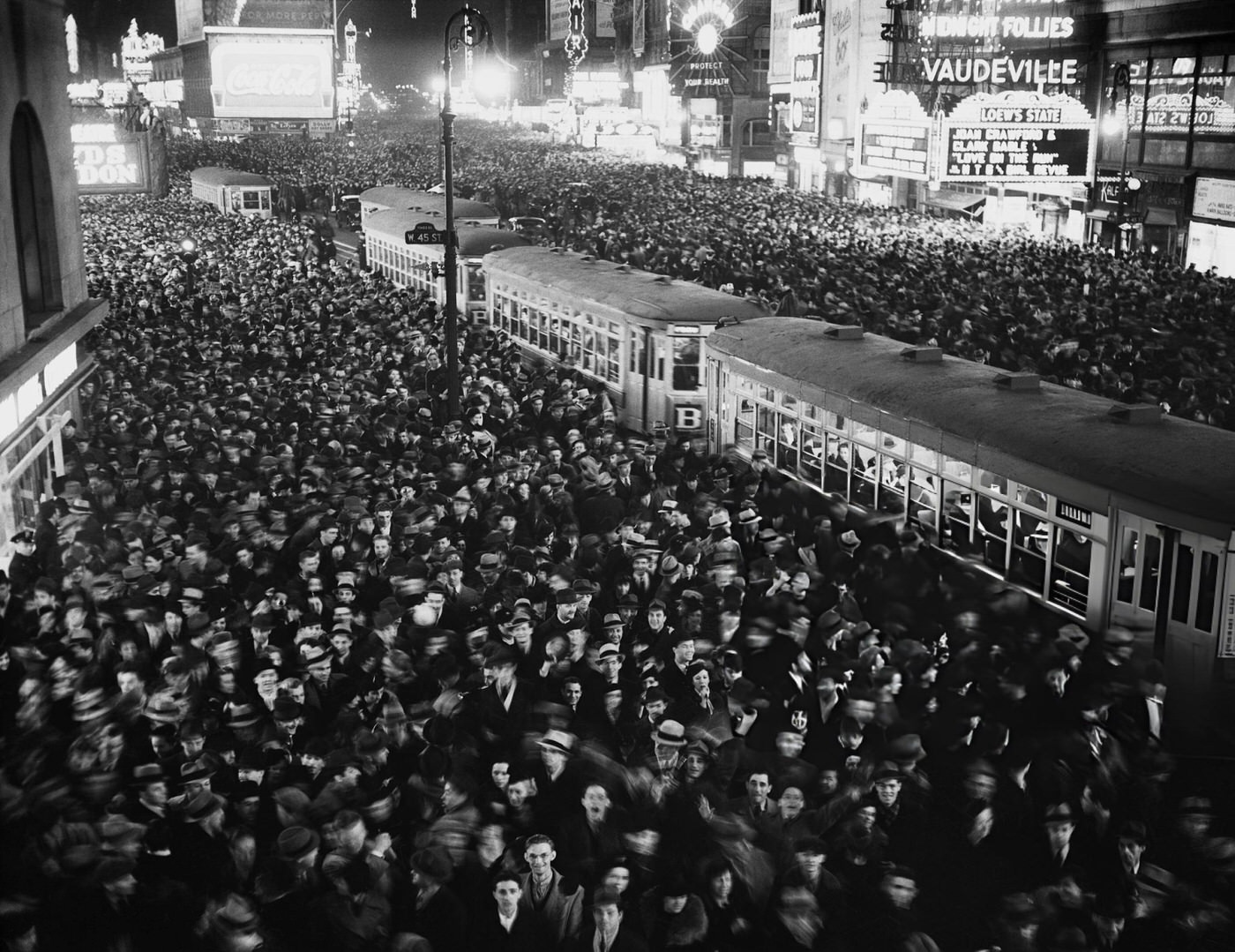
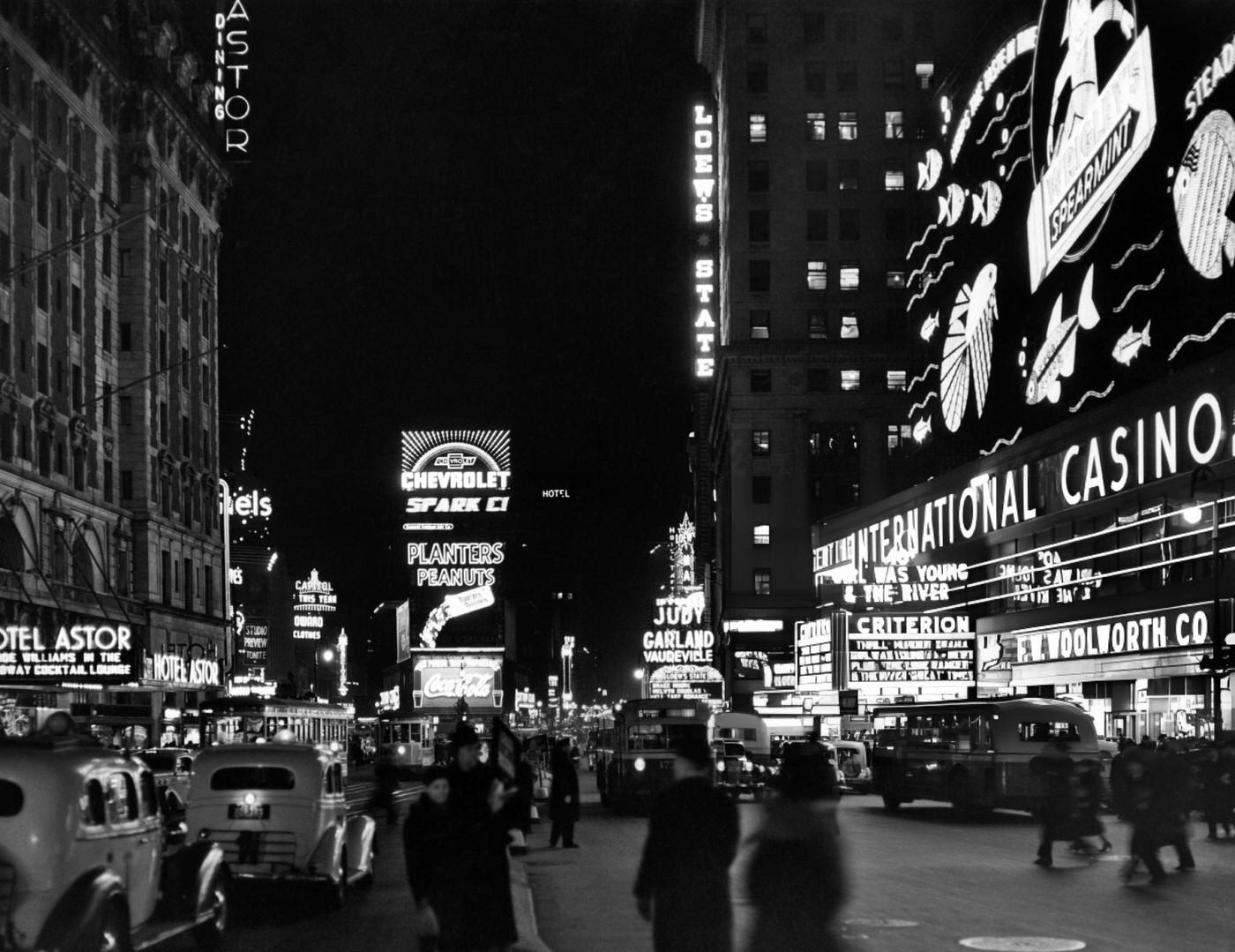
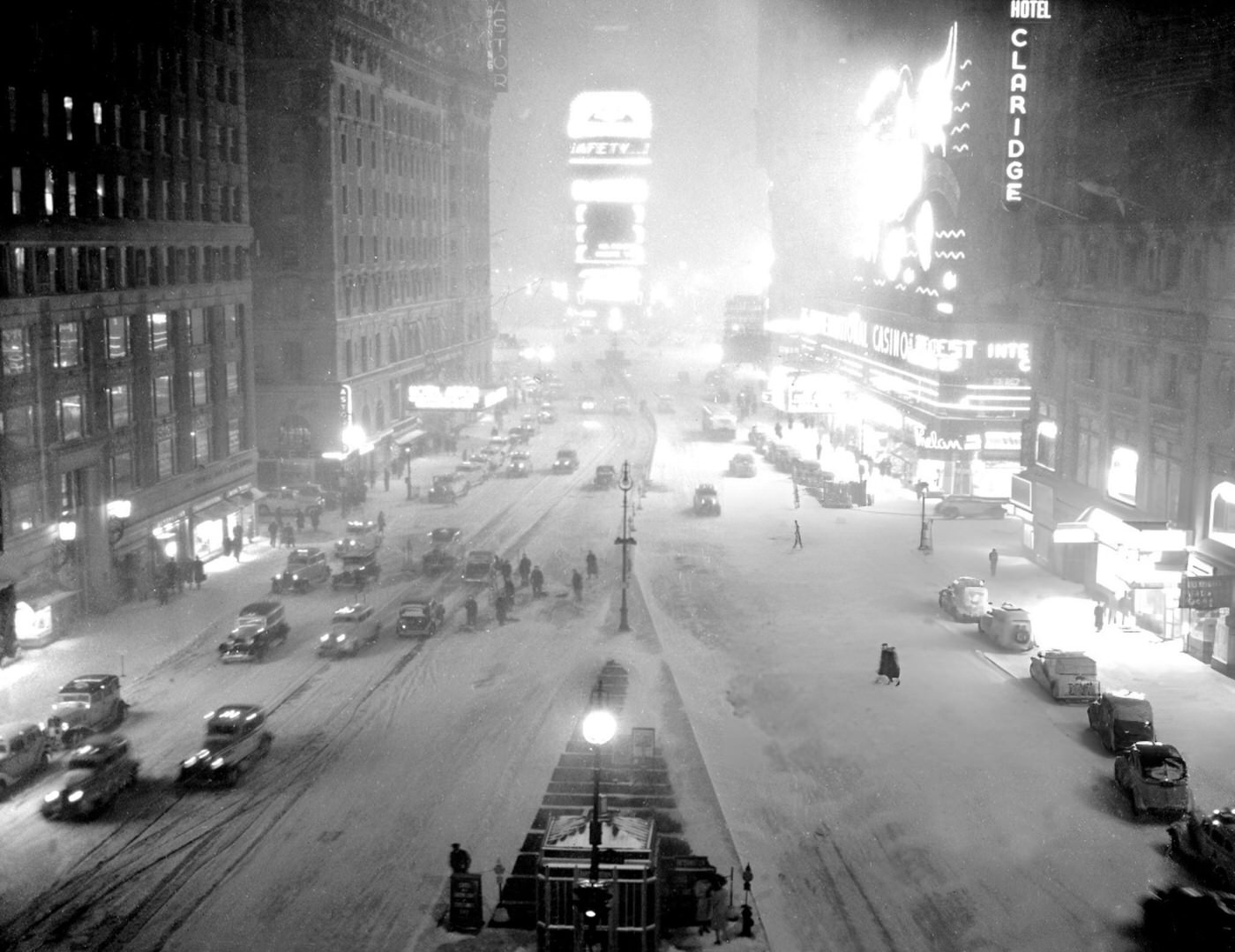

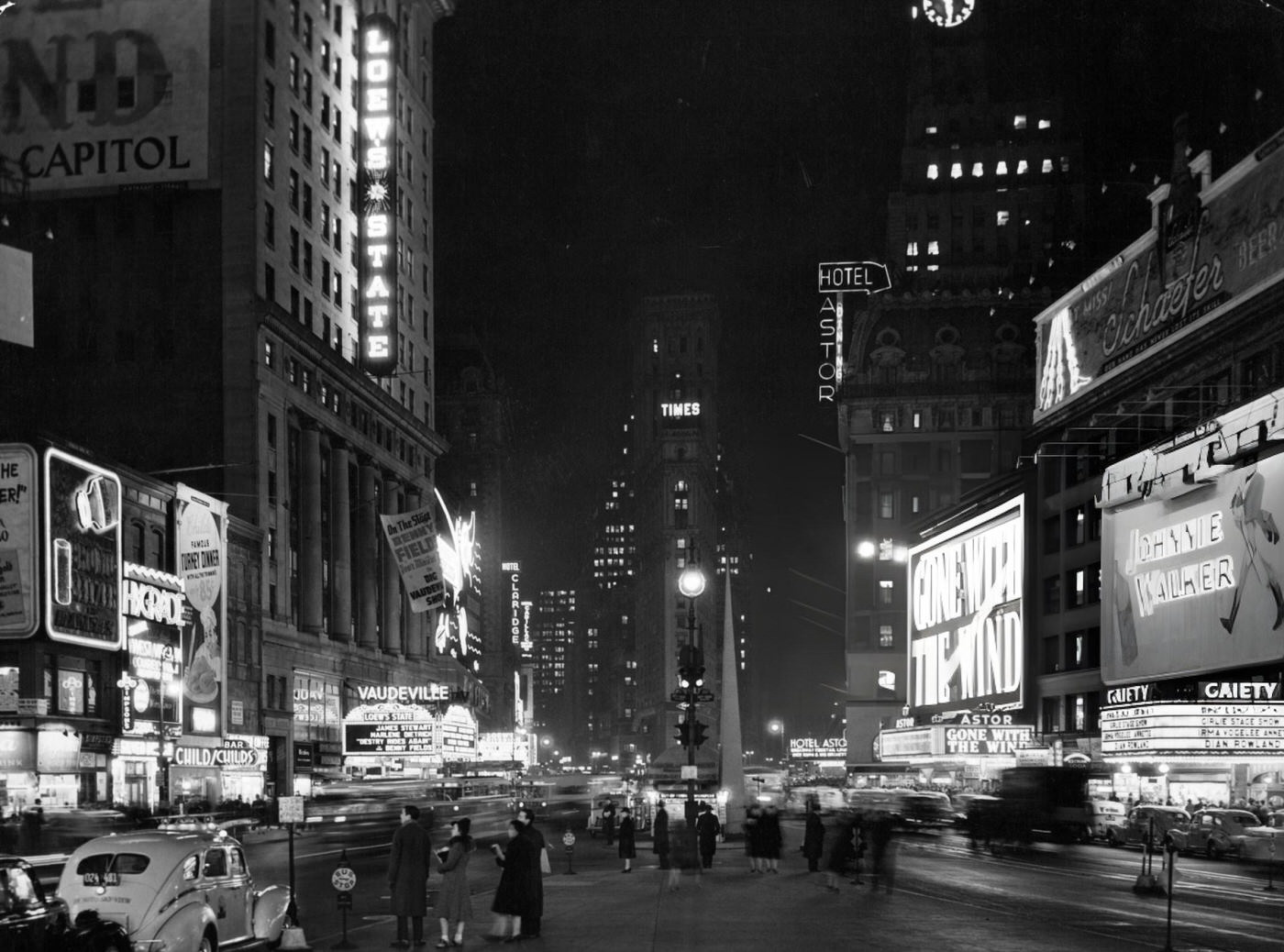
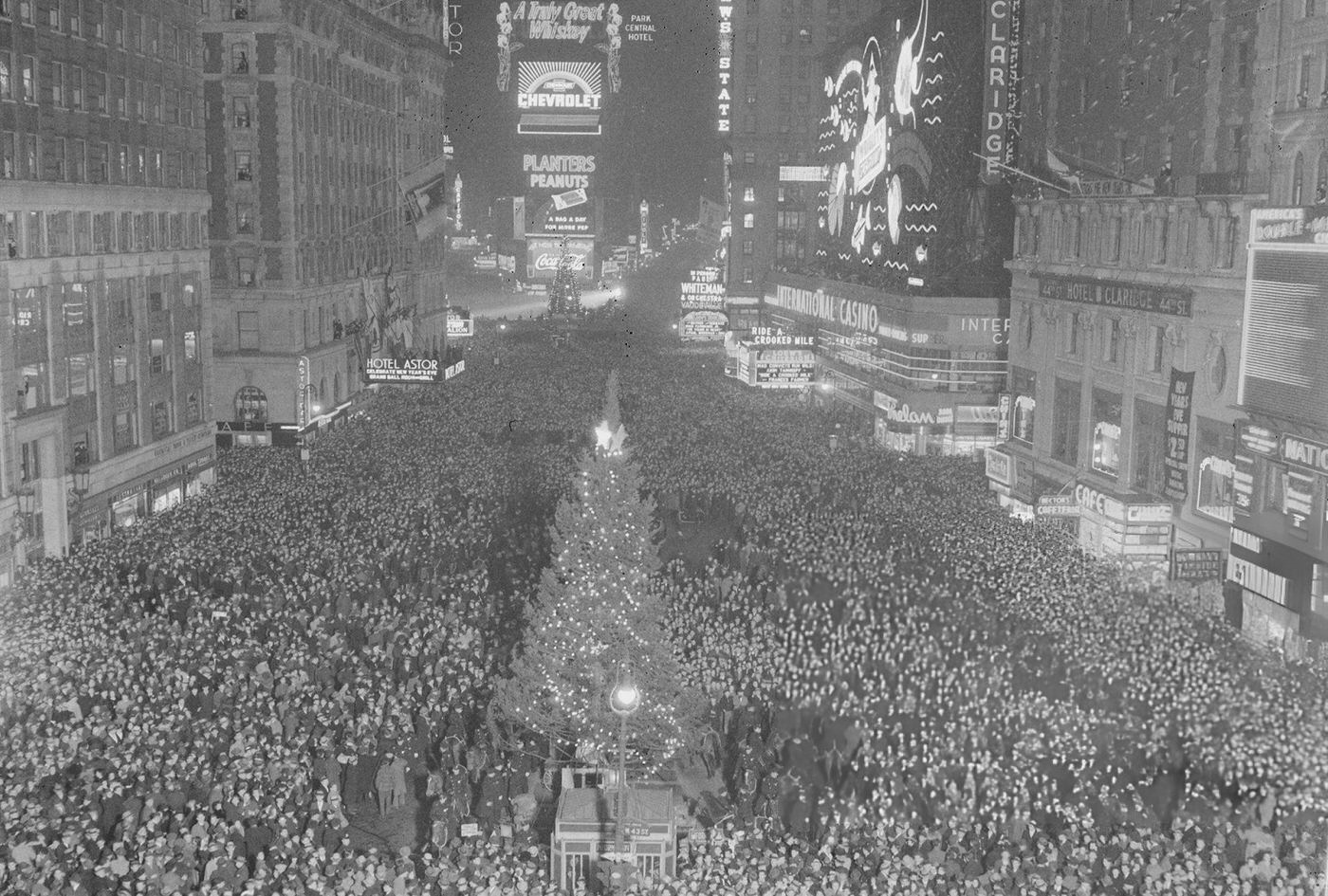
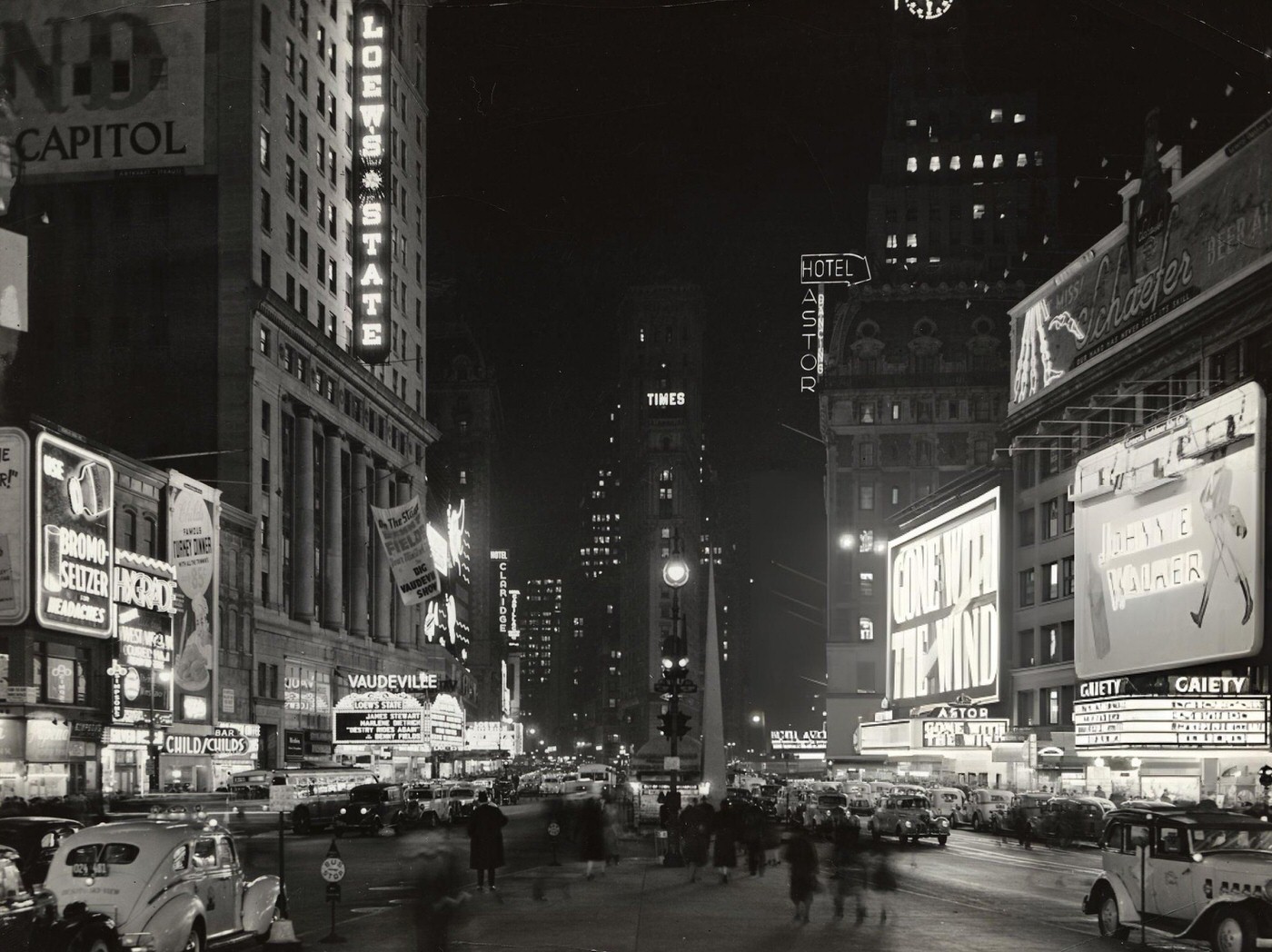
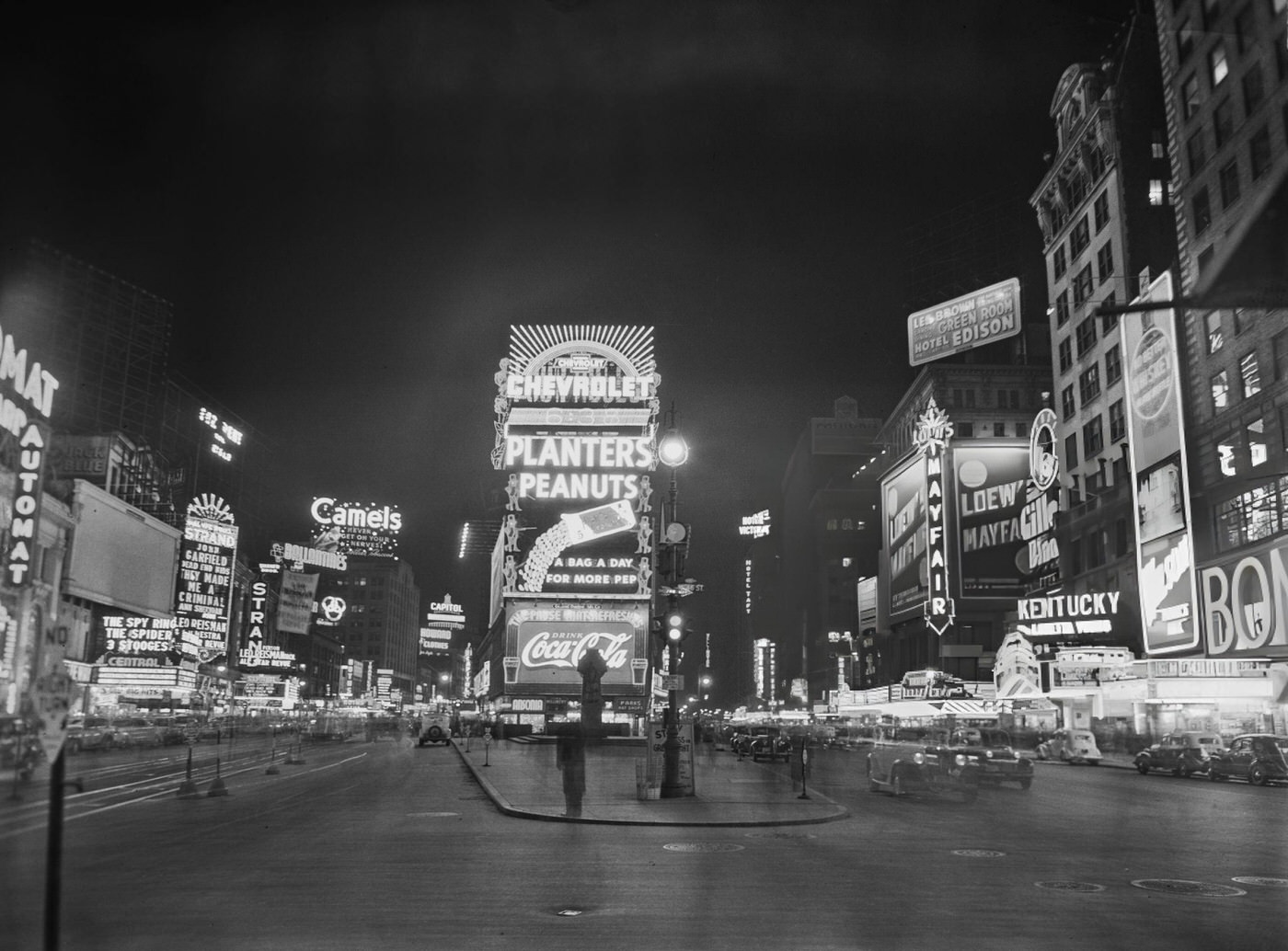
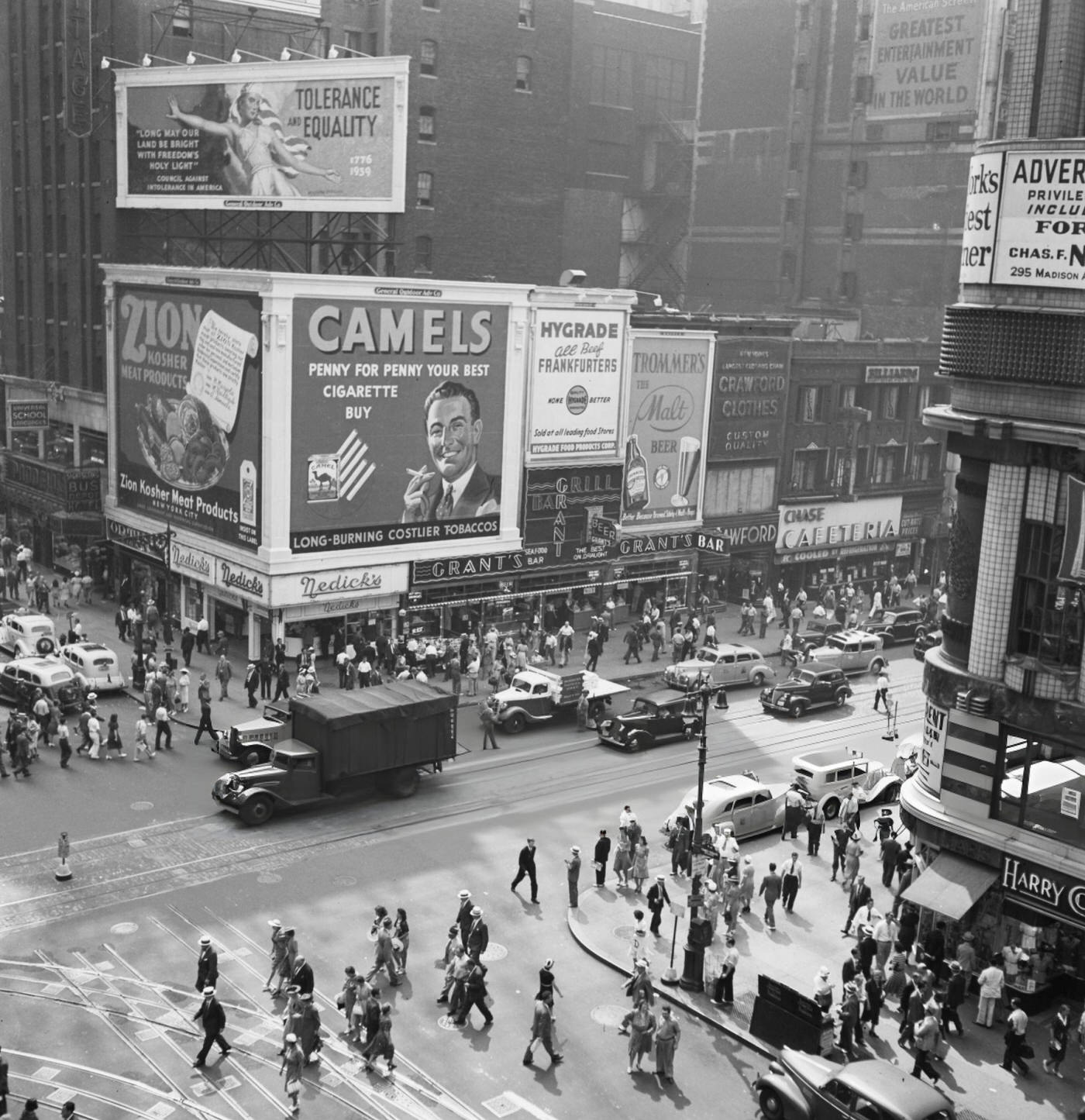
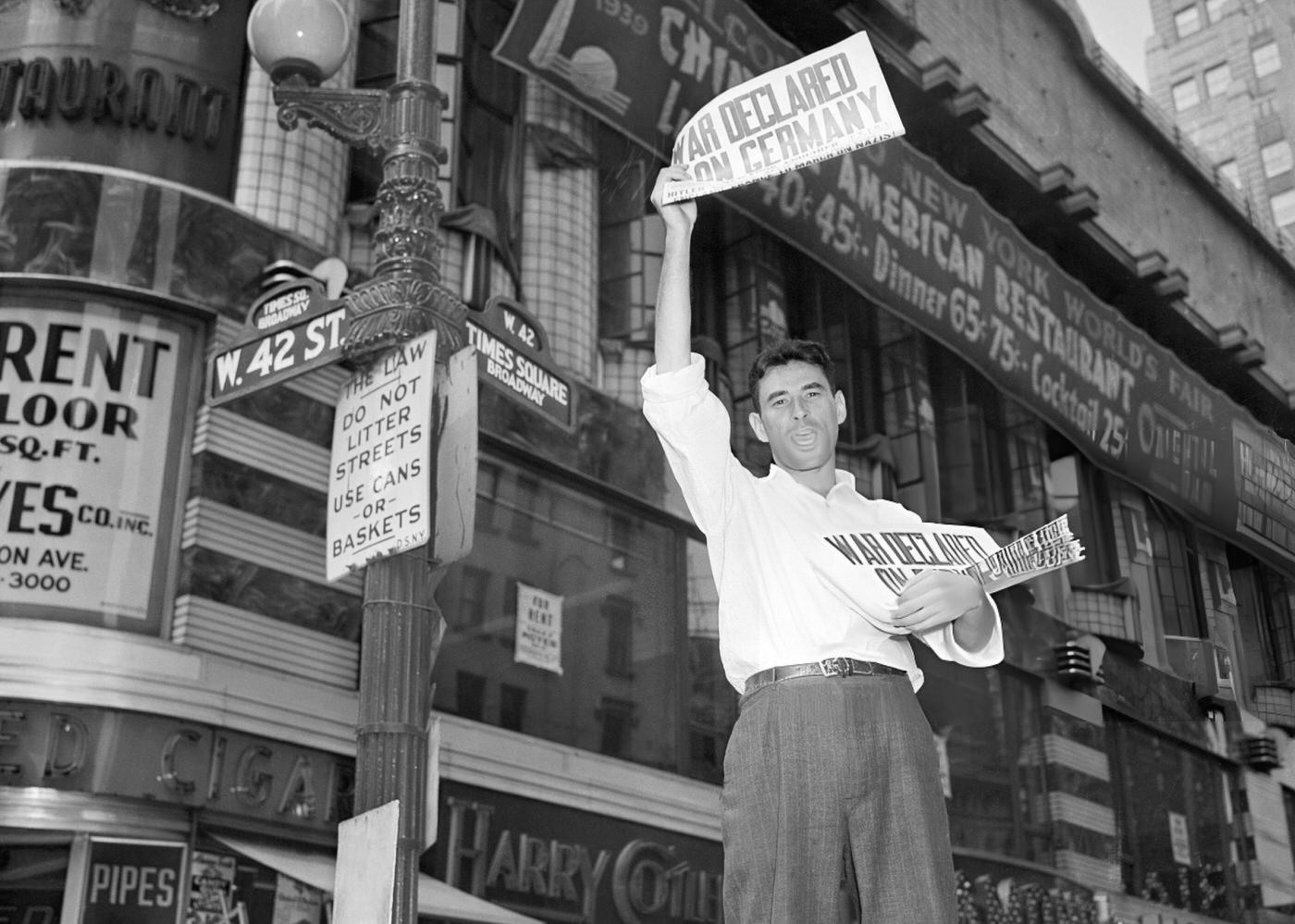
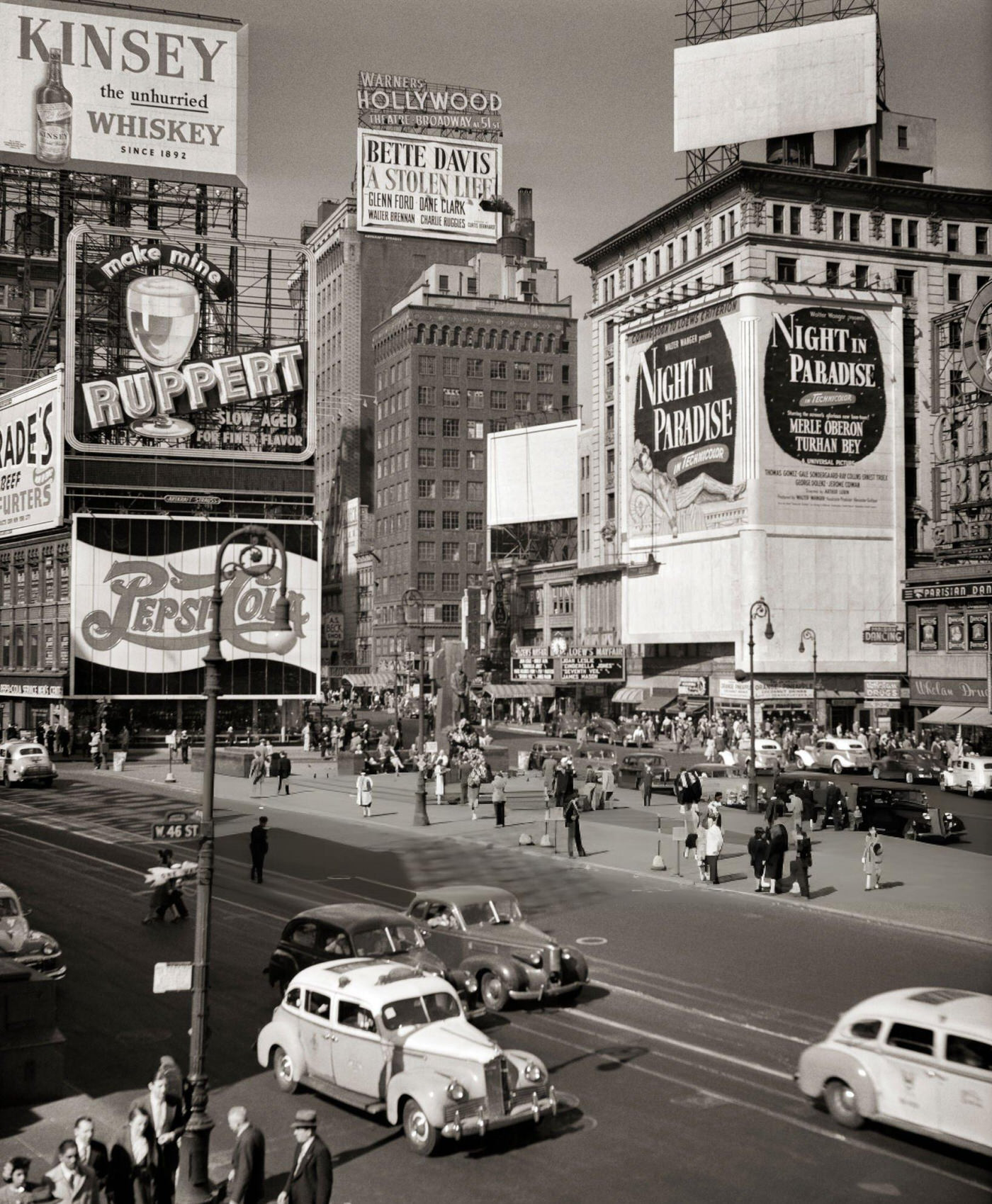
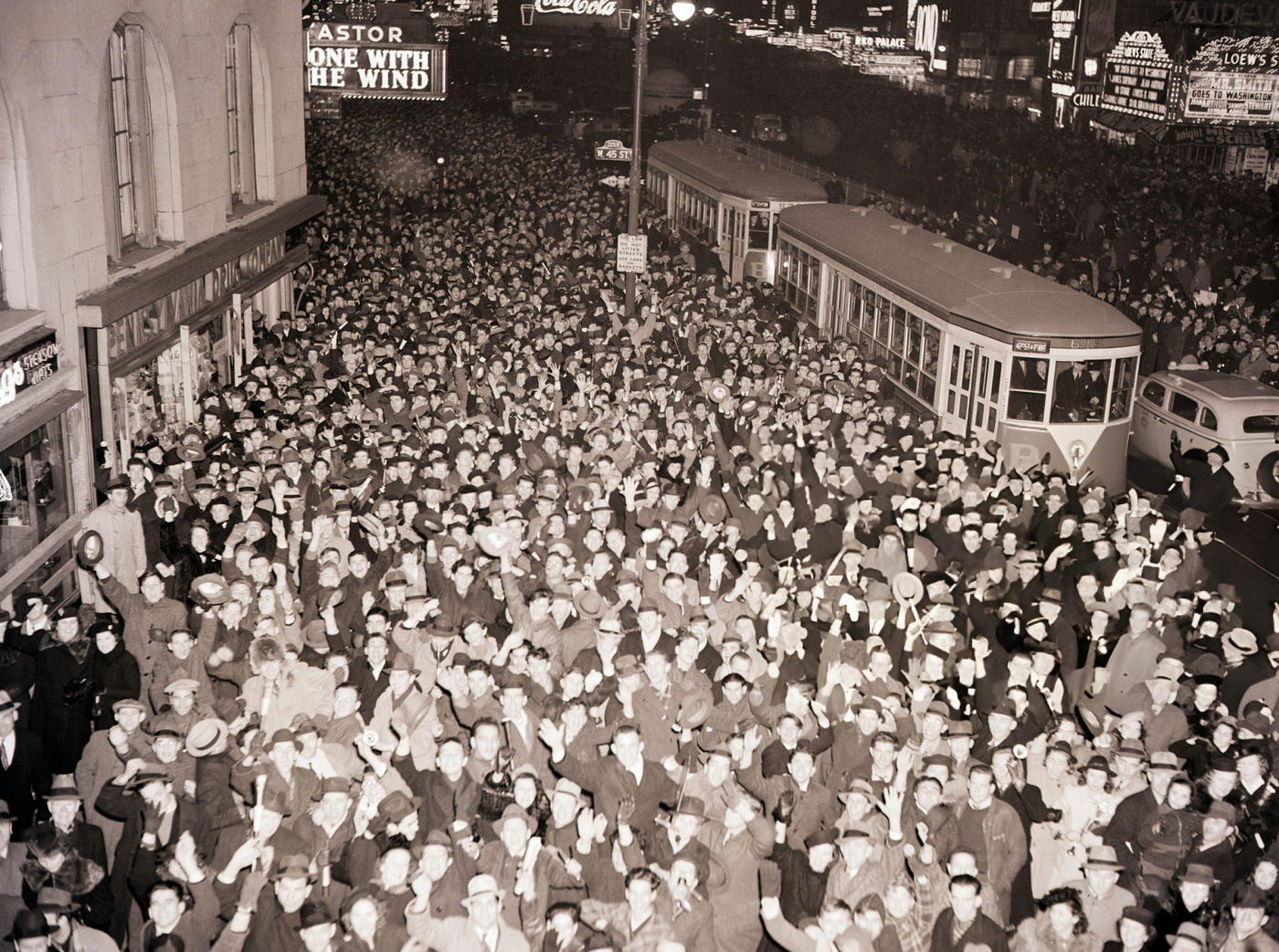
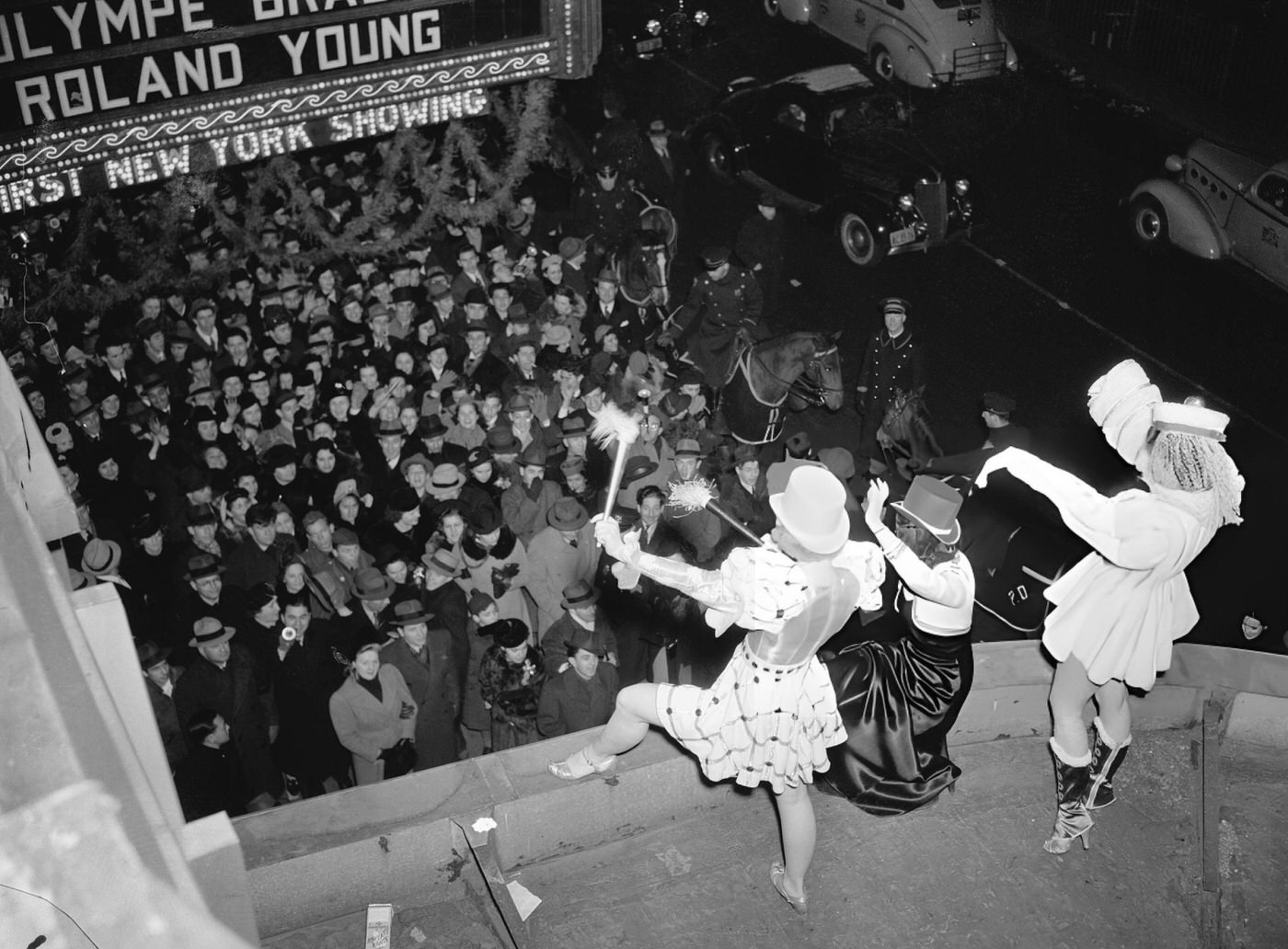
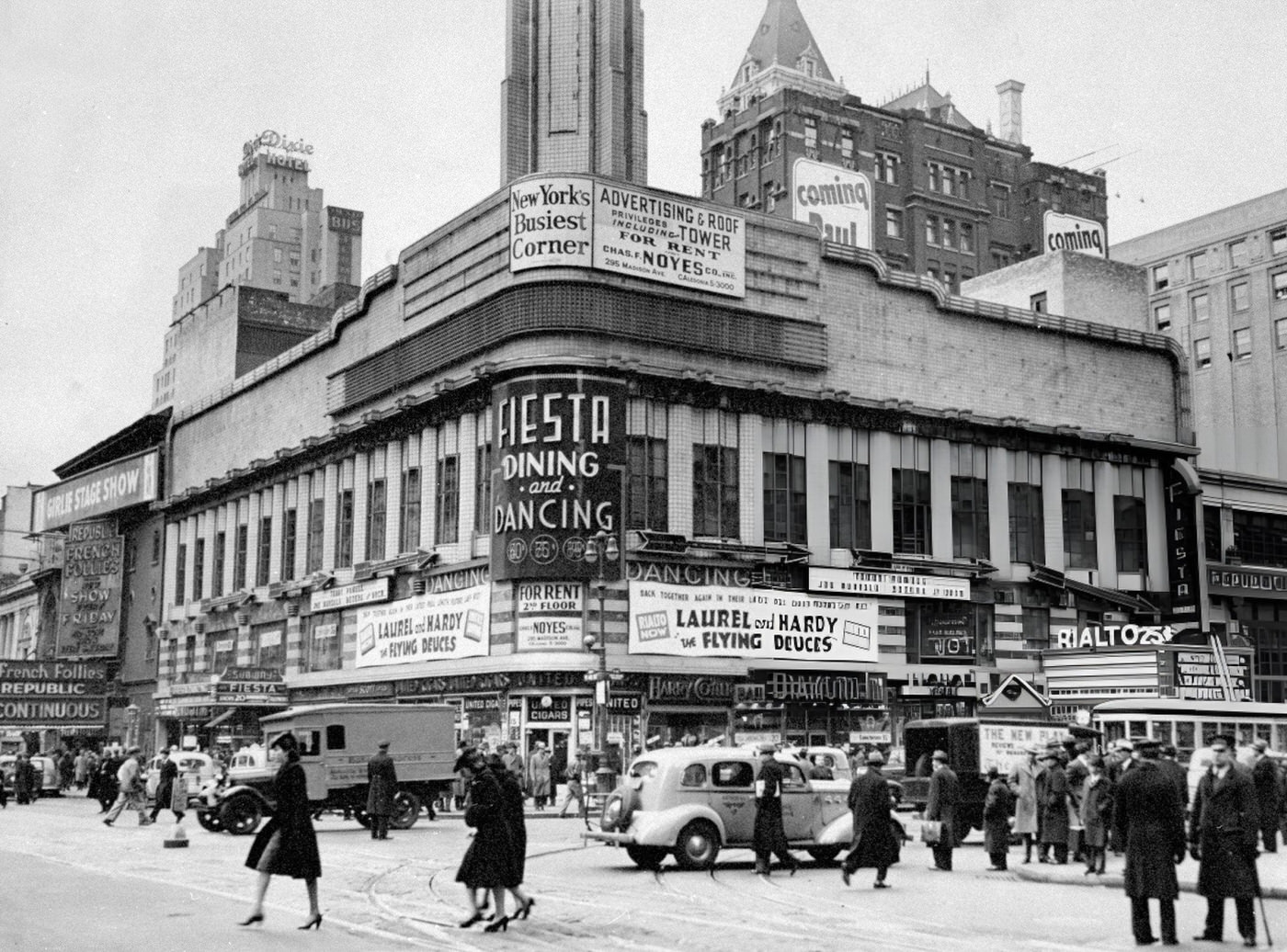
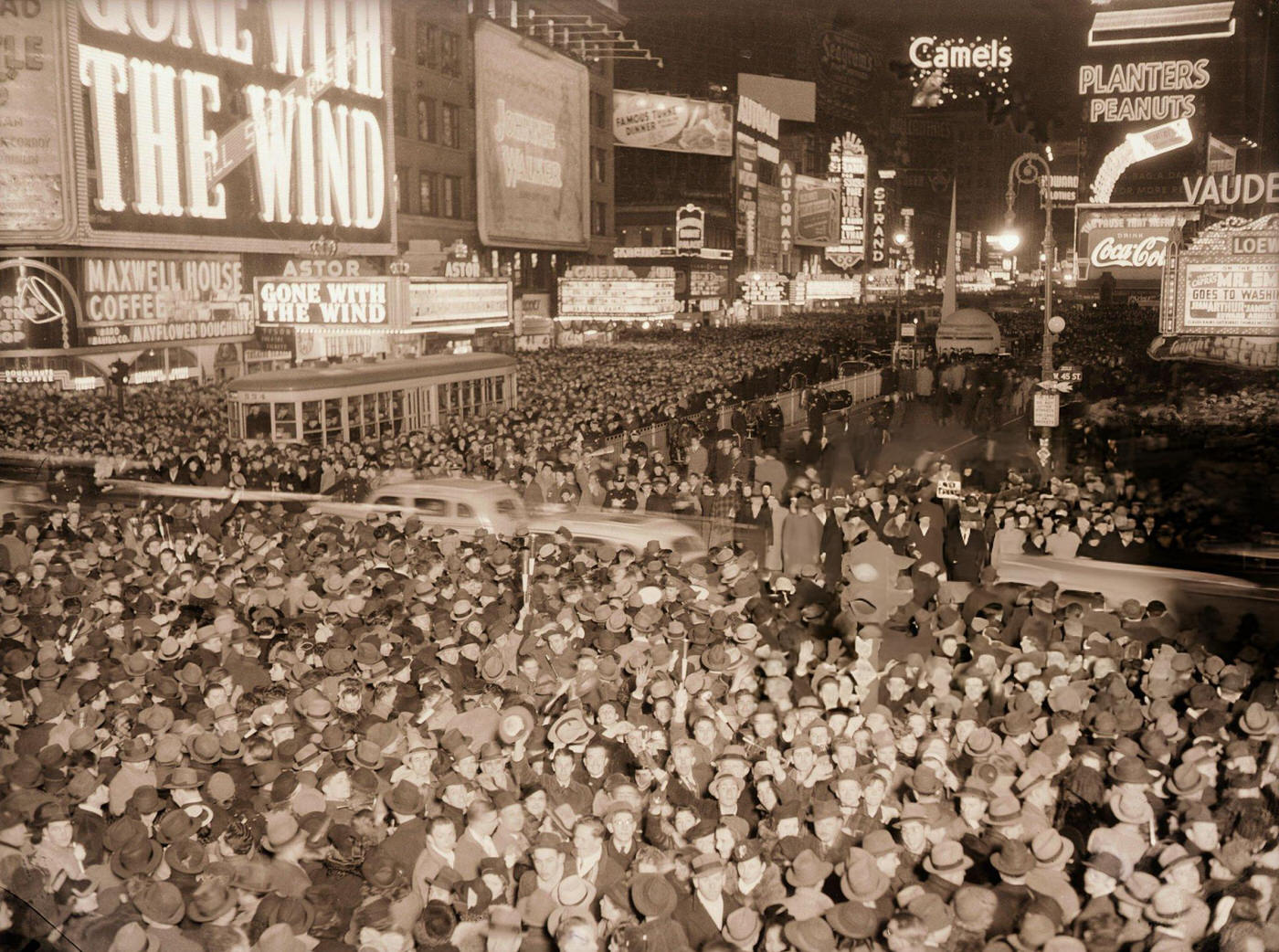

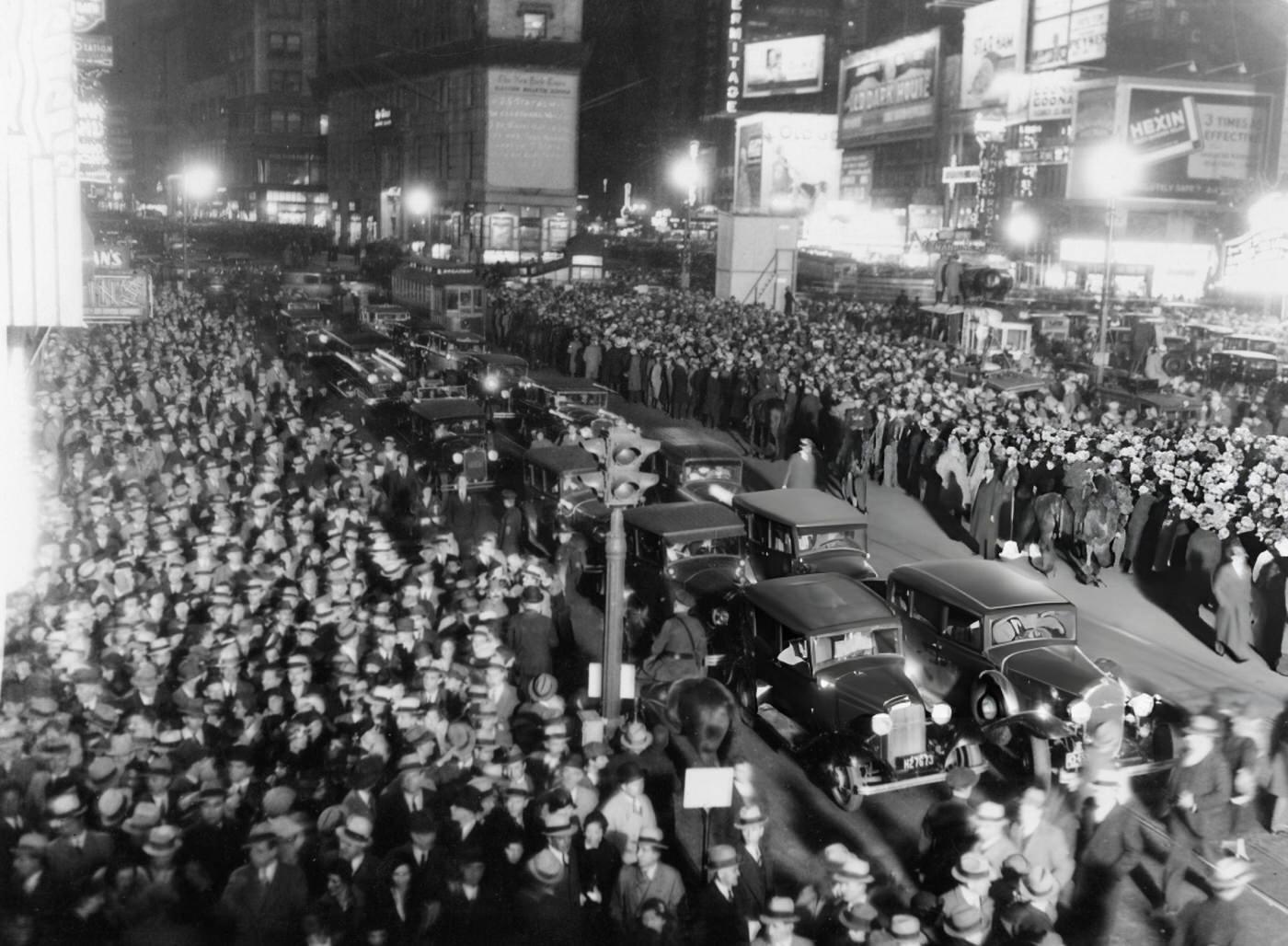


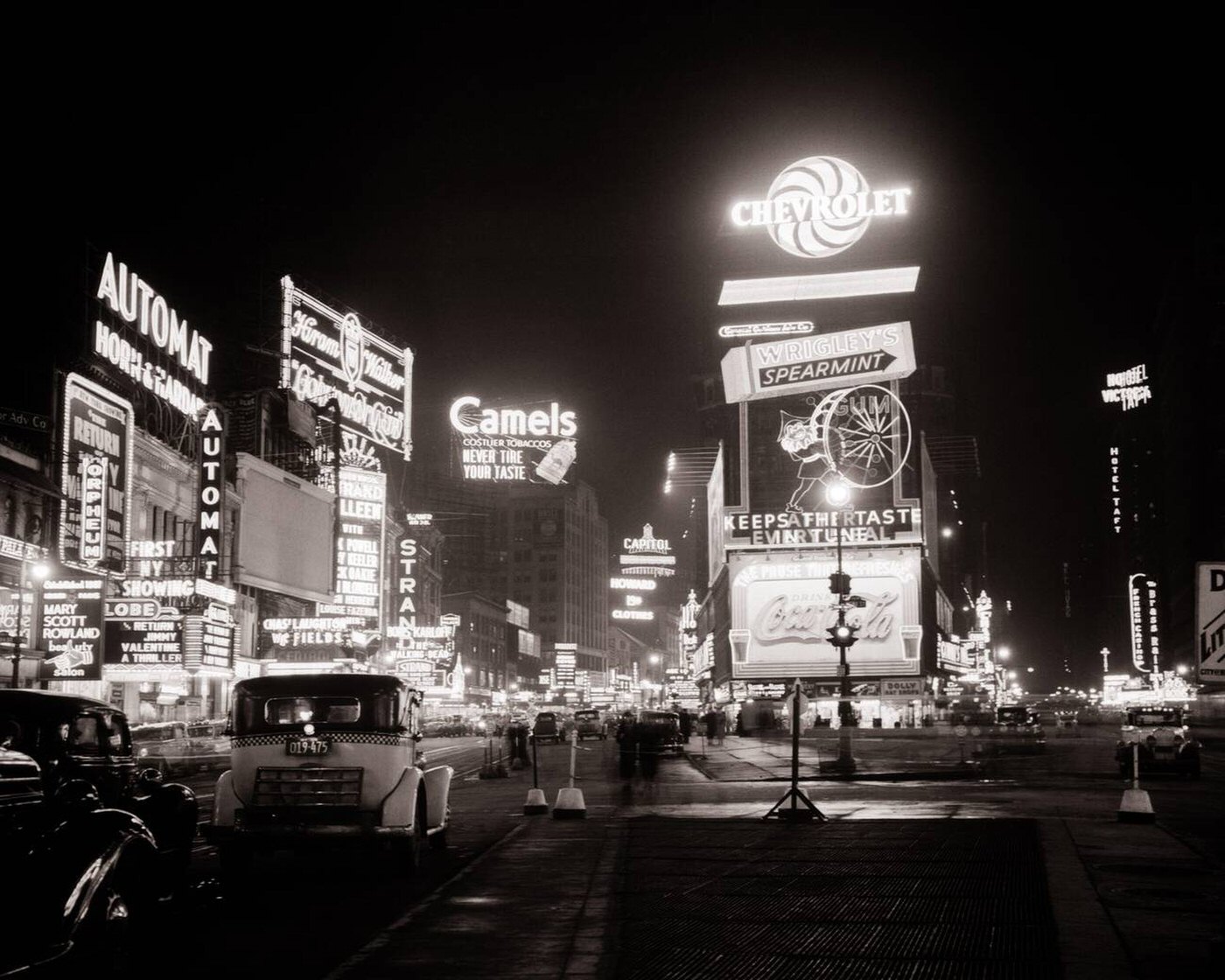
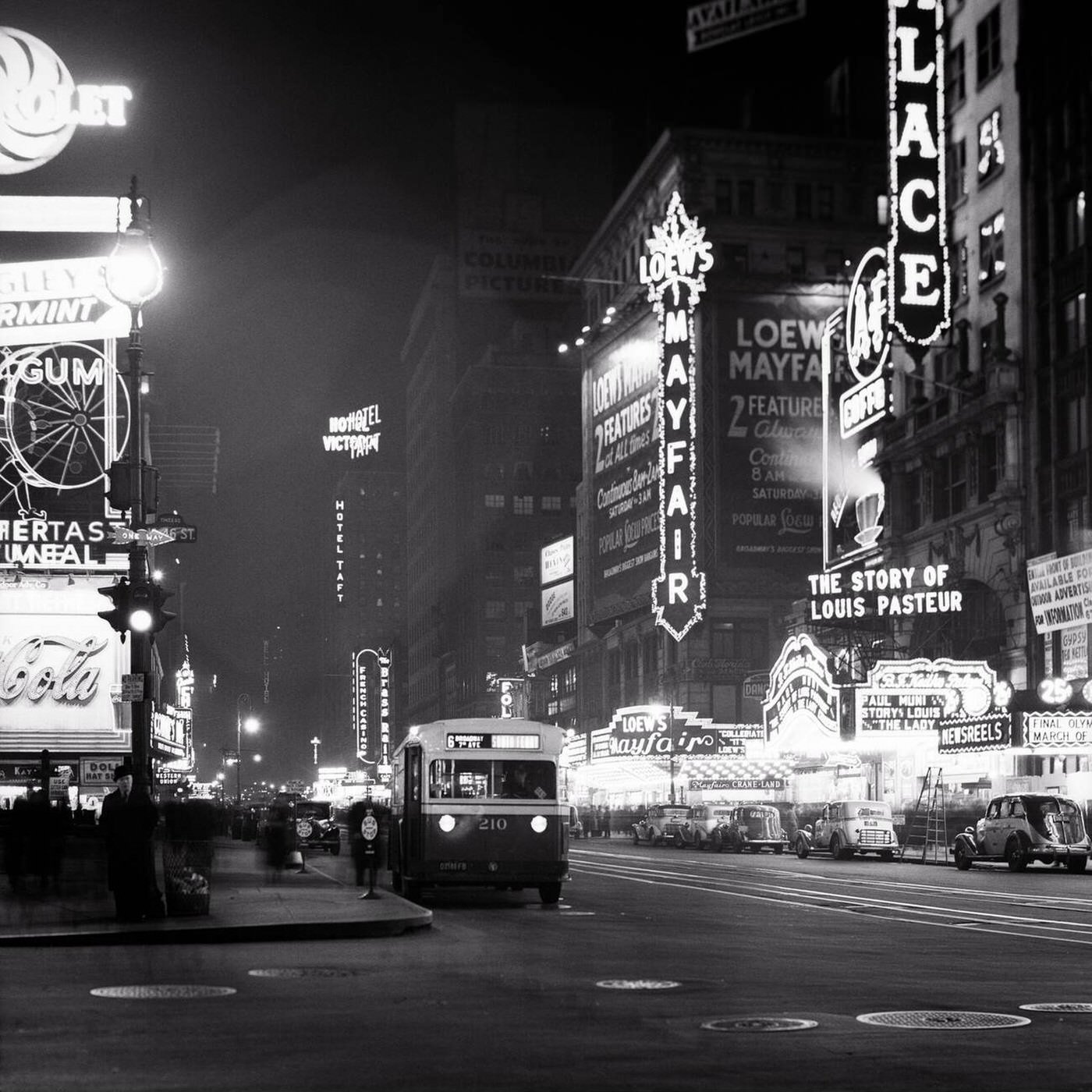

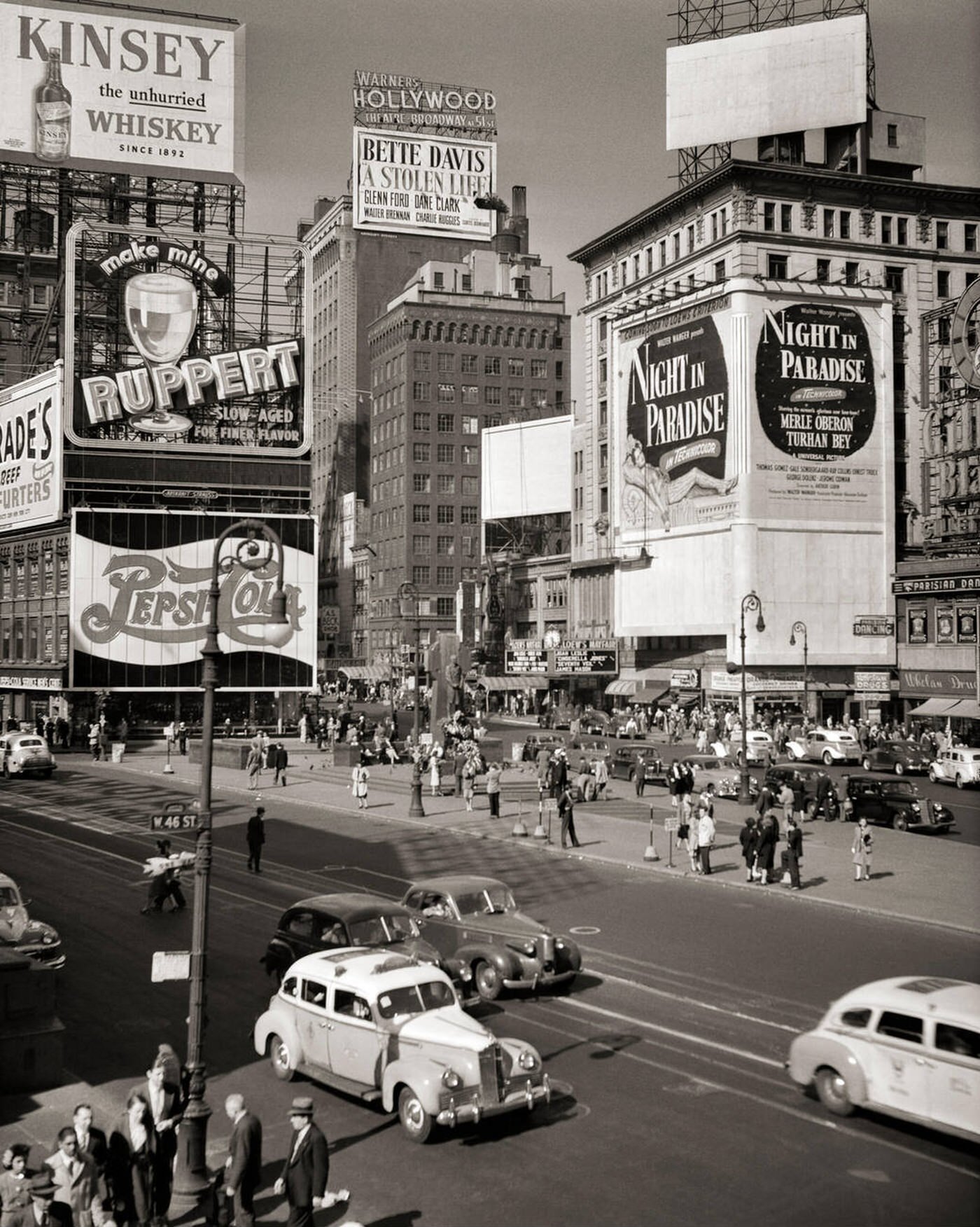
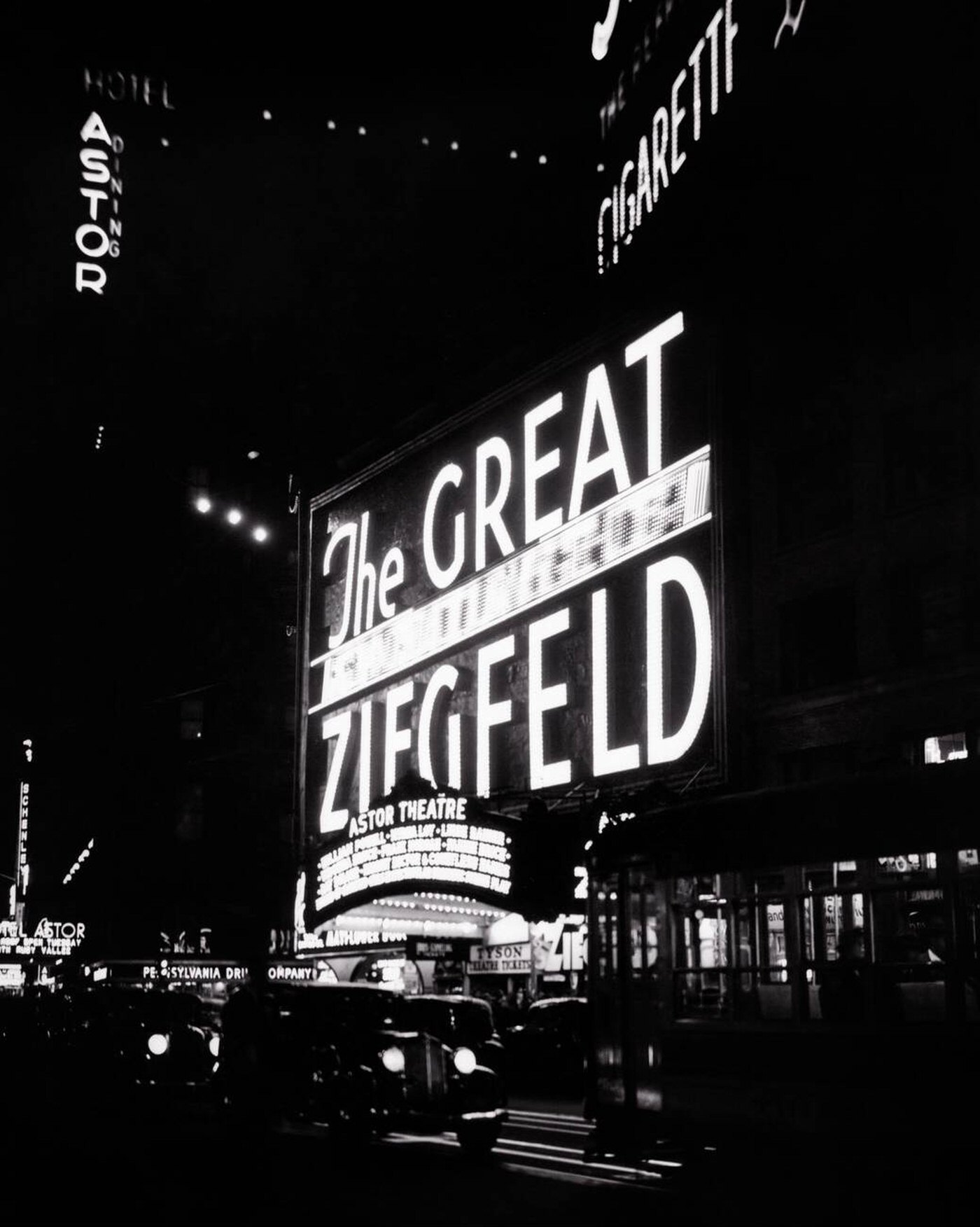
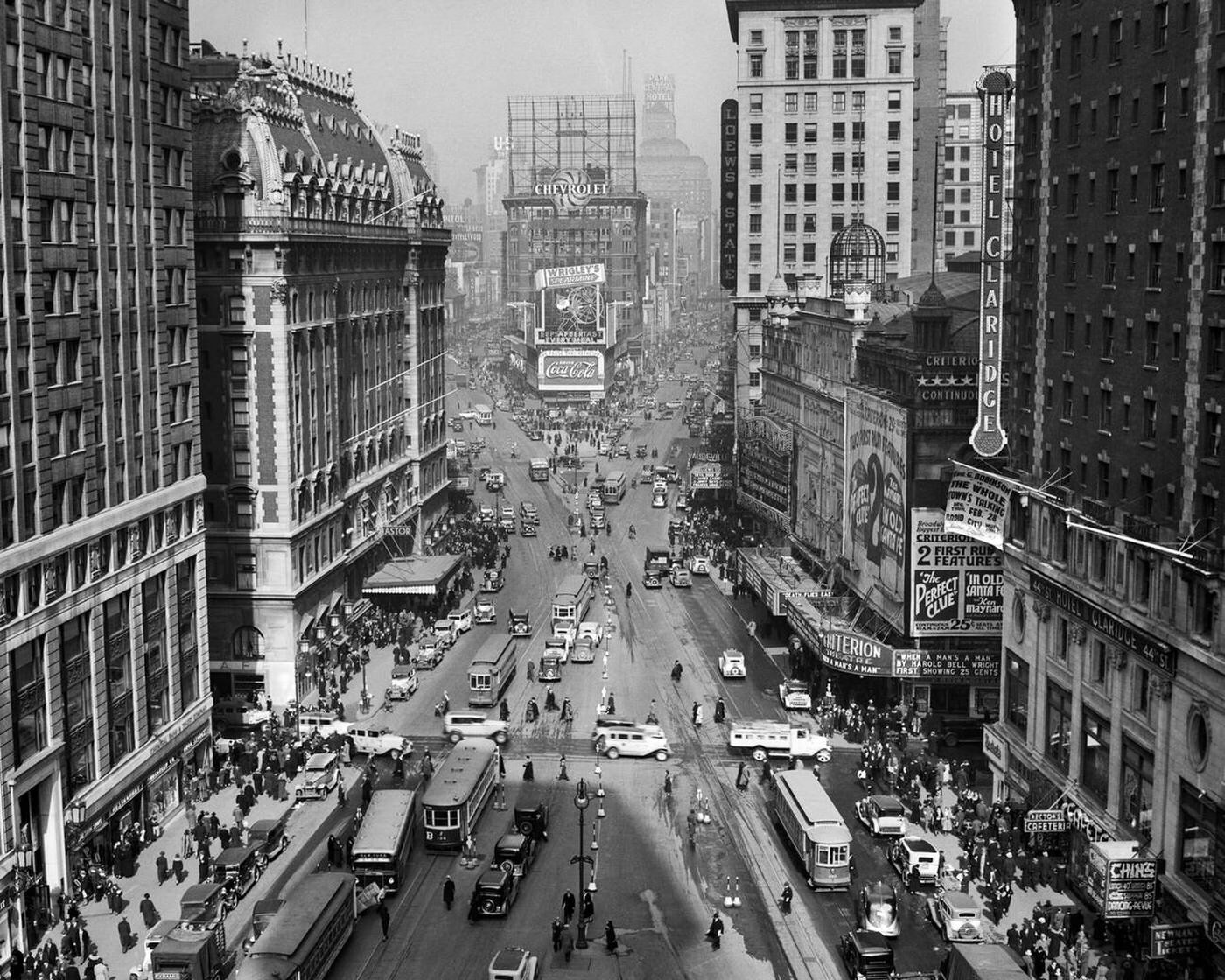
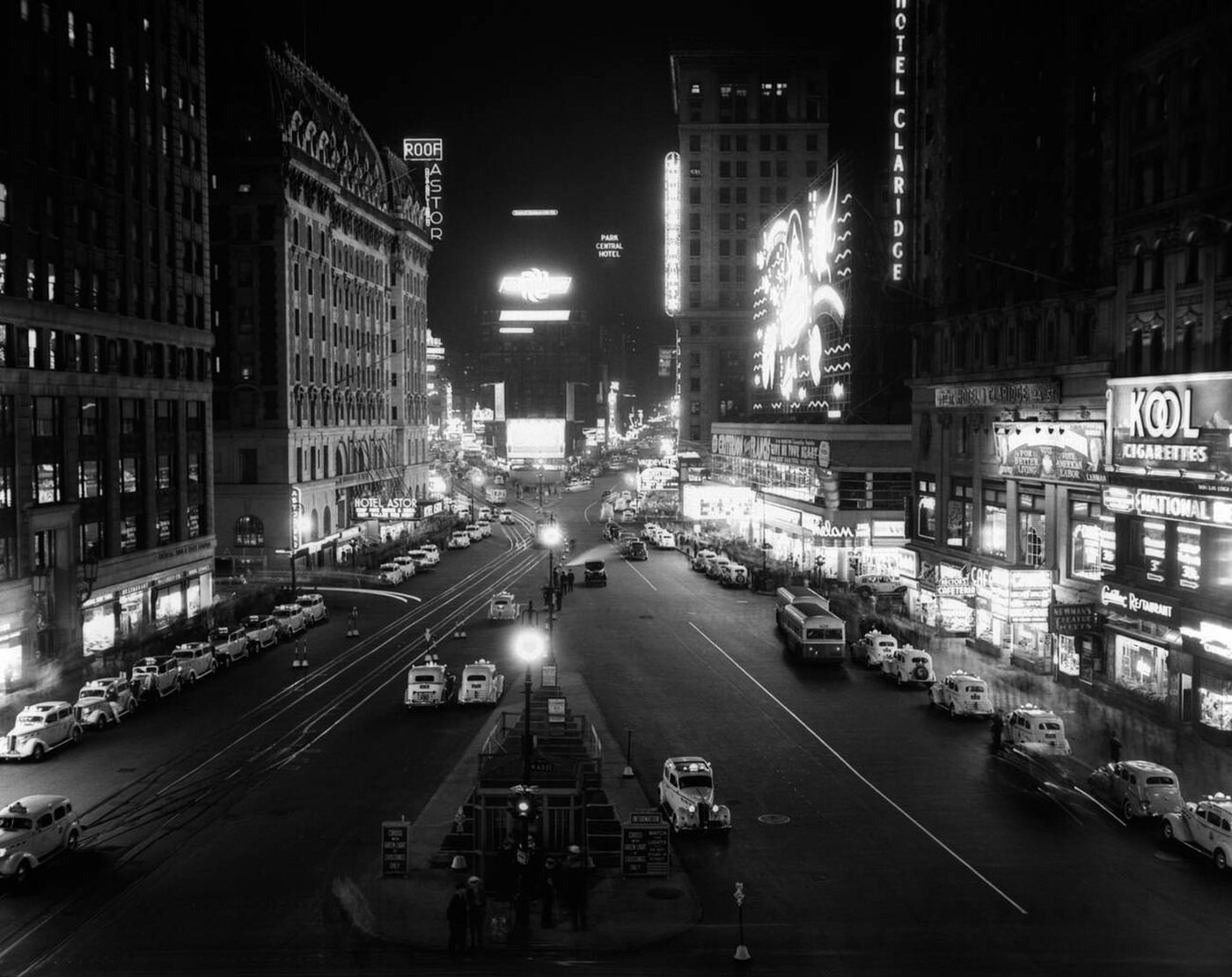


GIPHY App Key not set. Please check settings